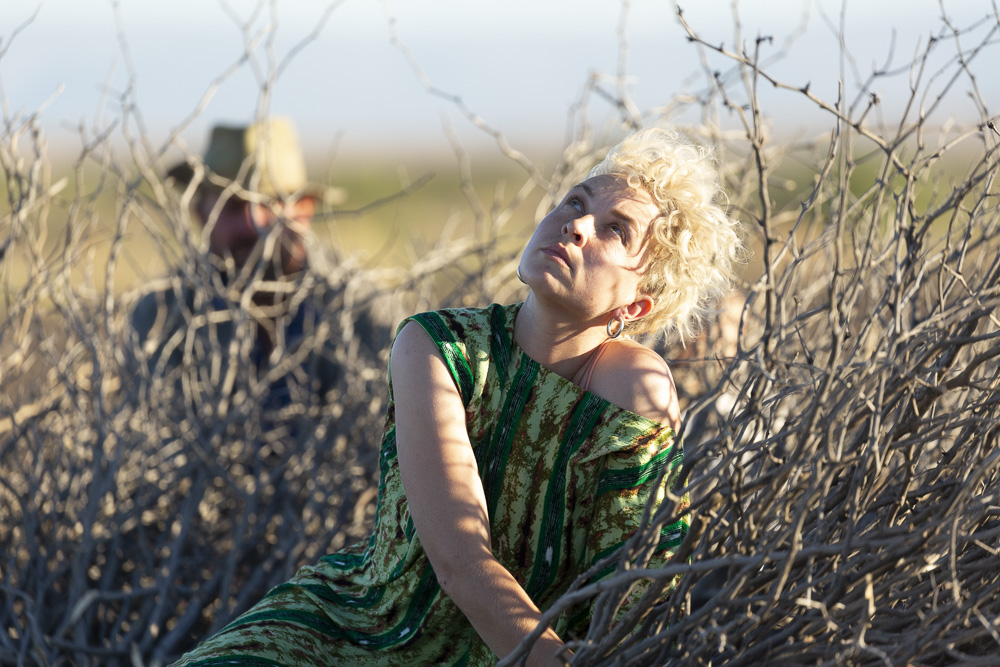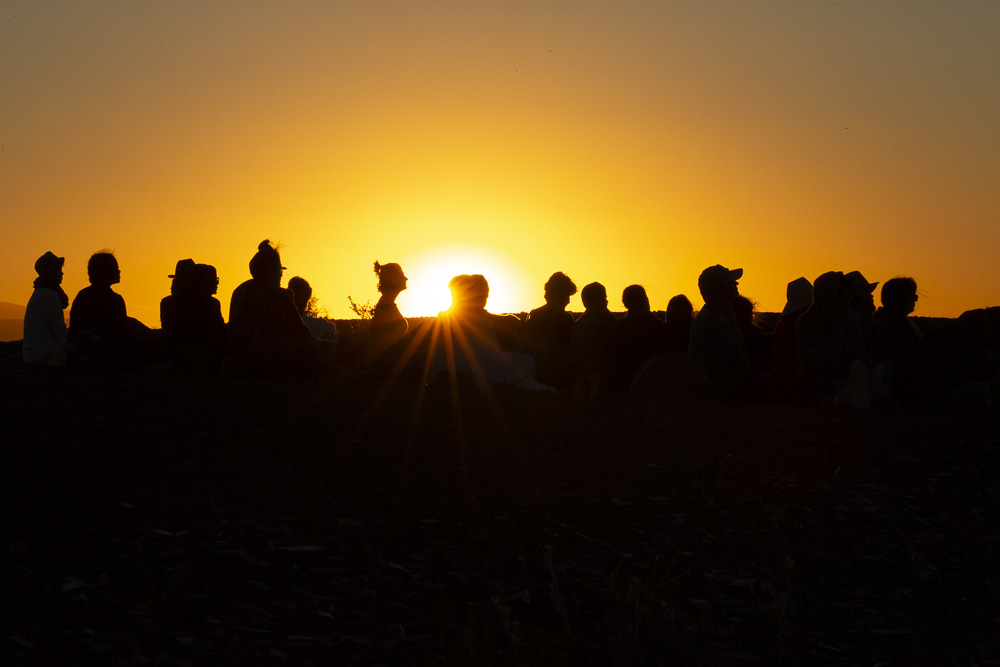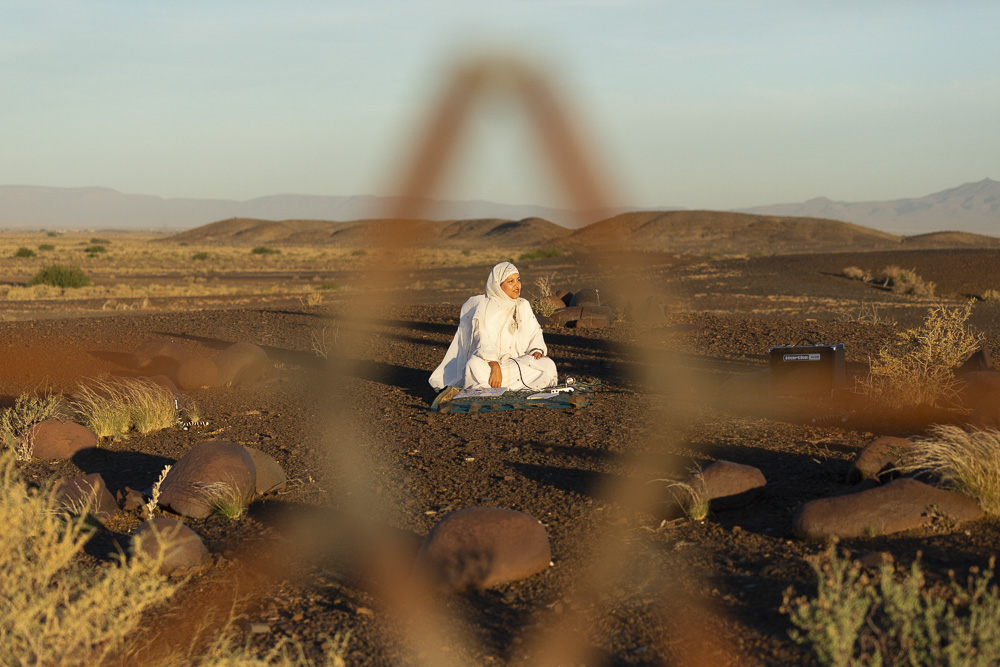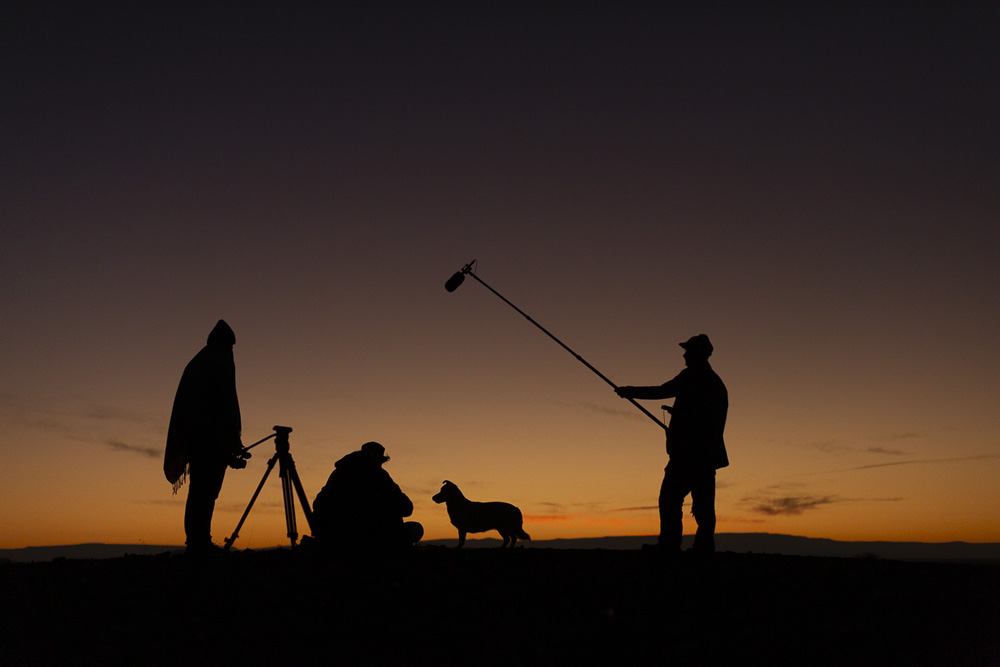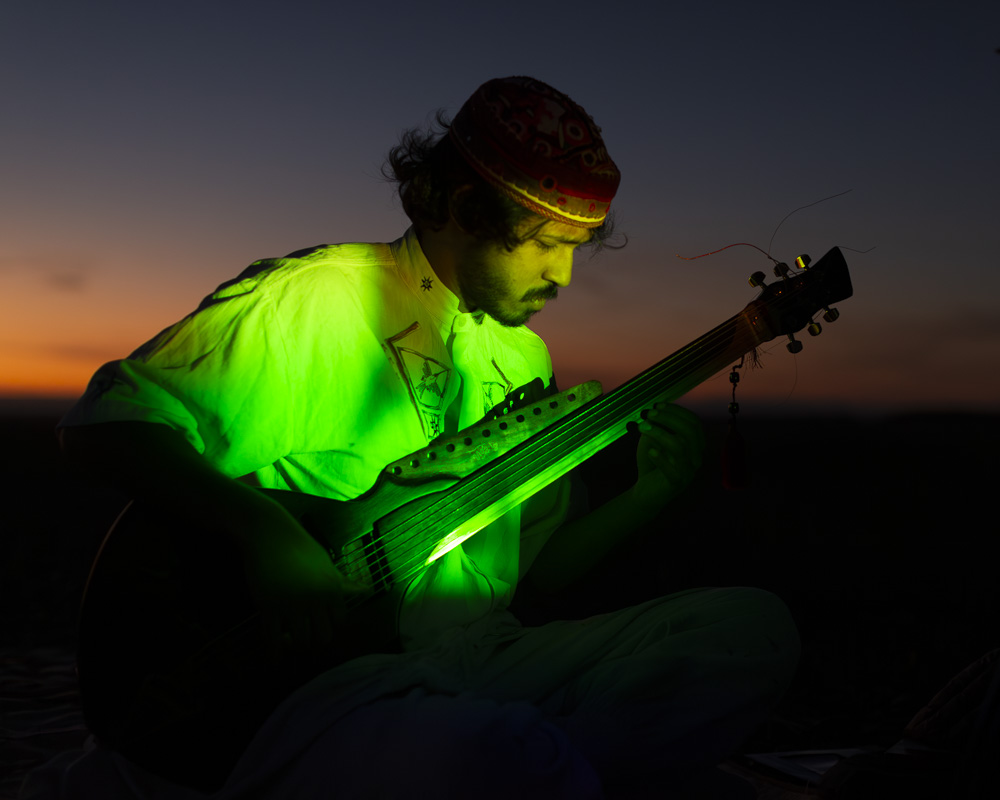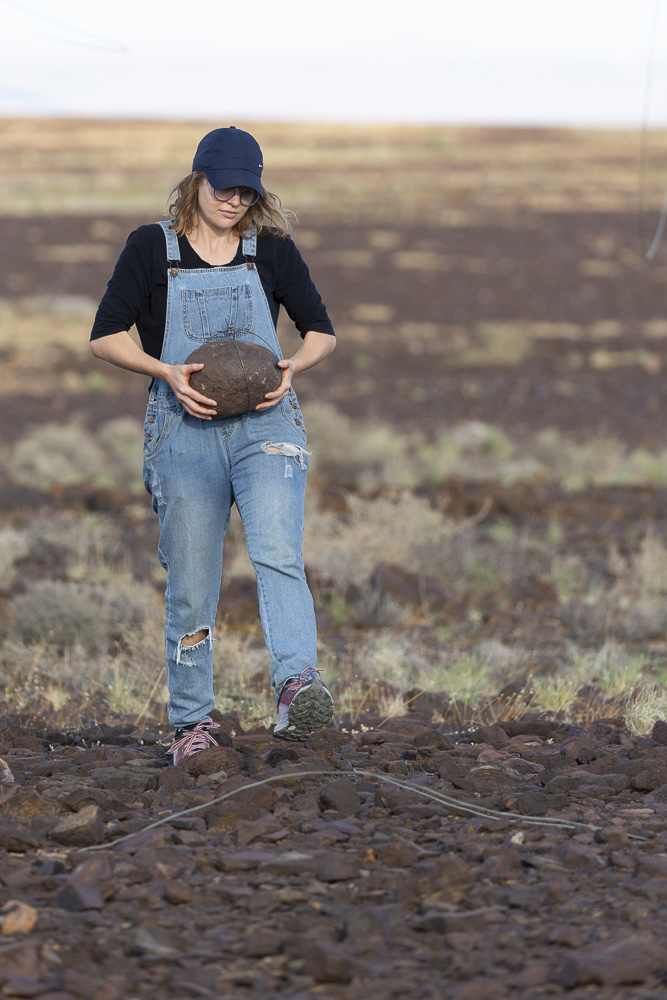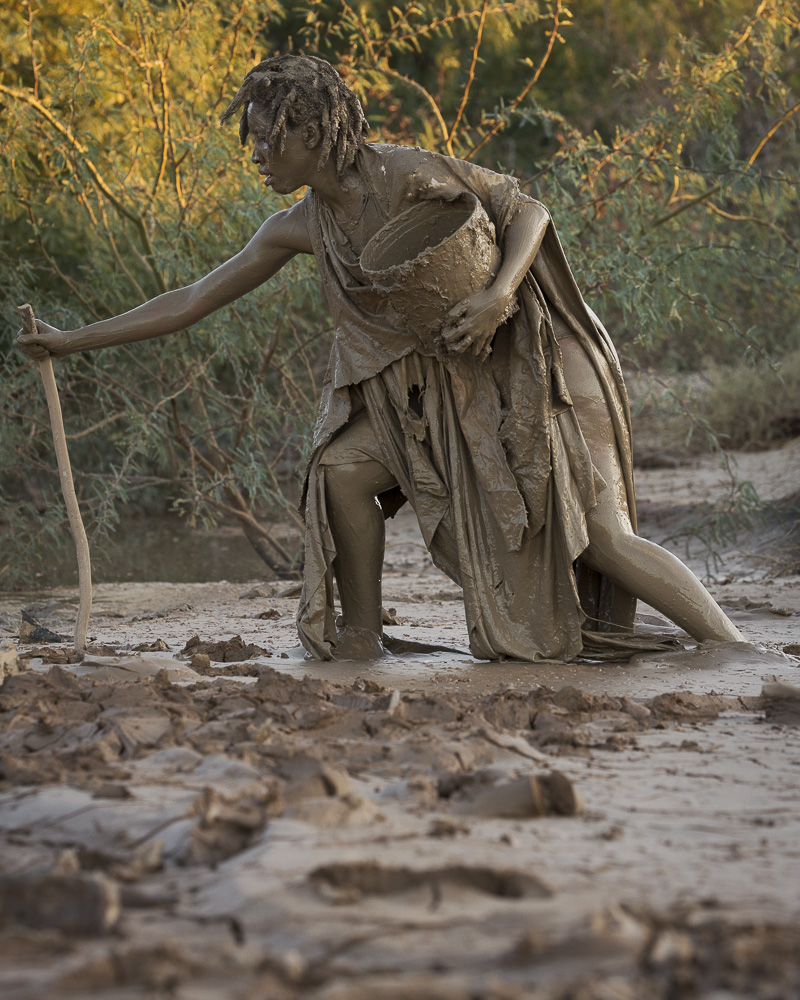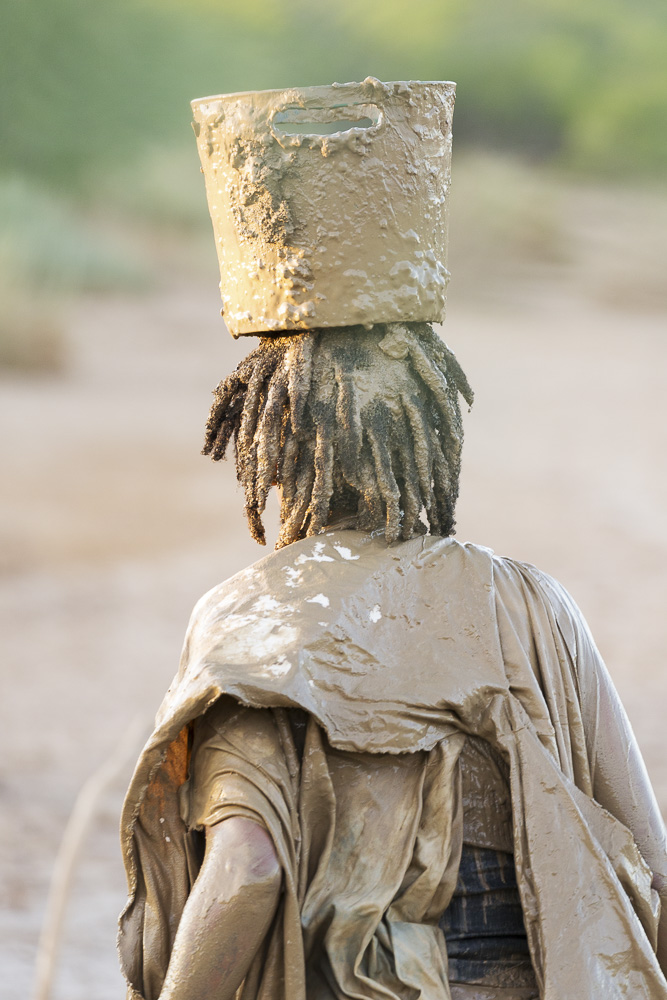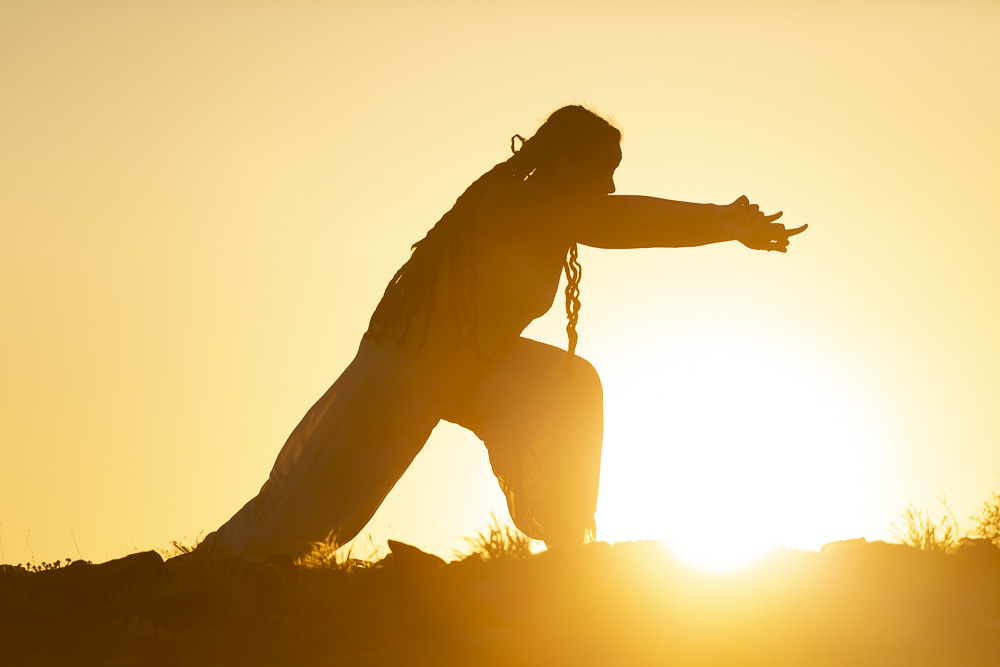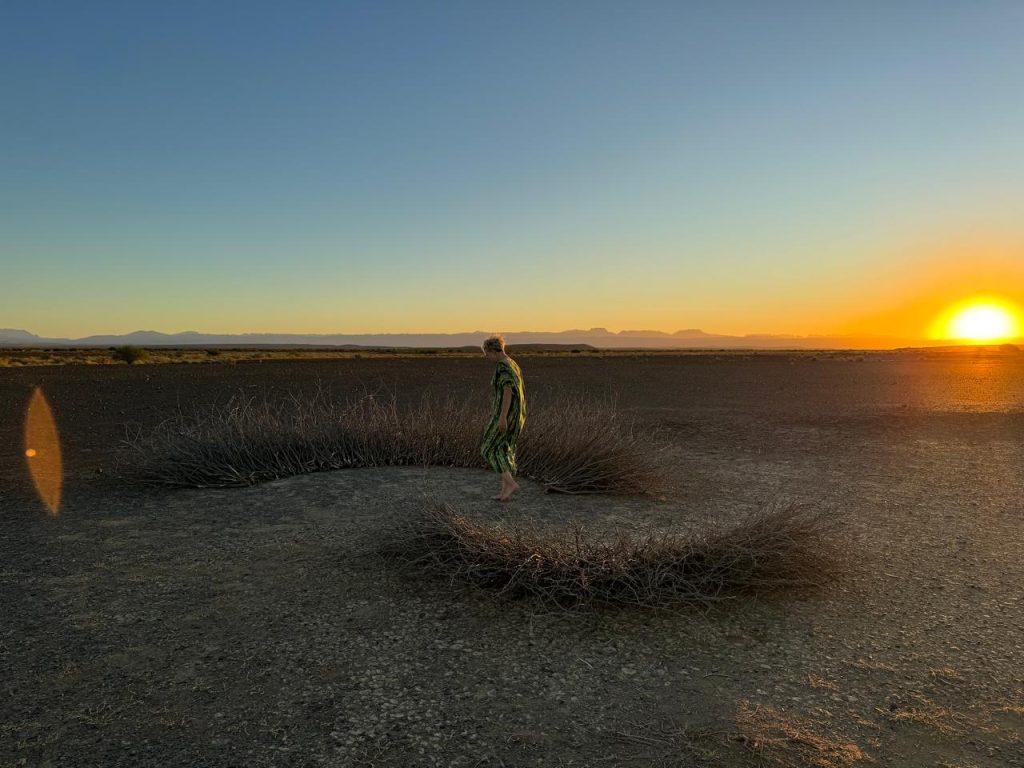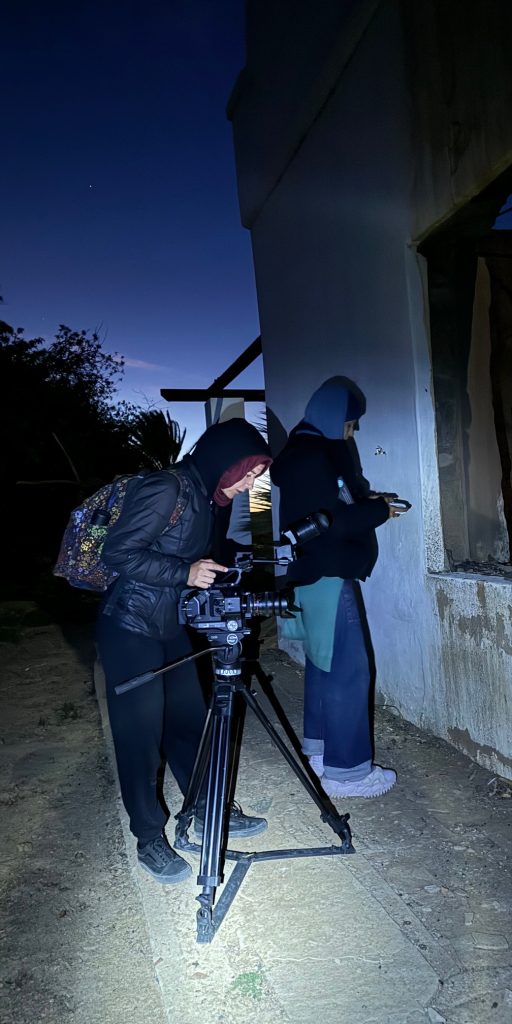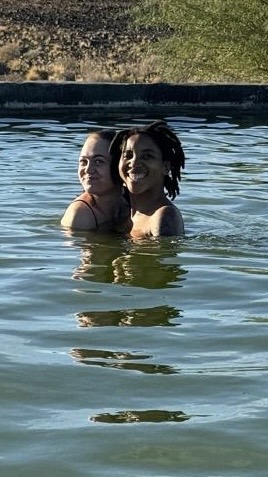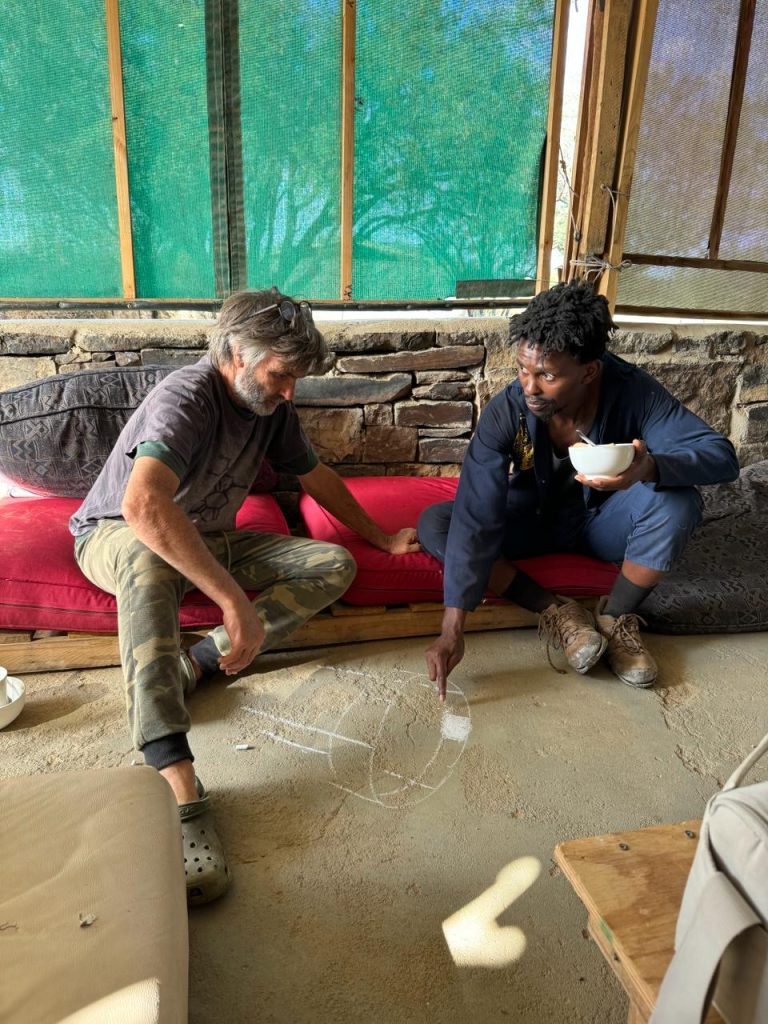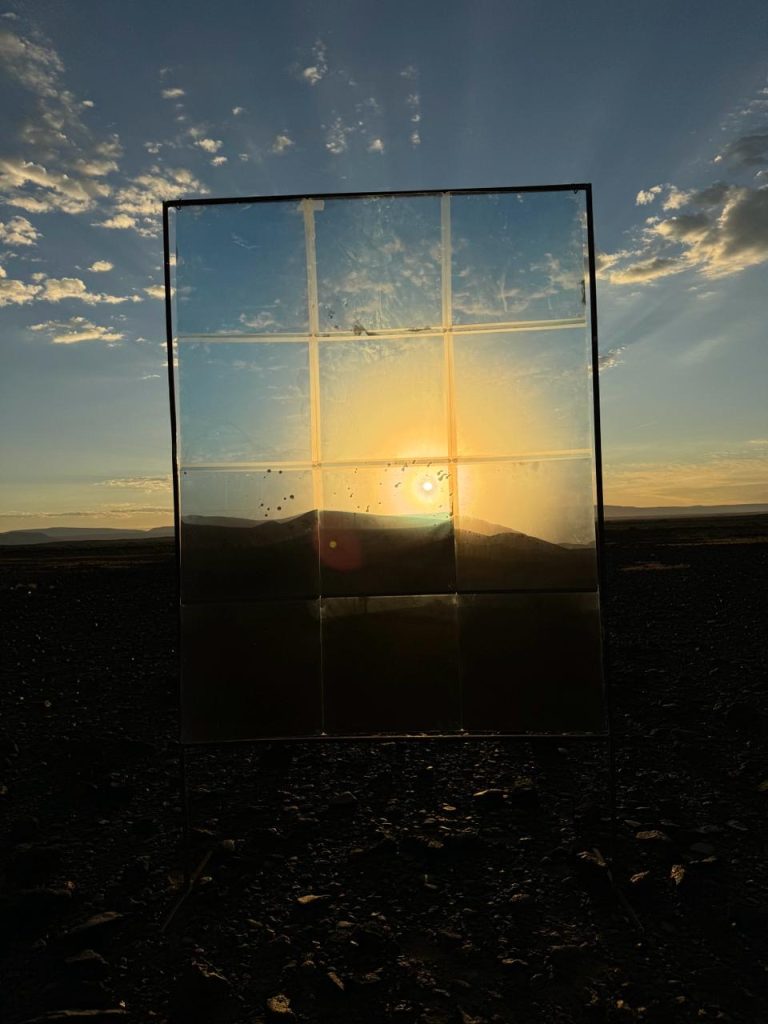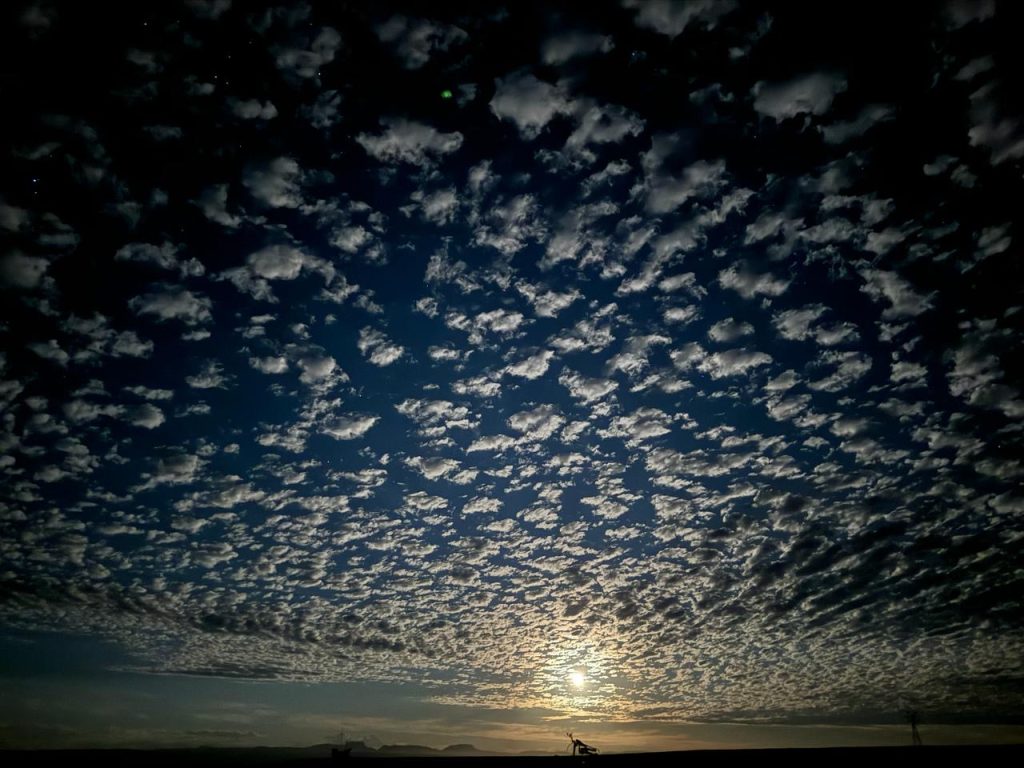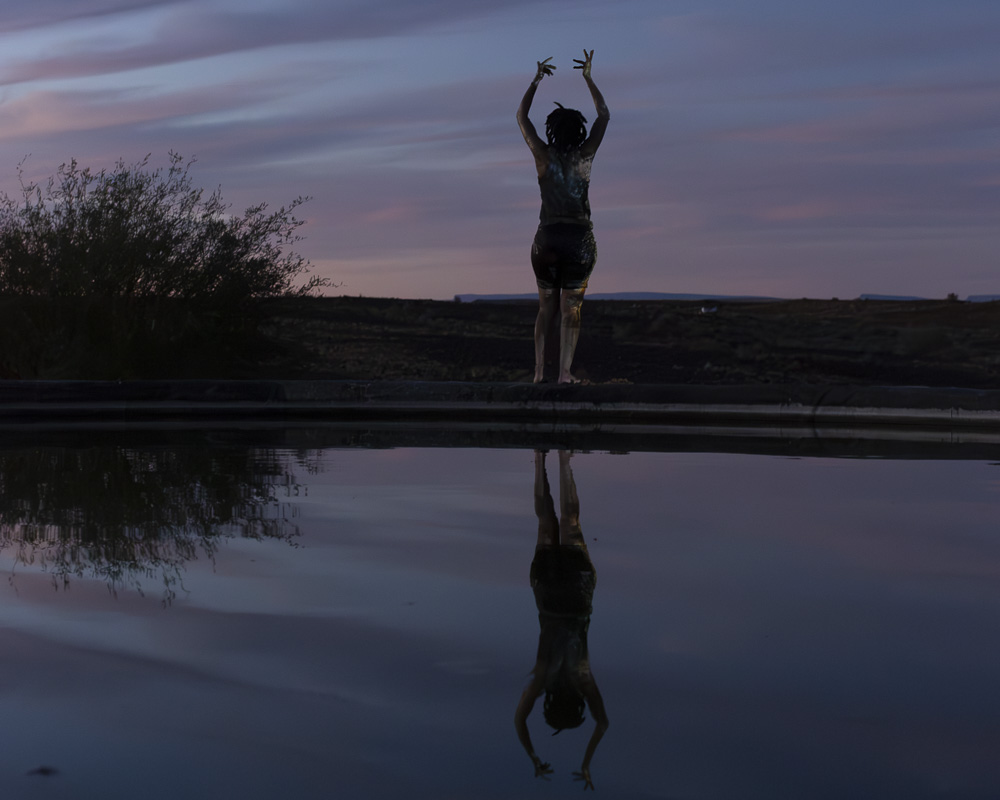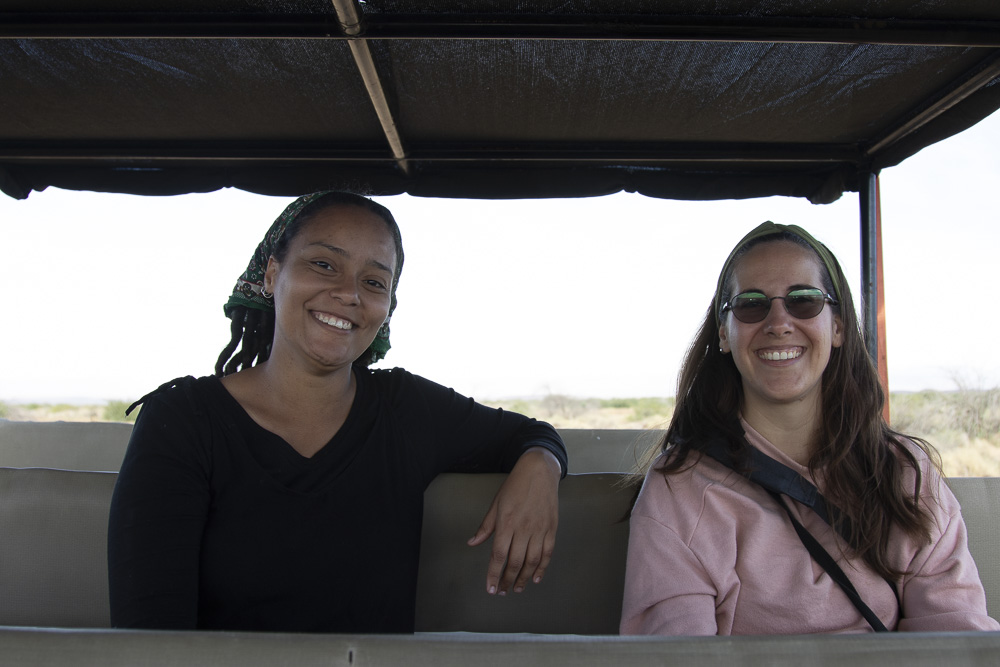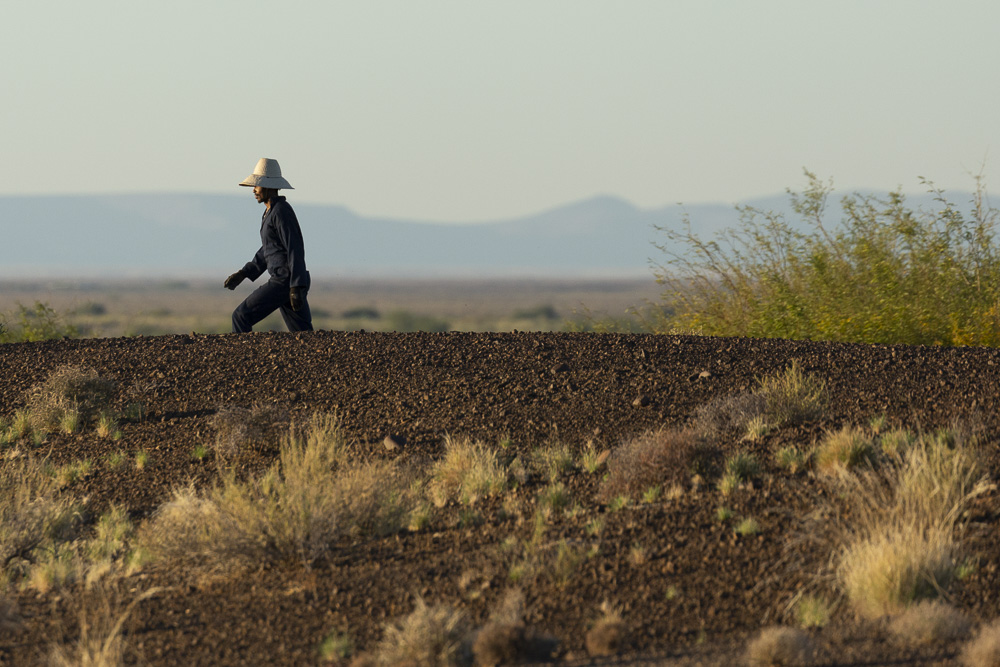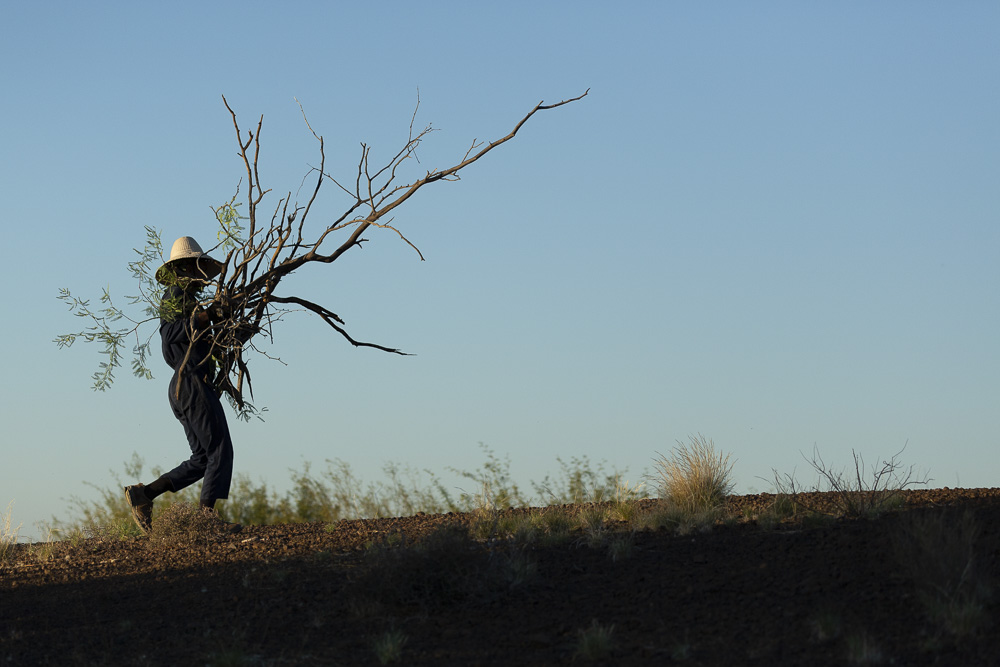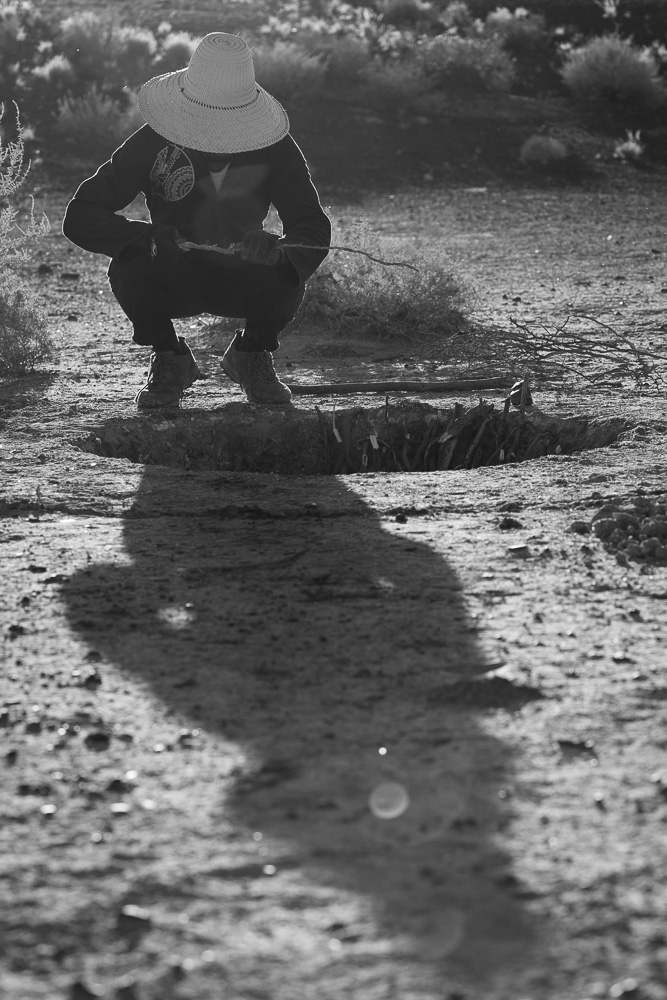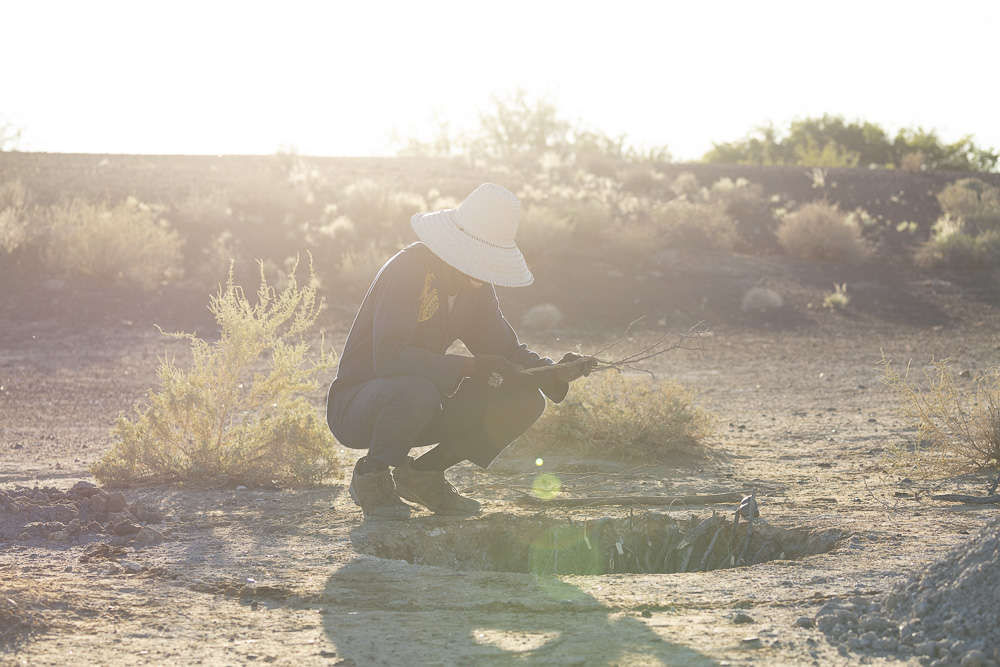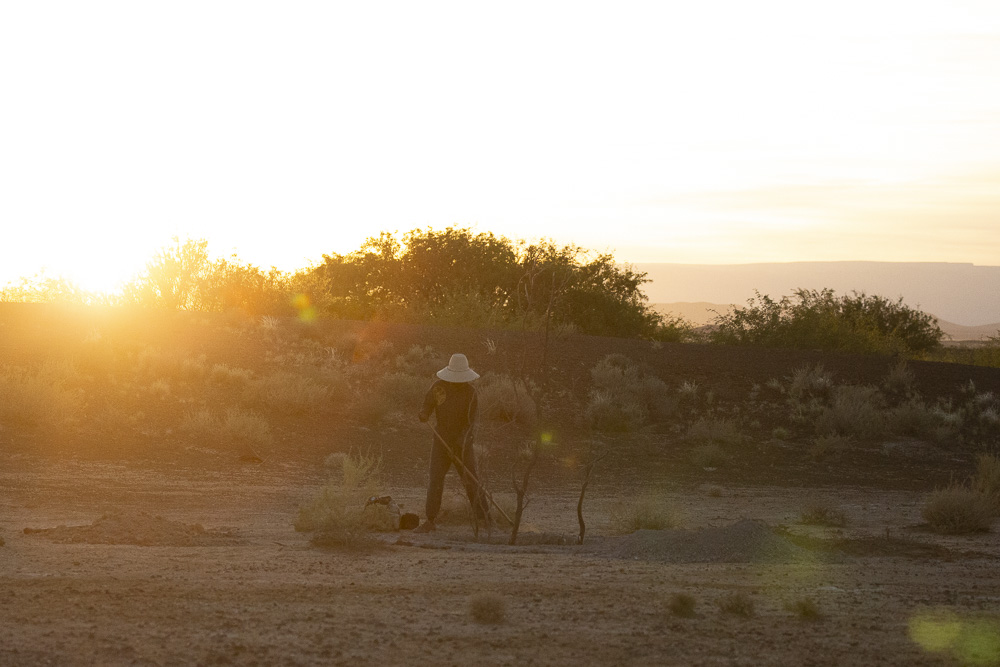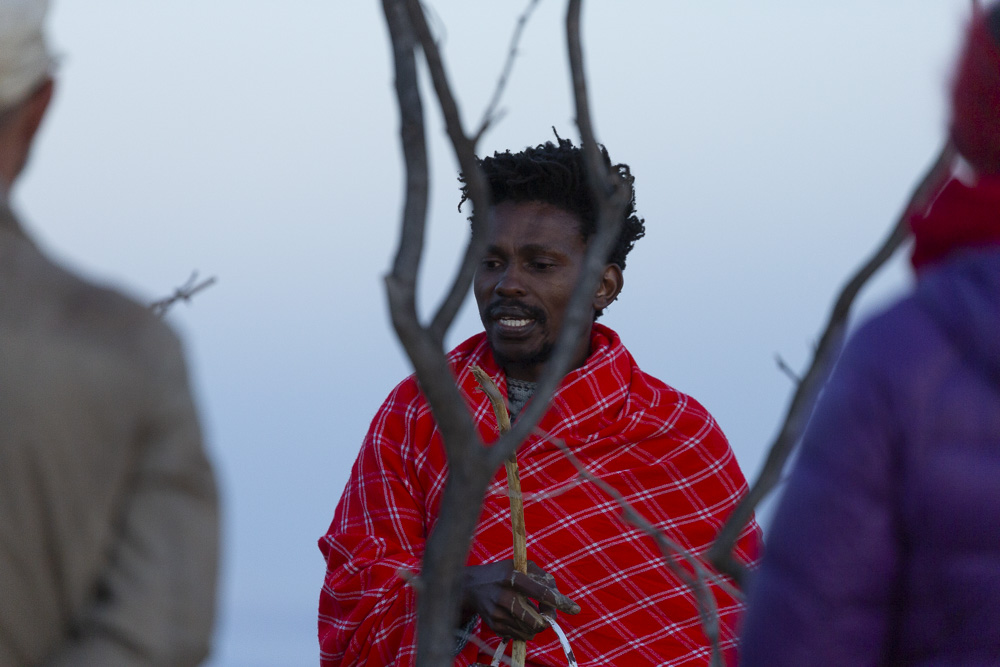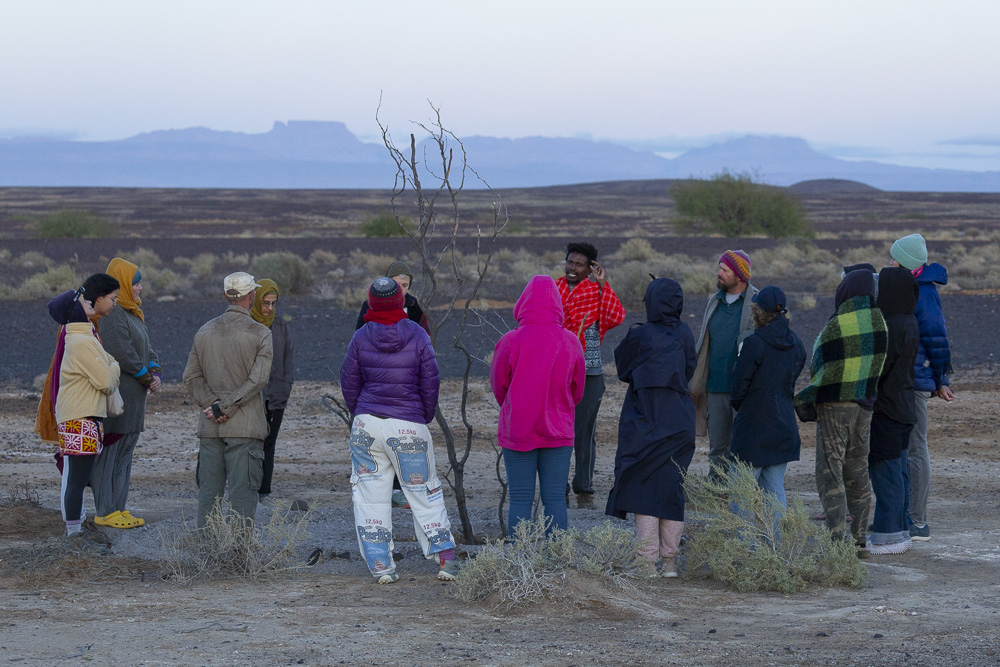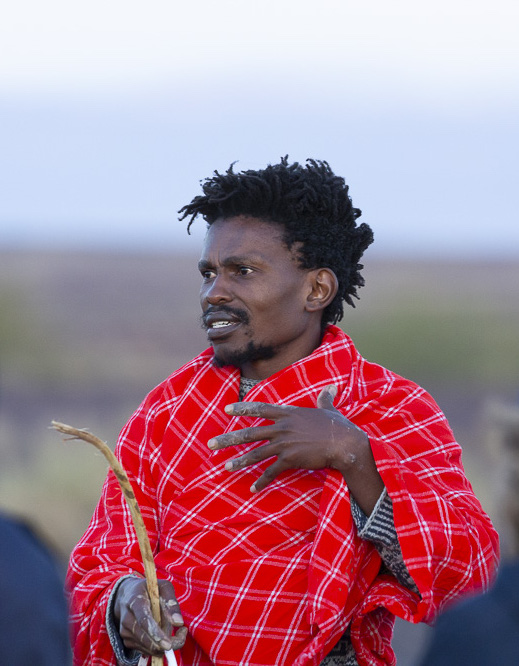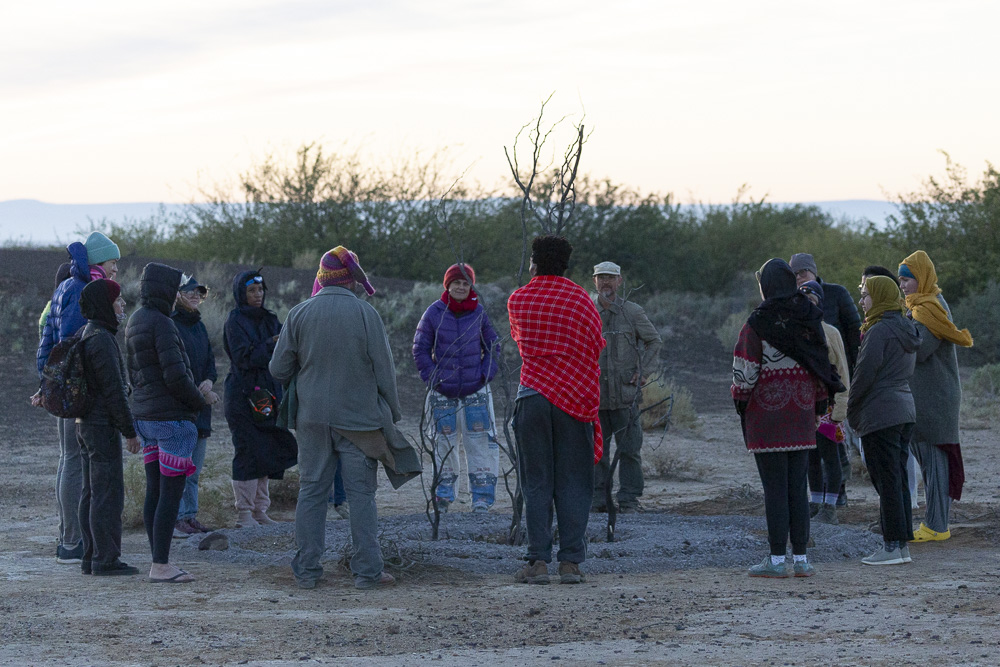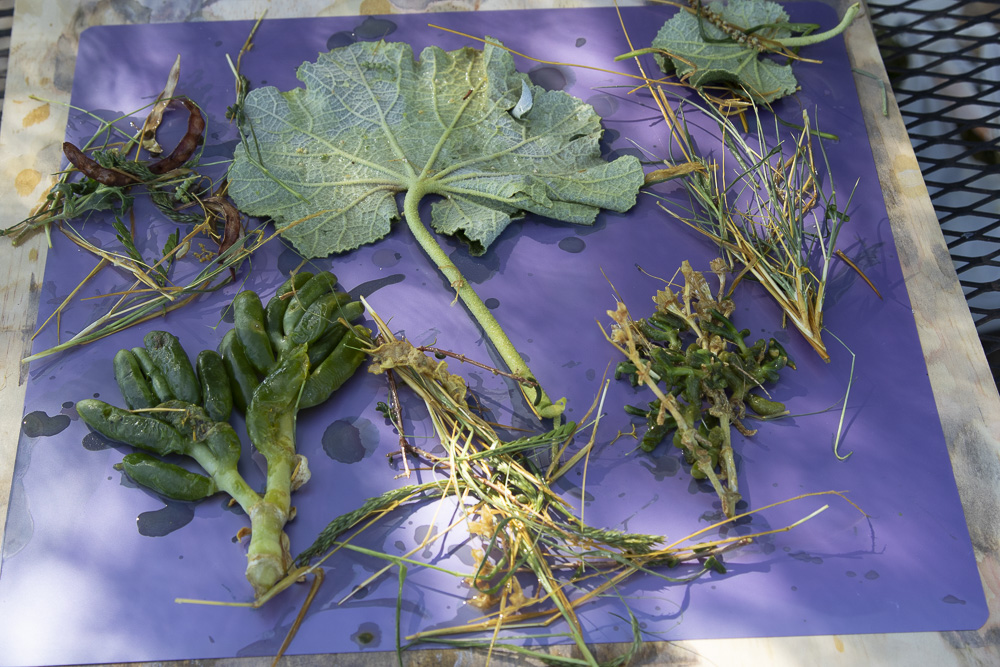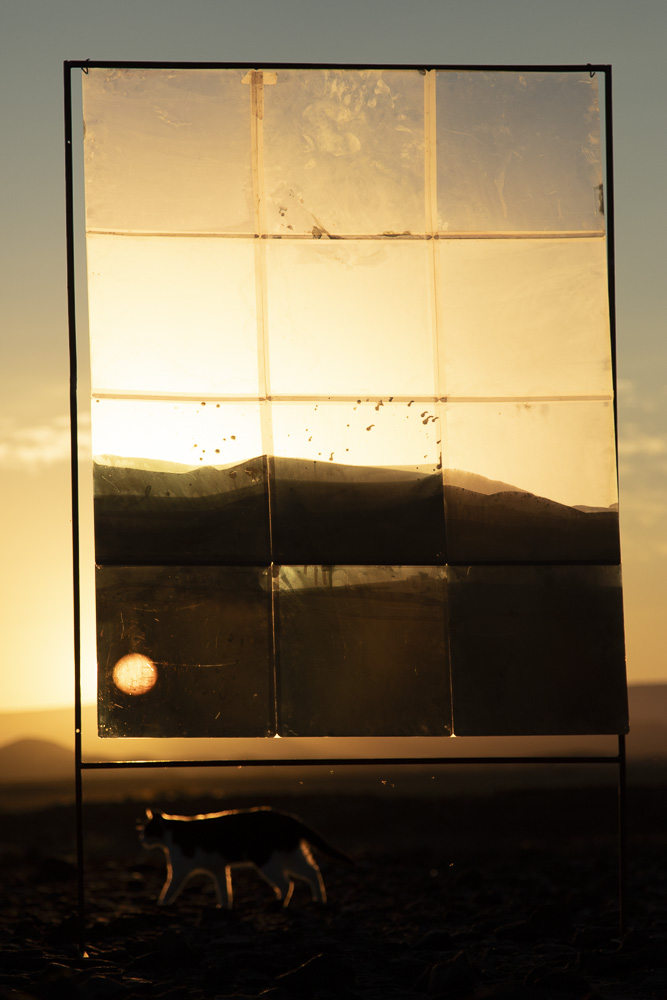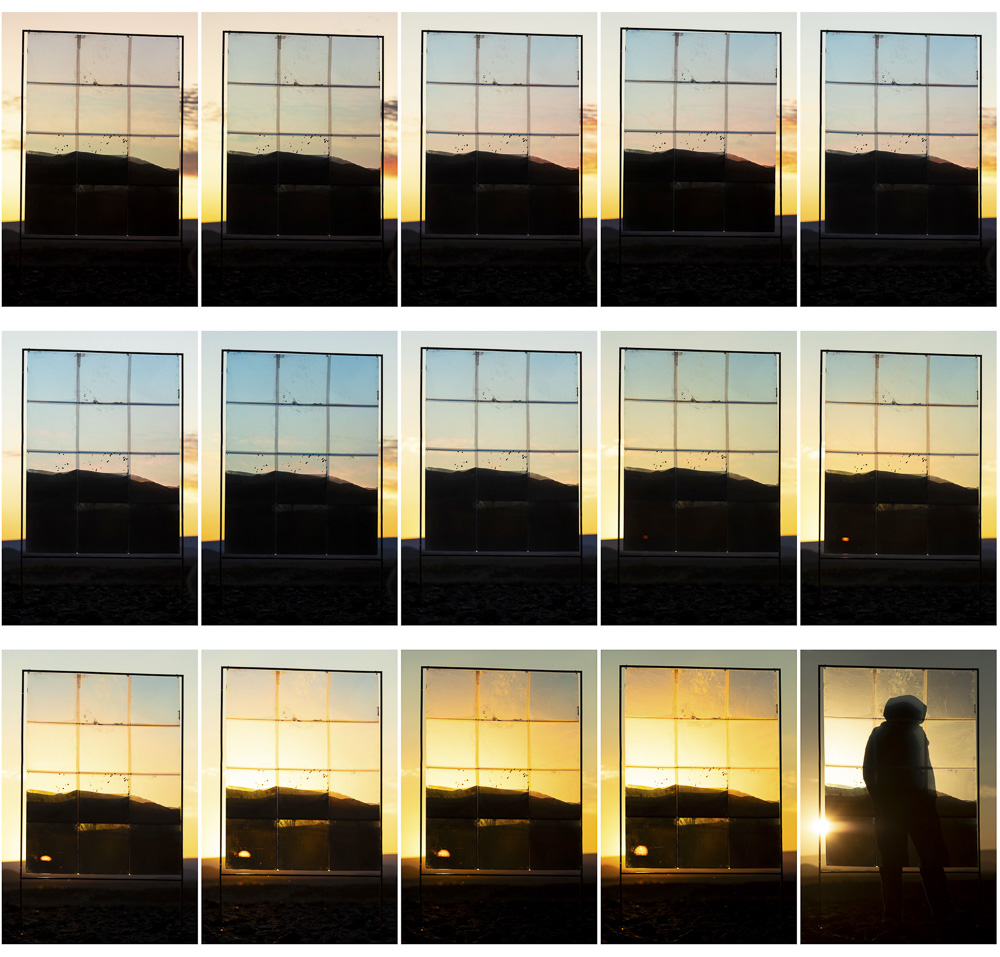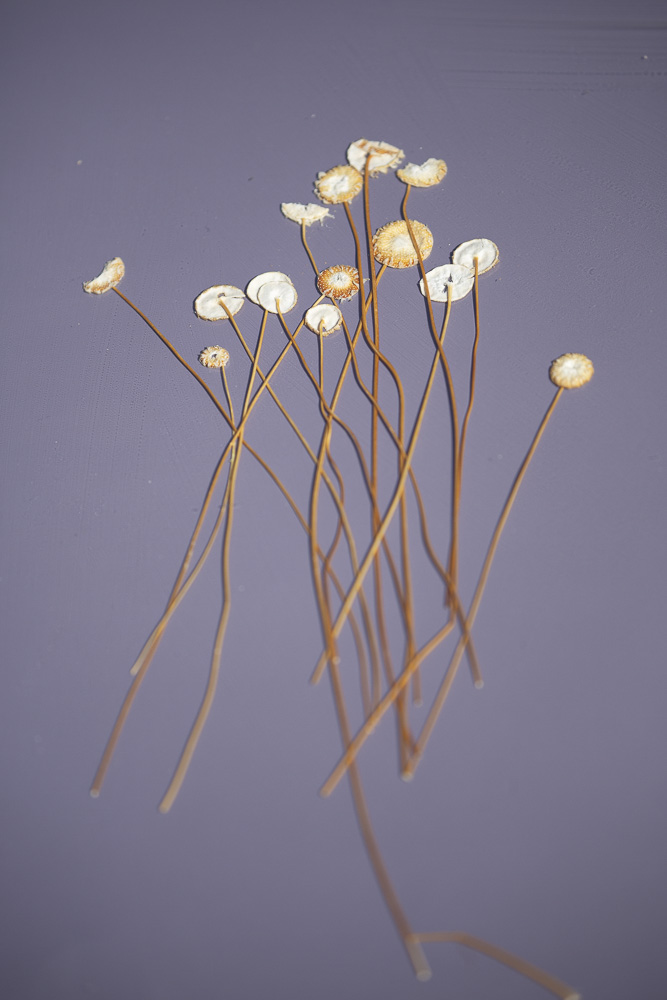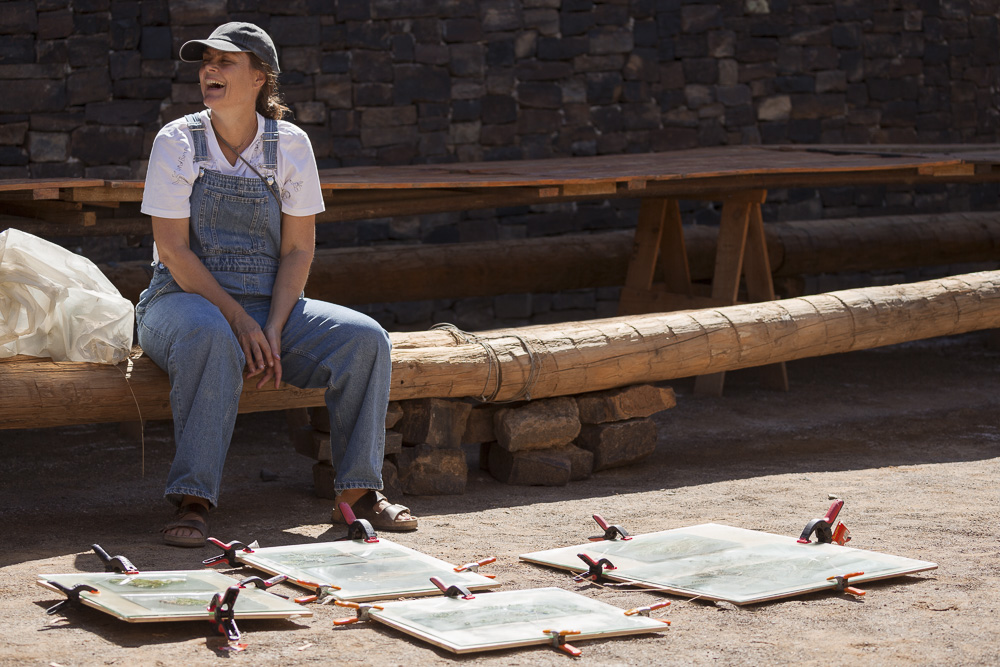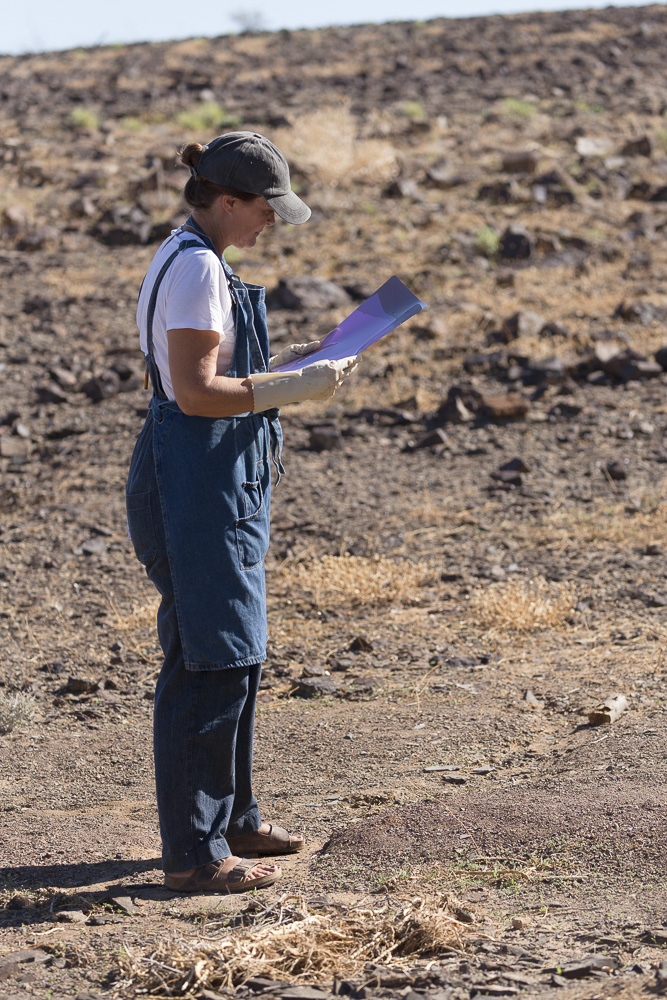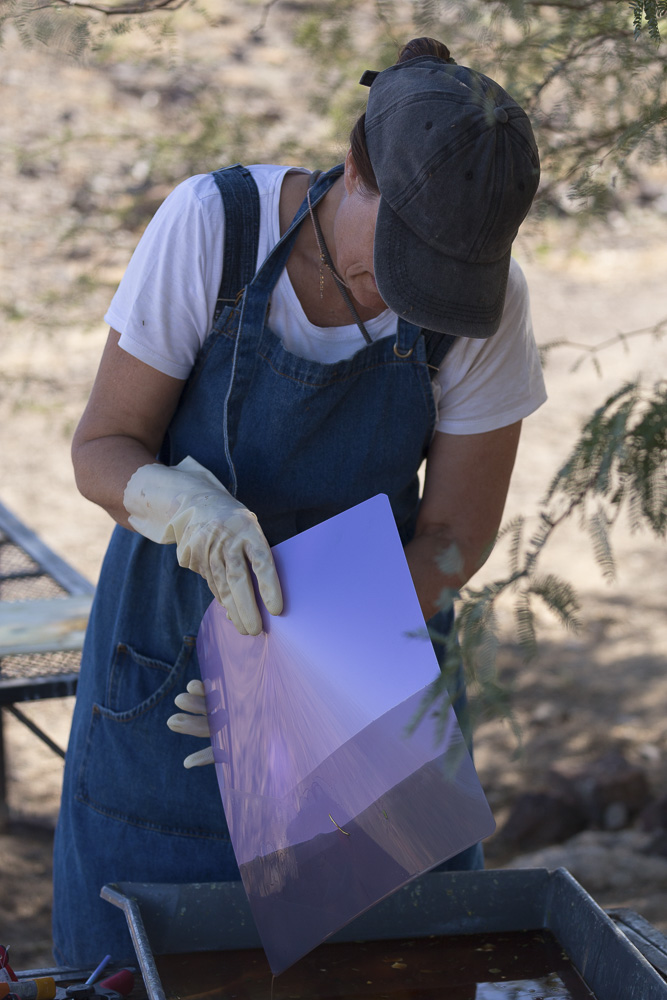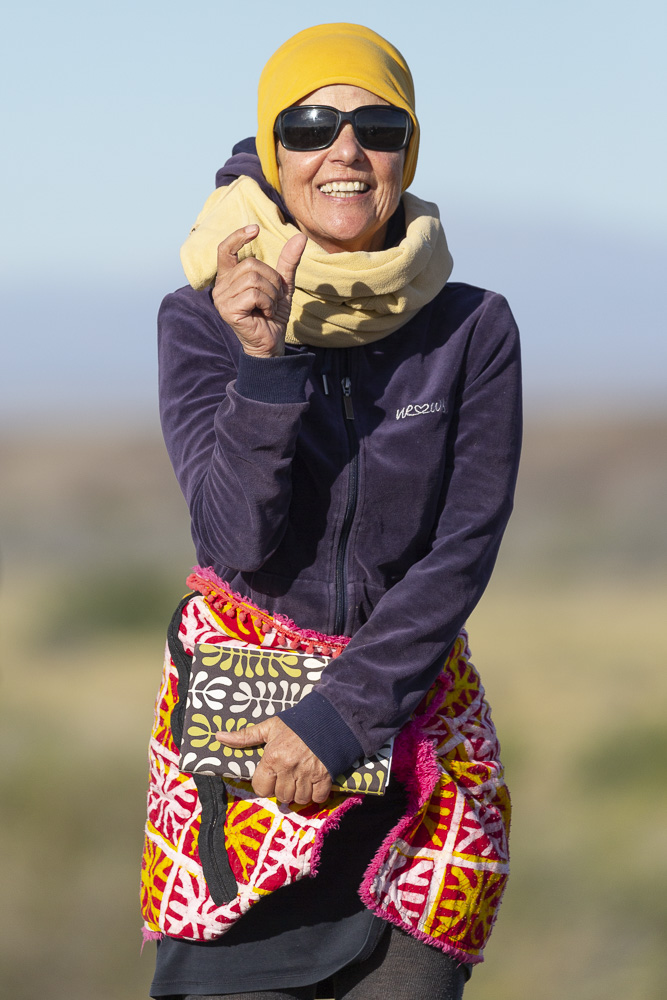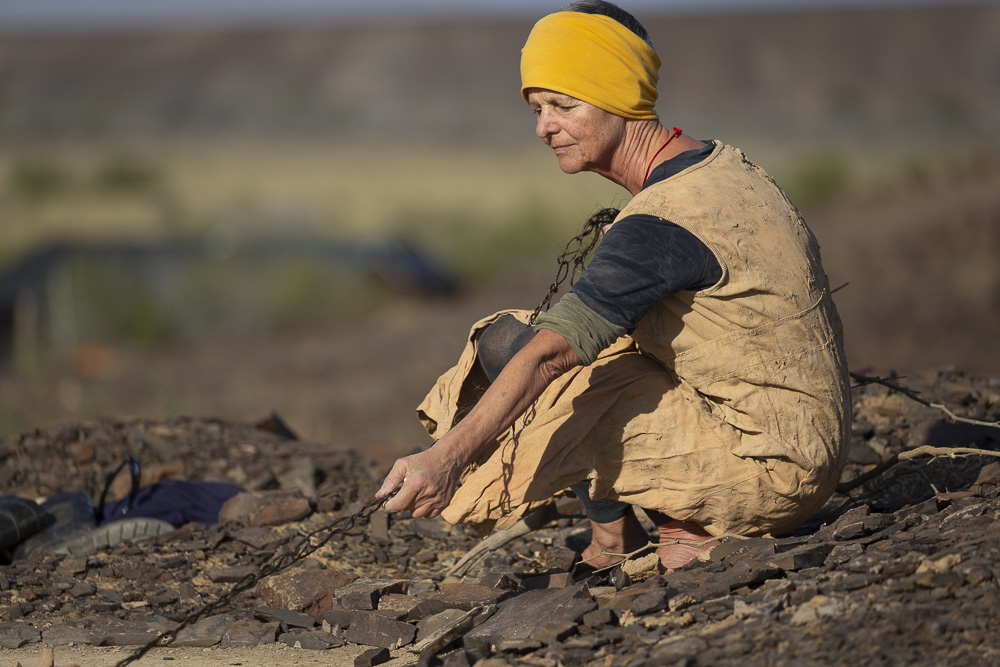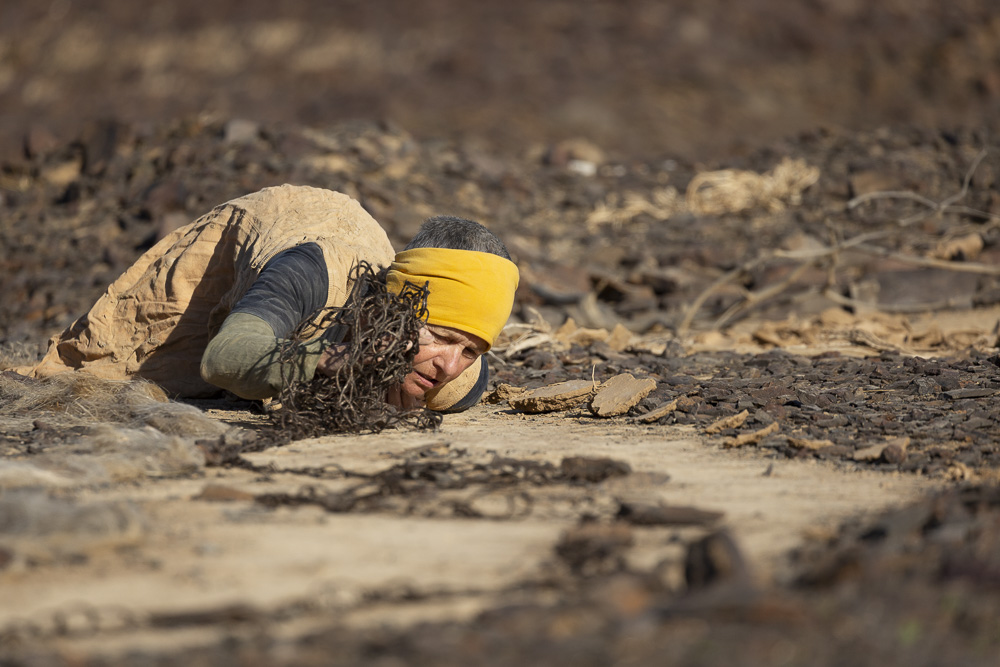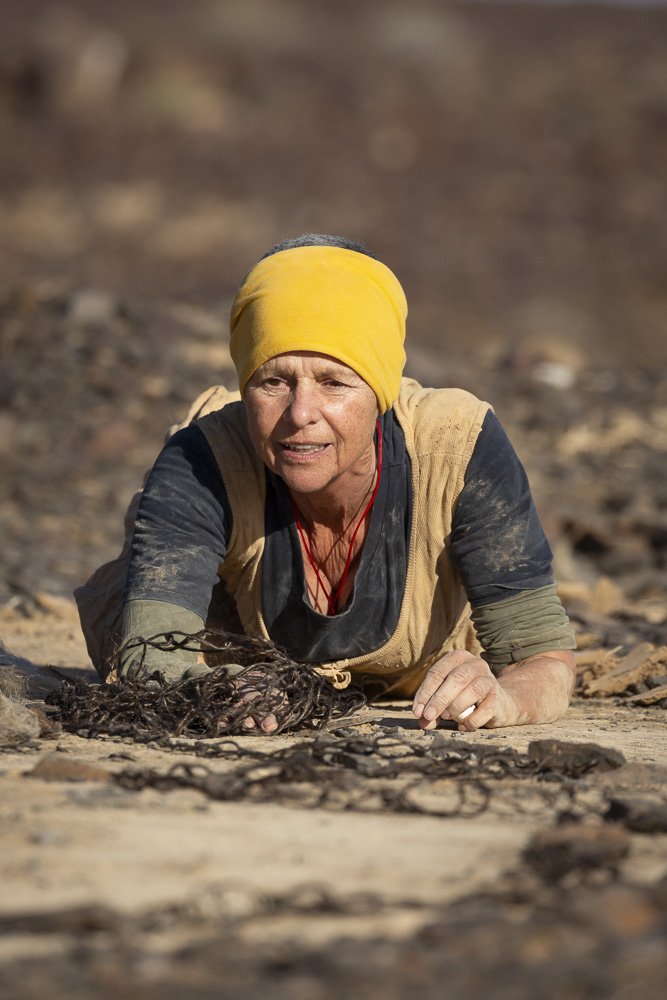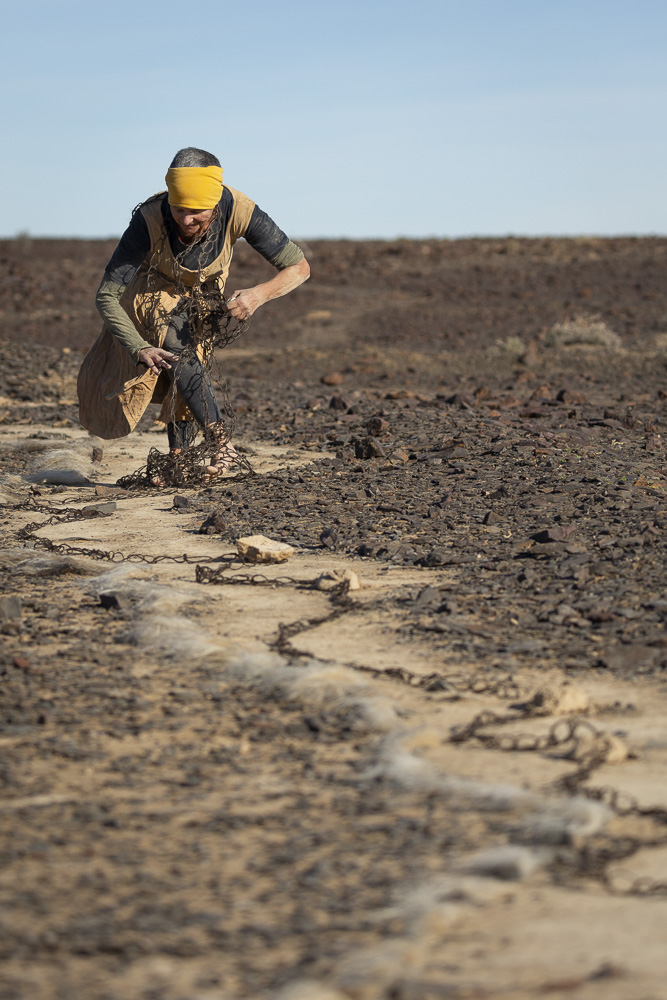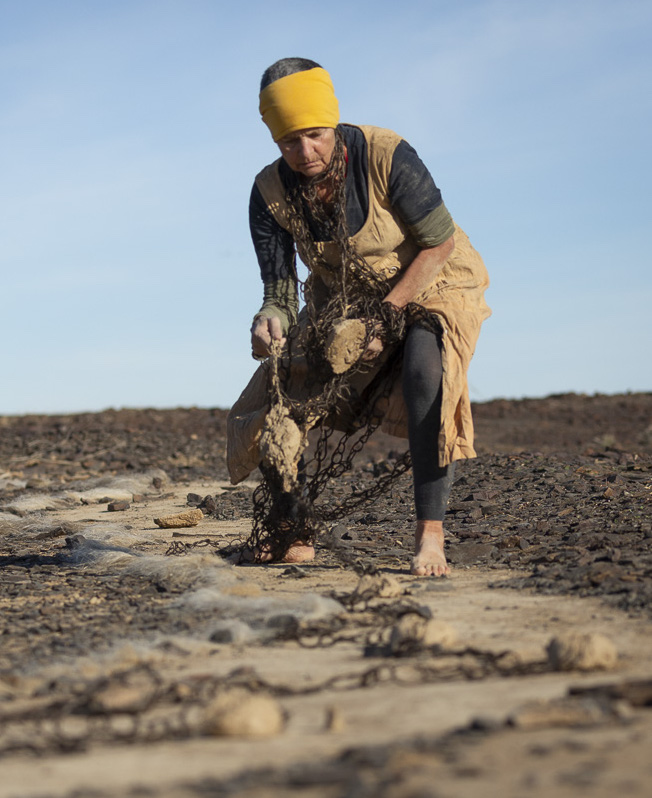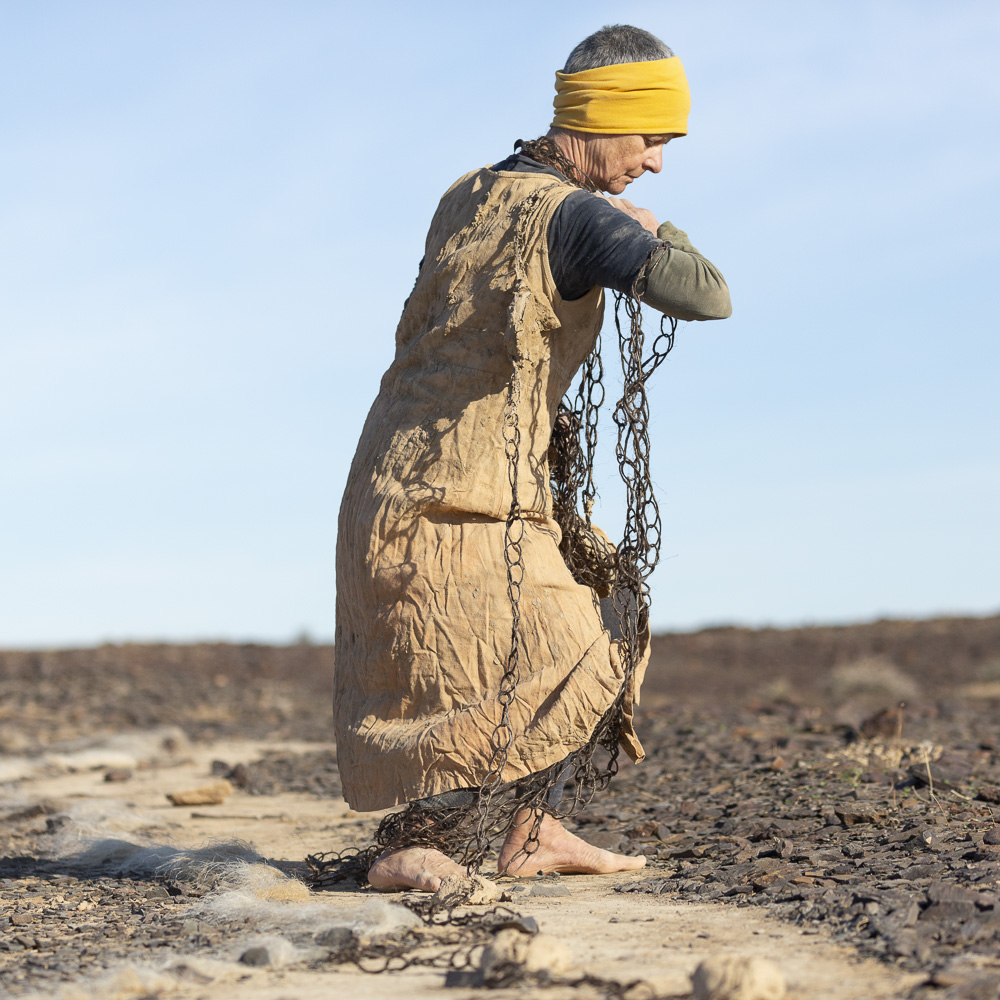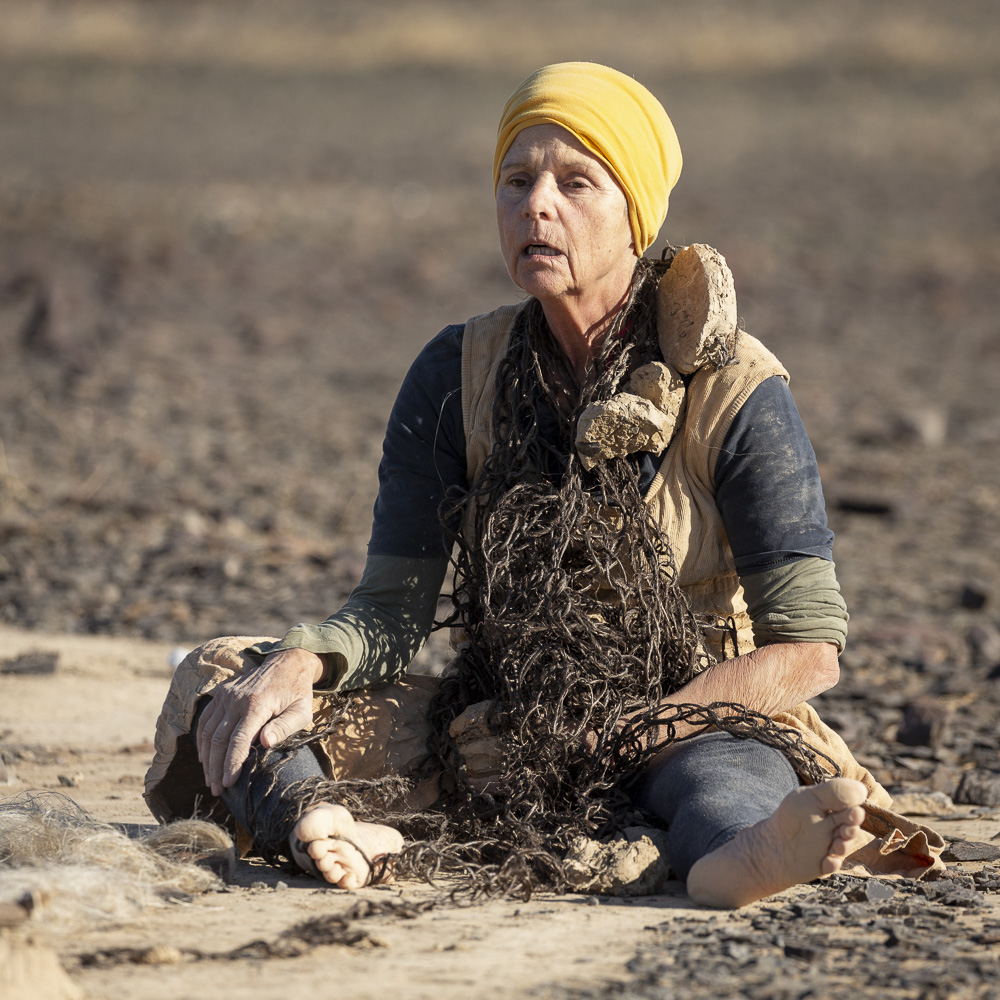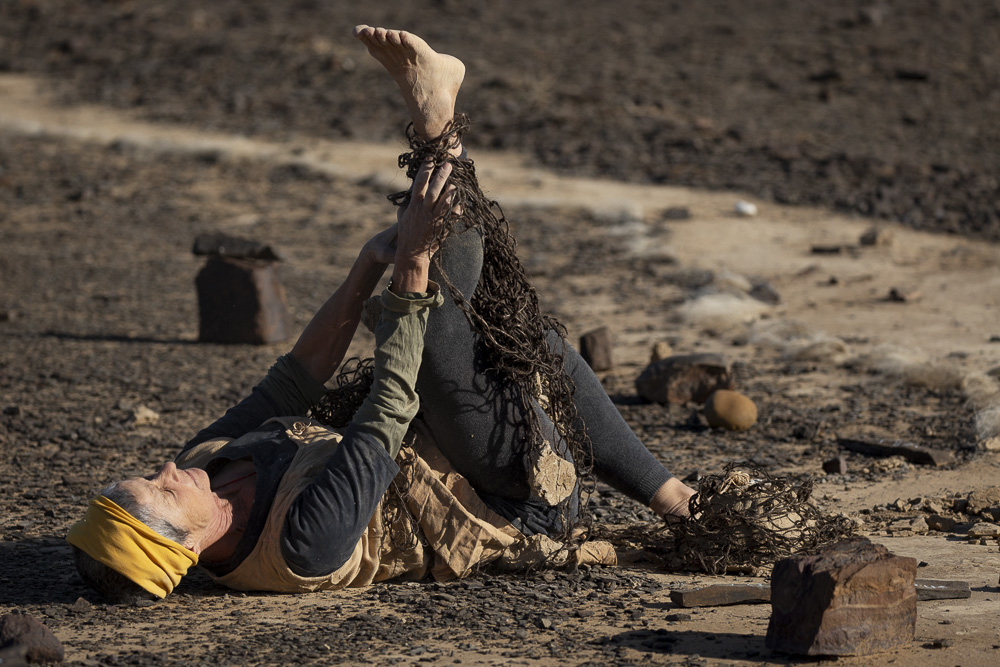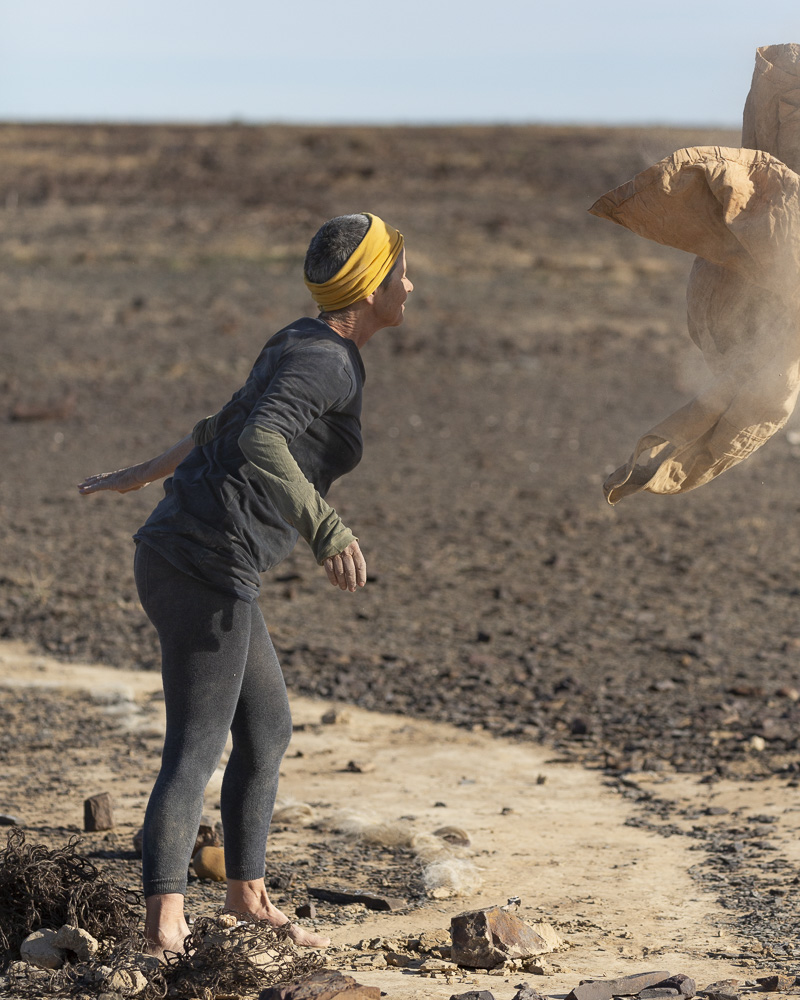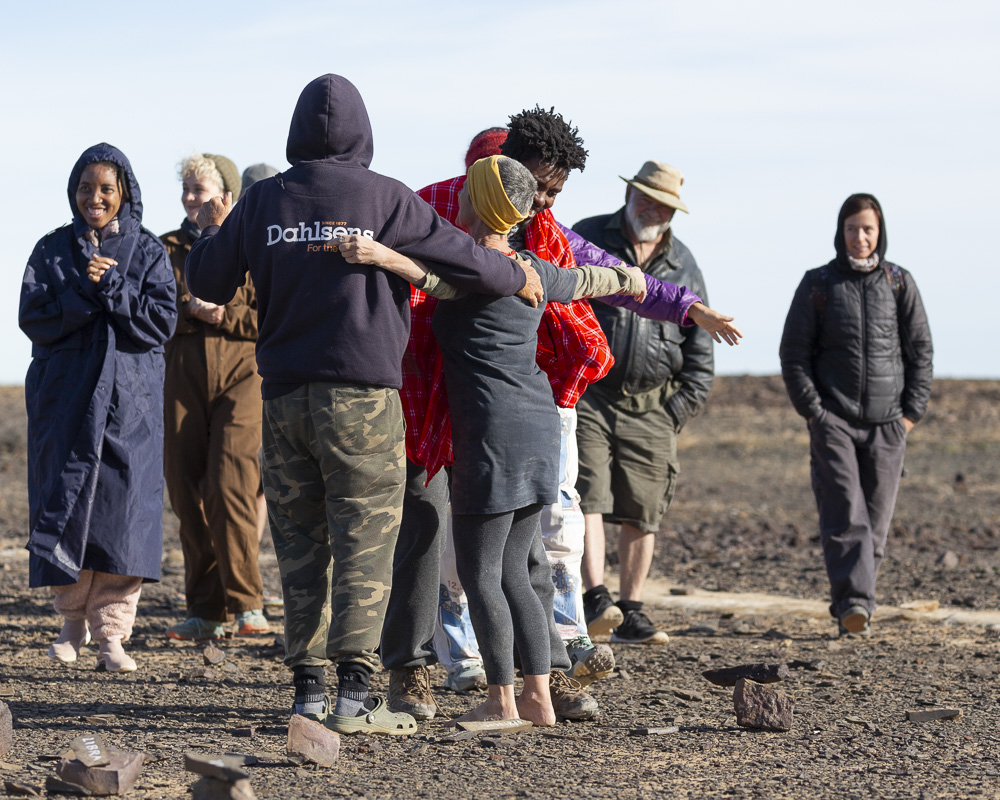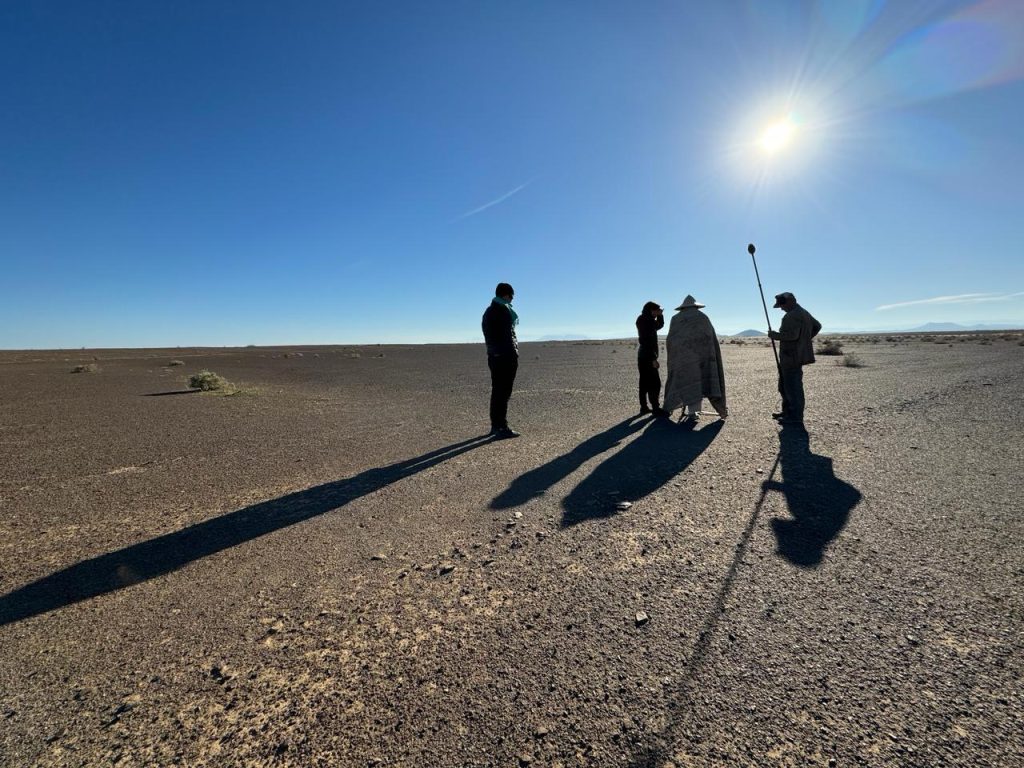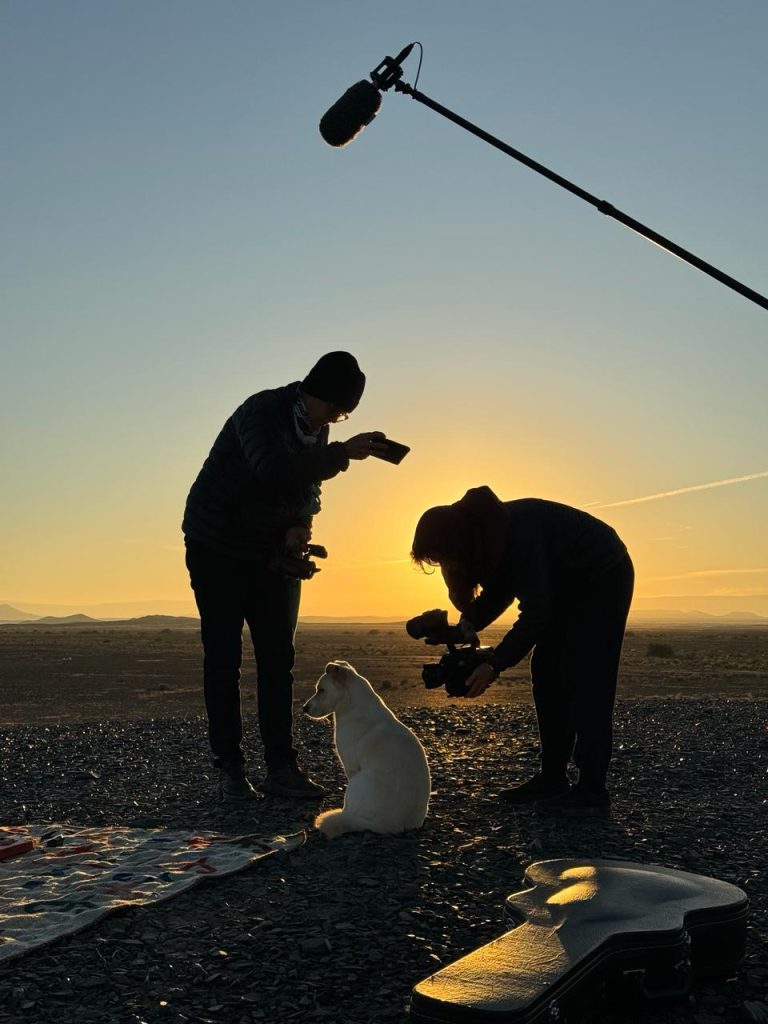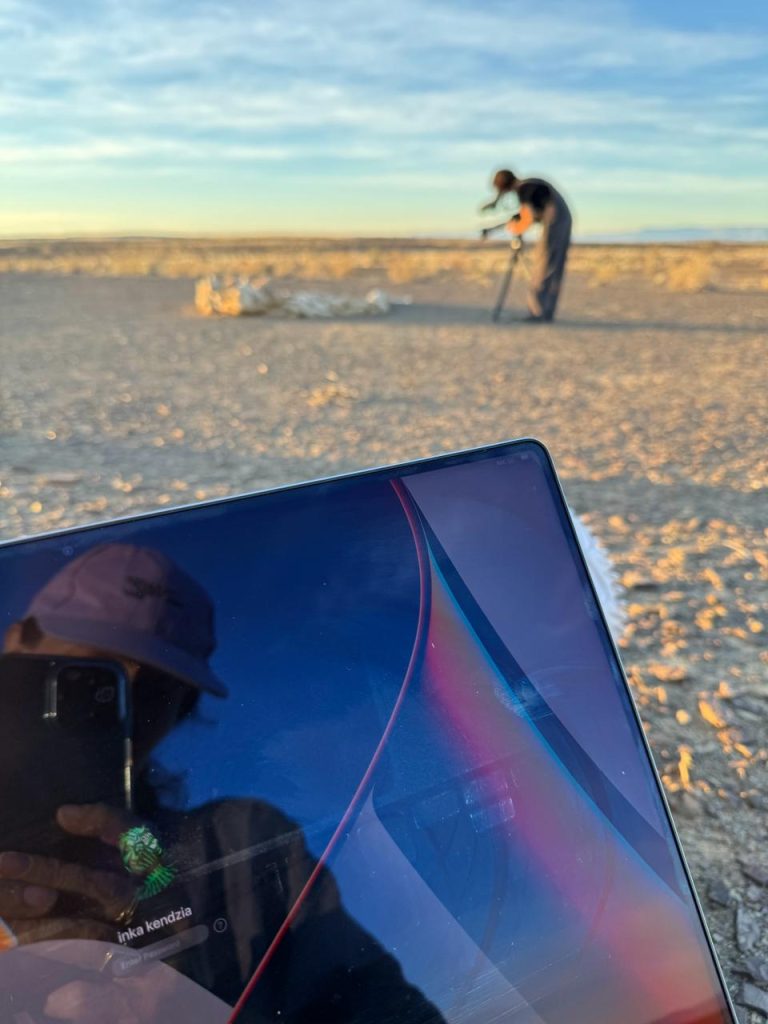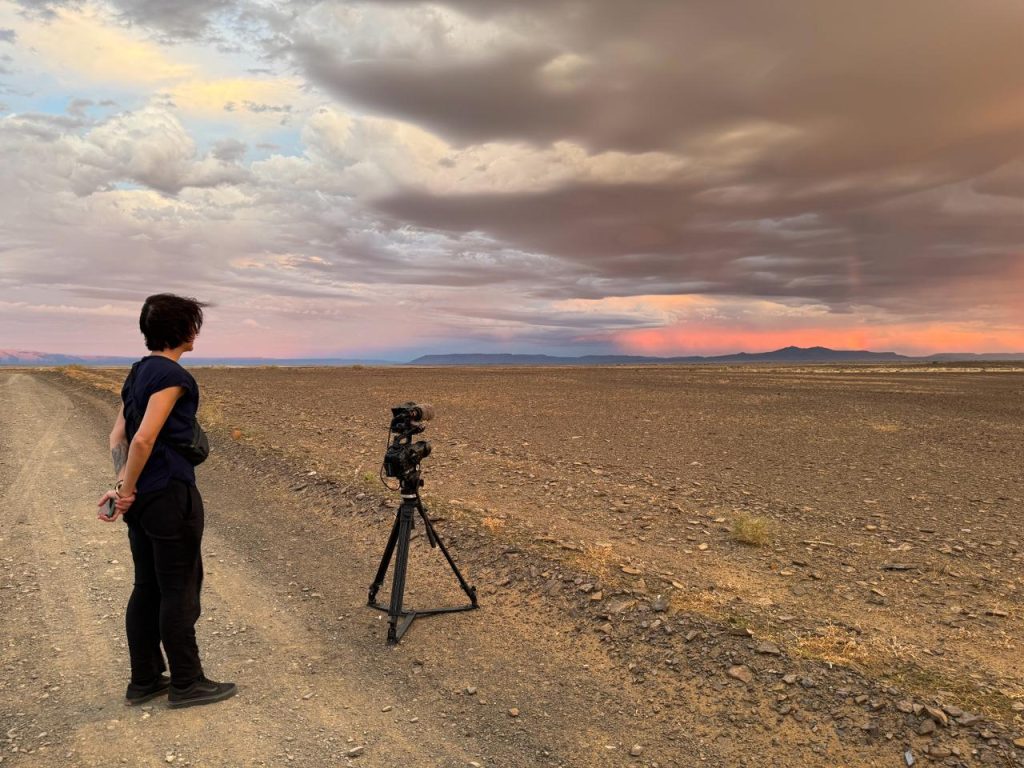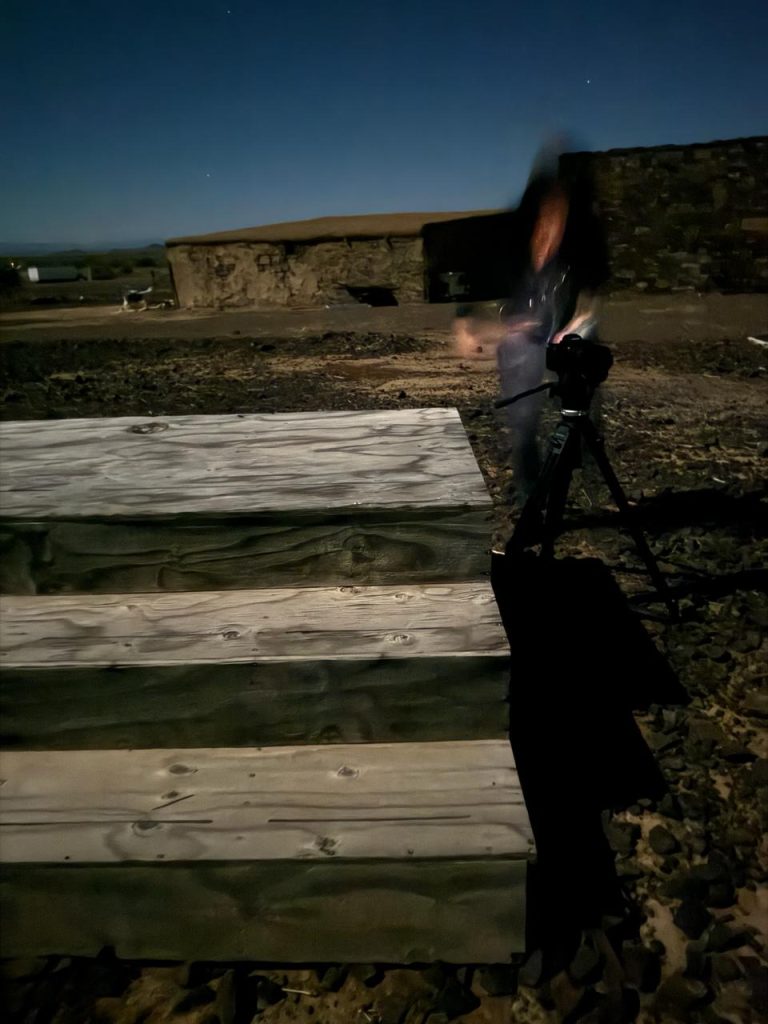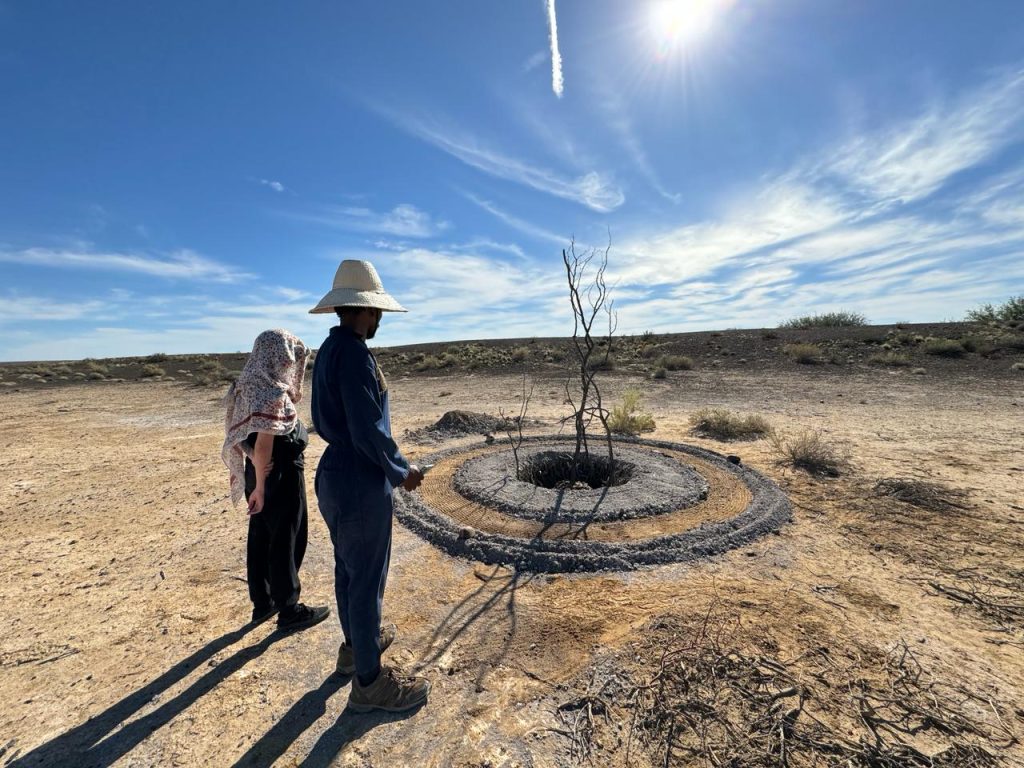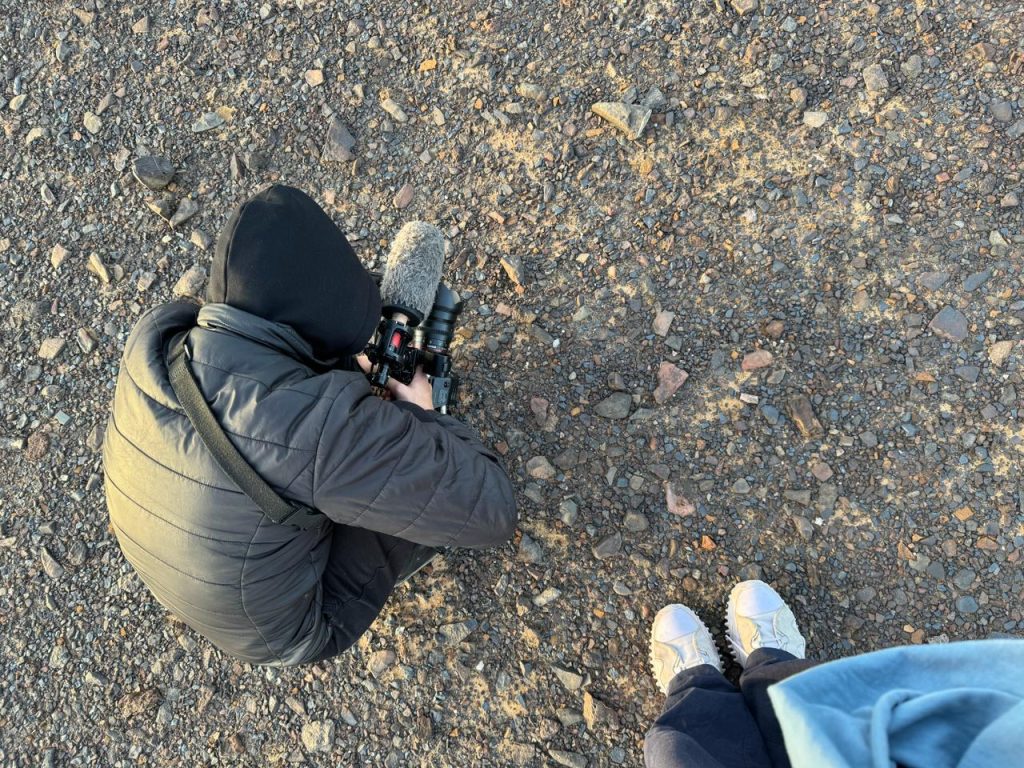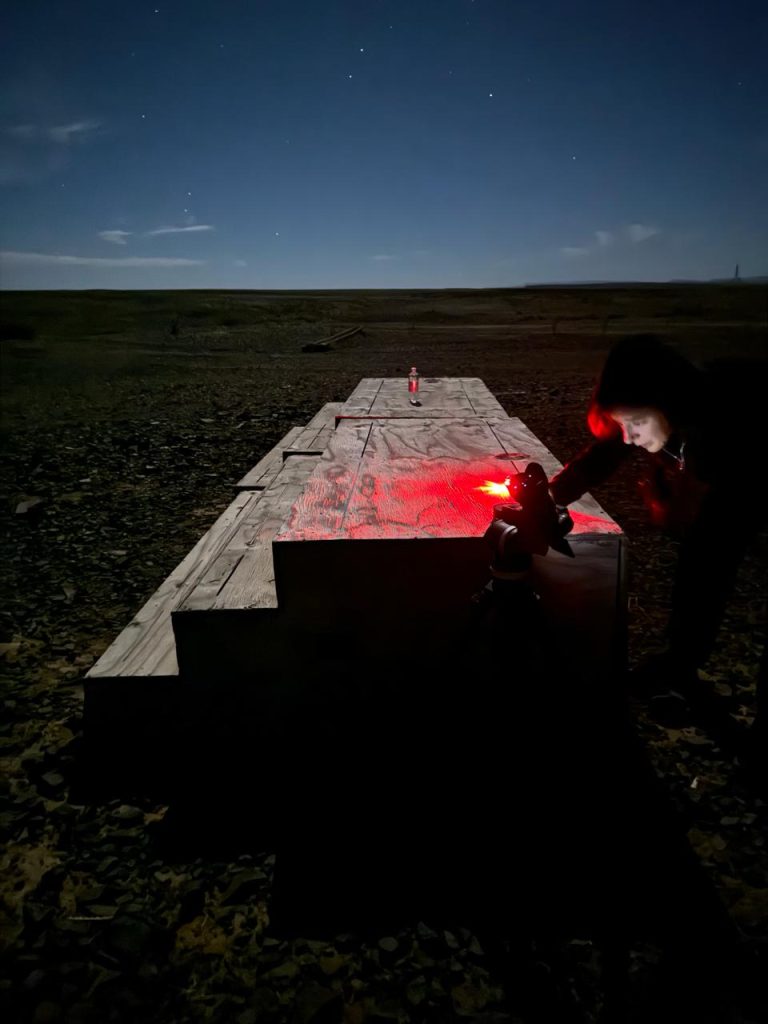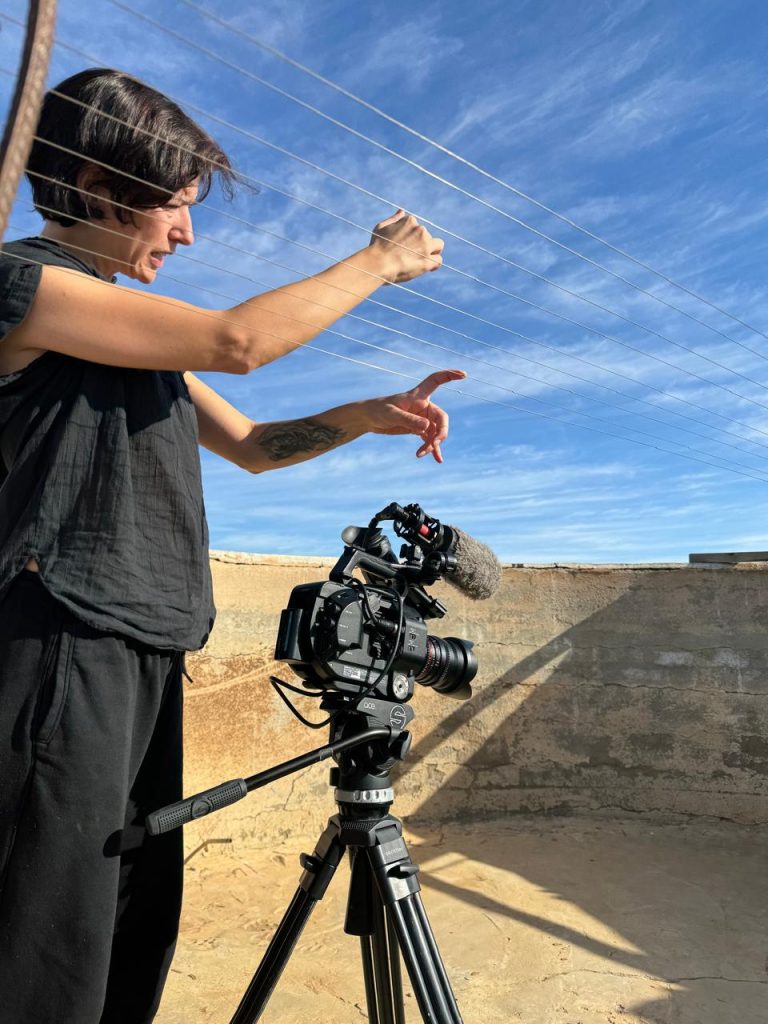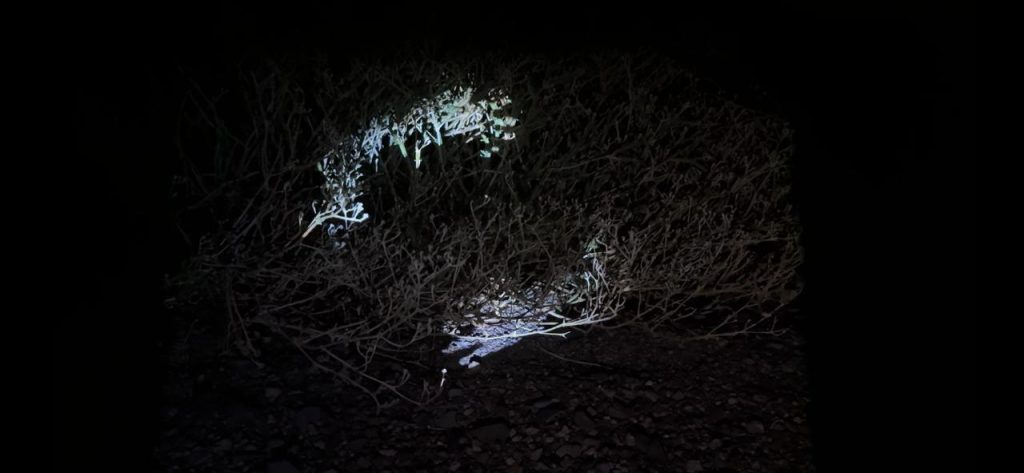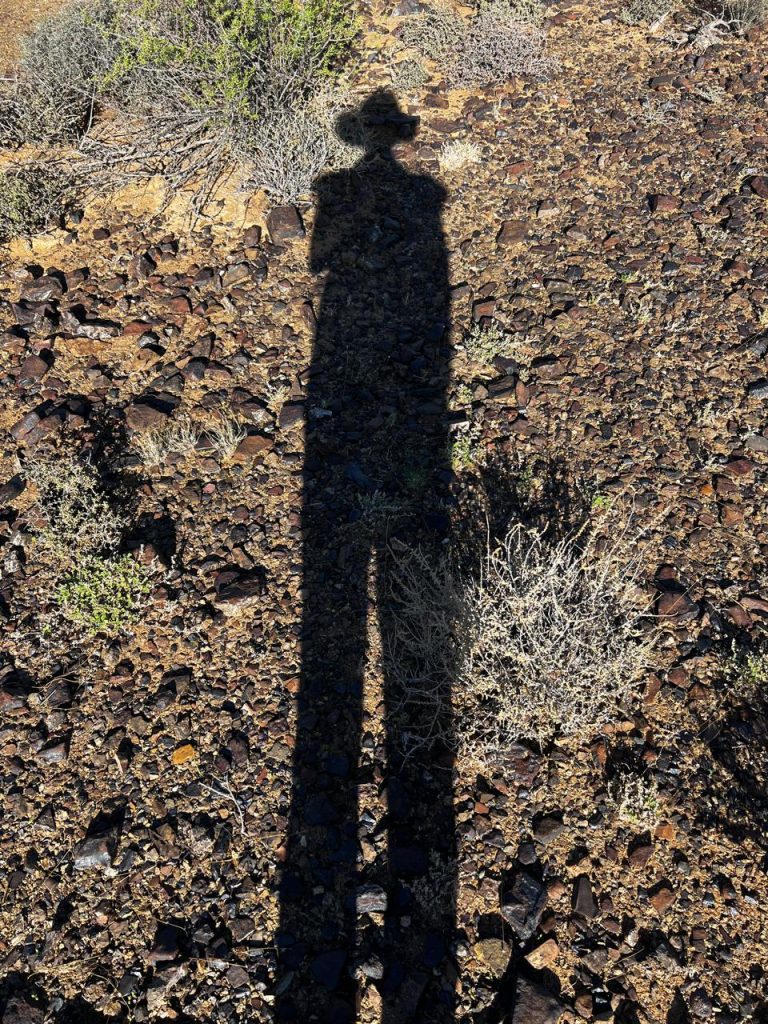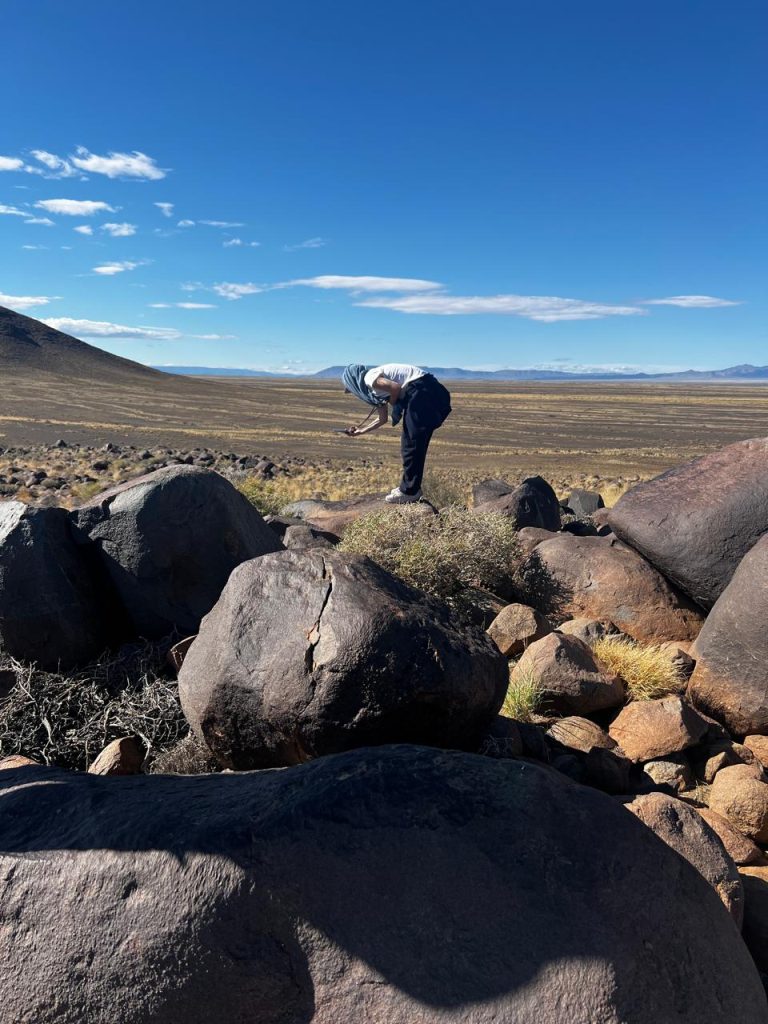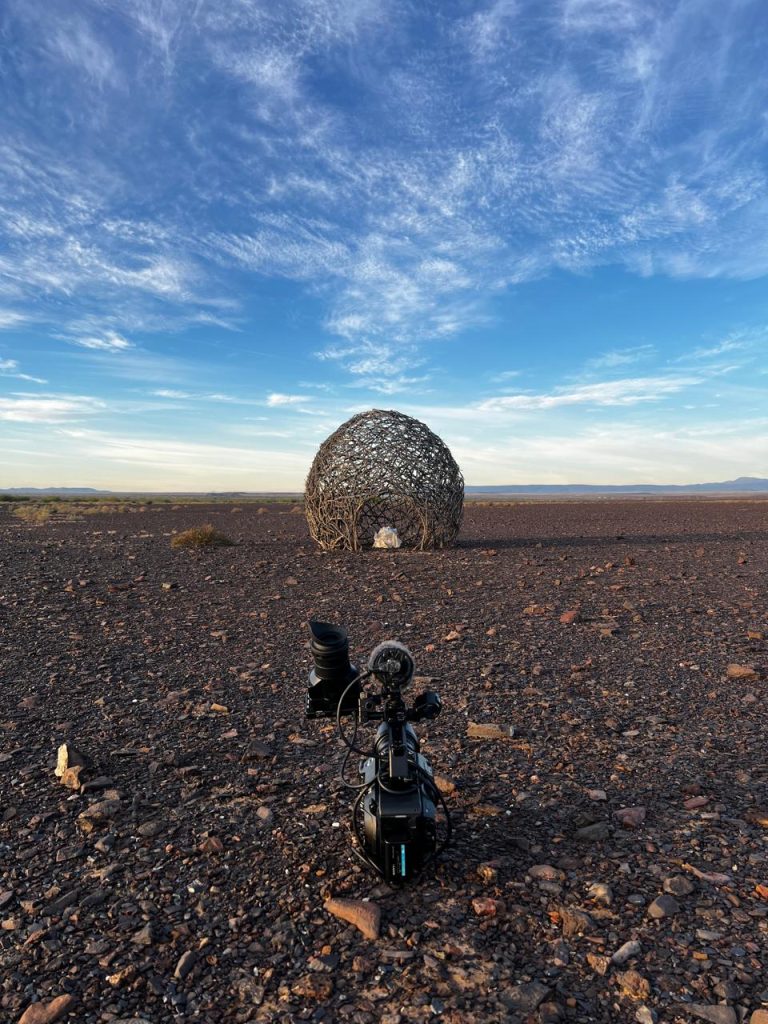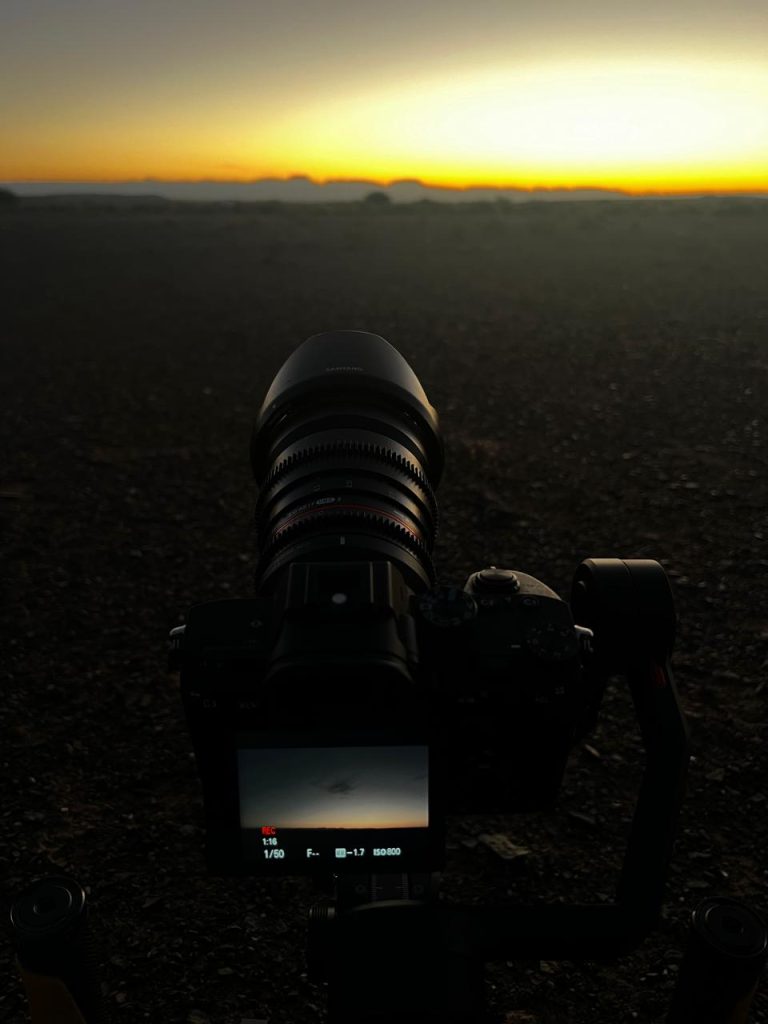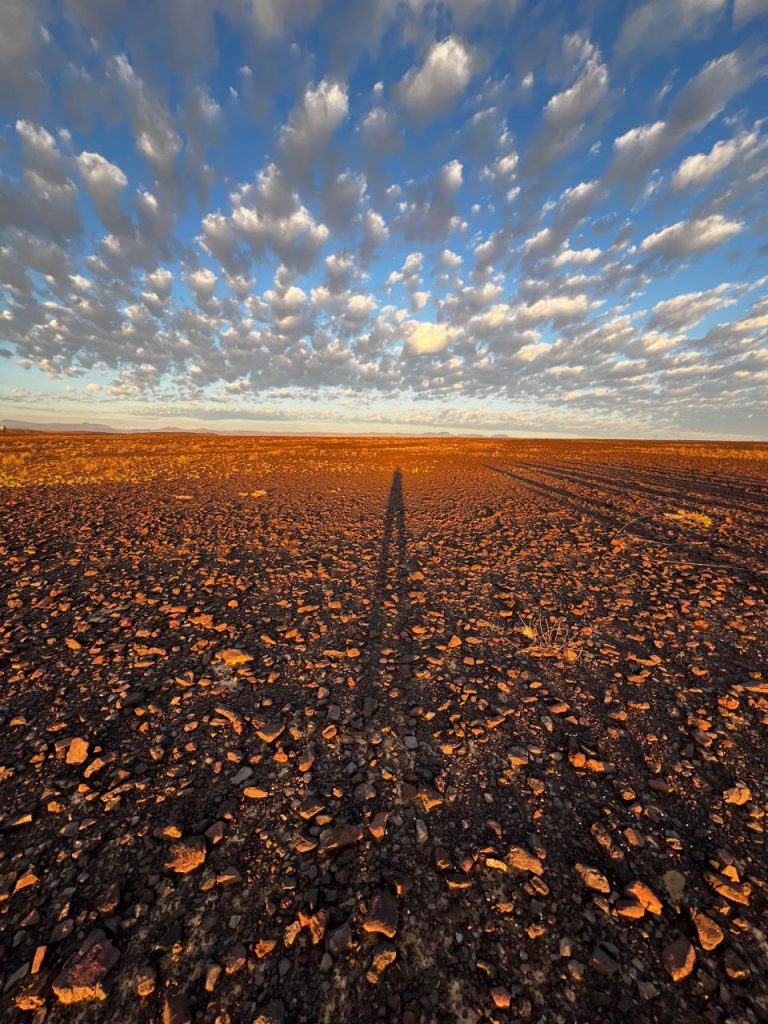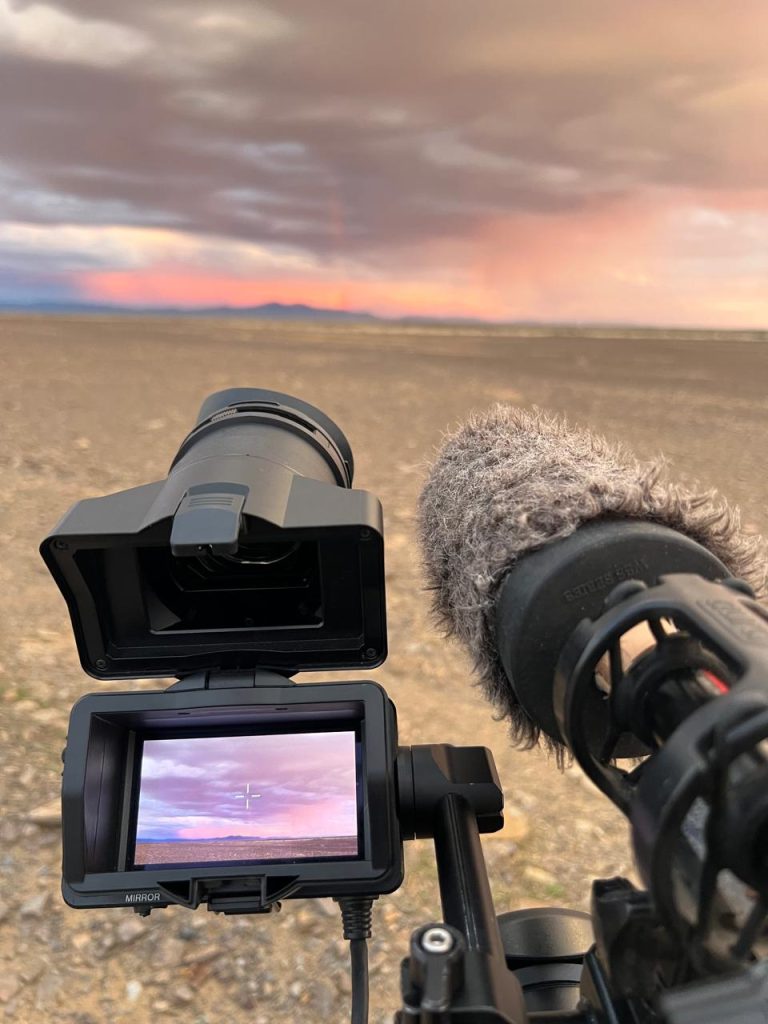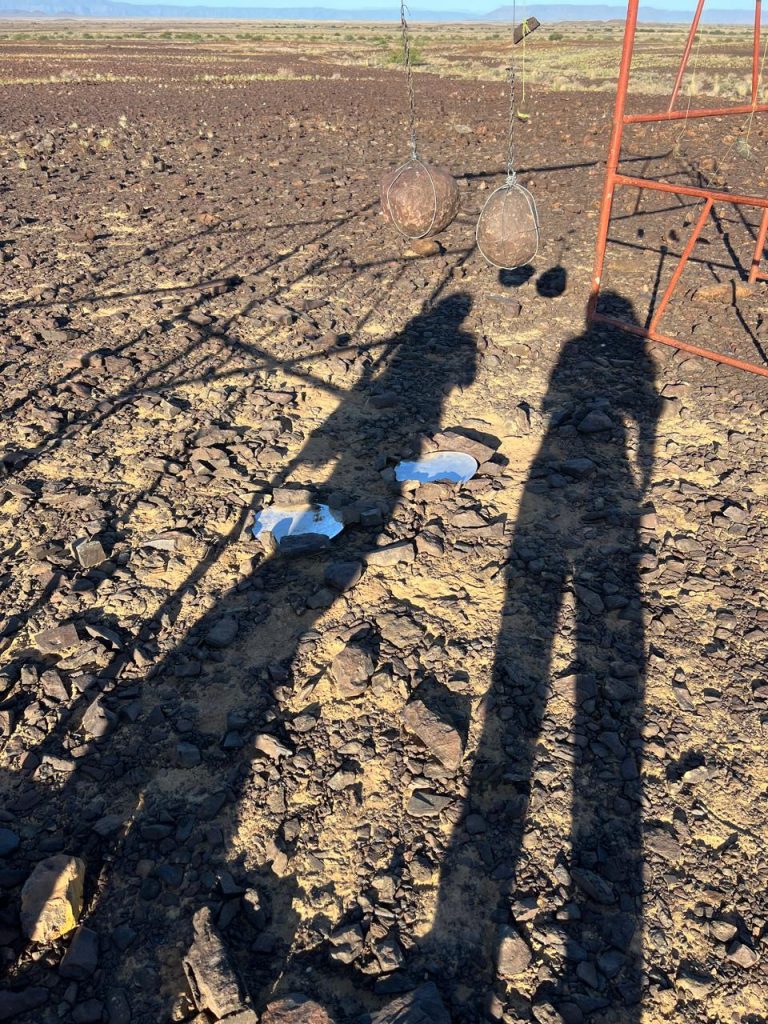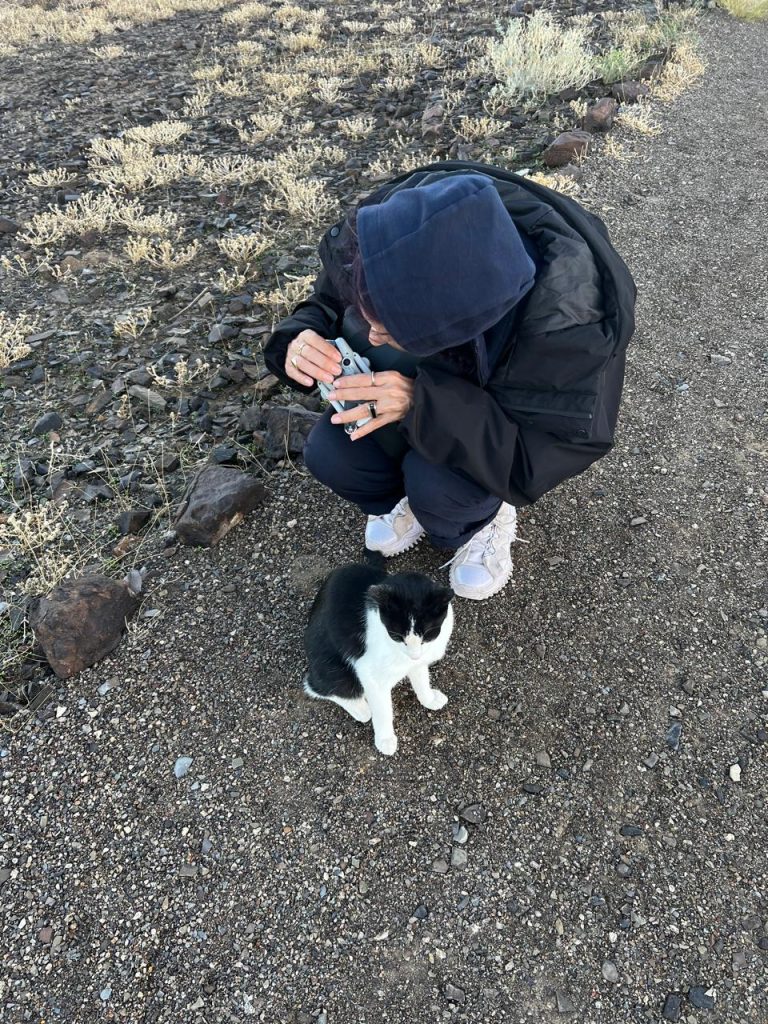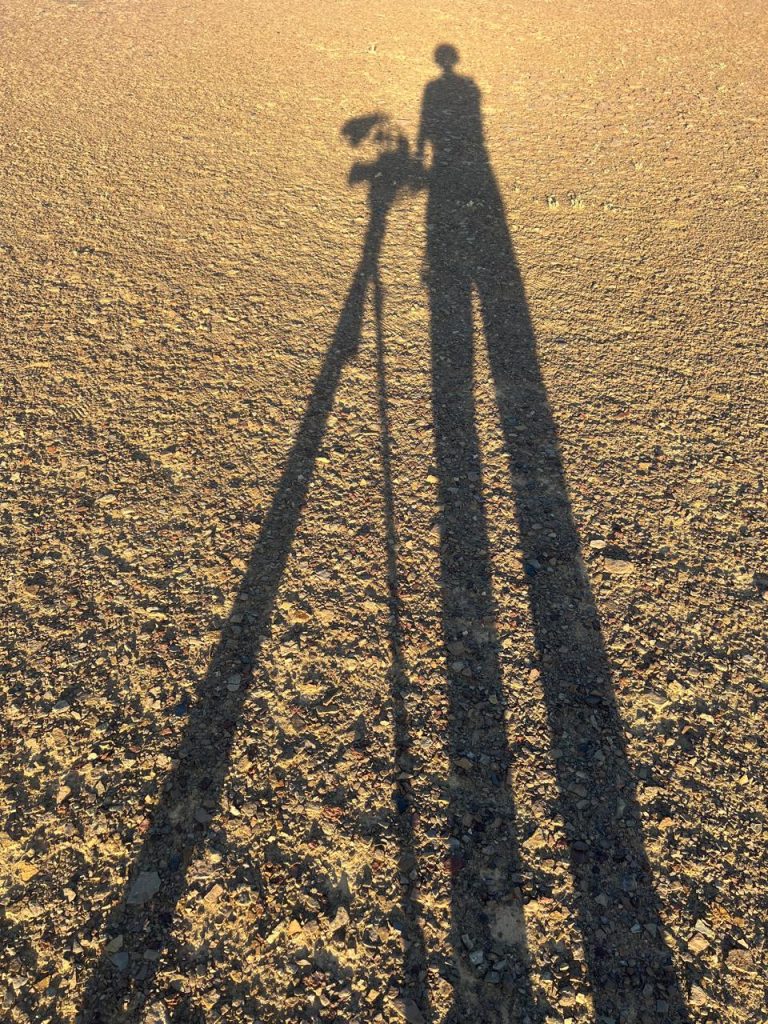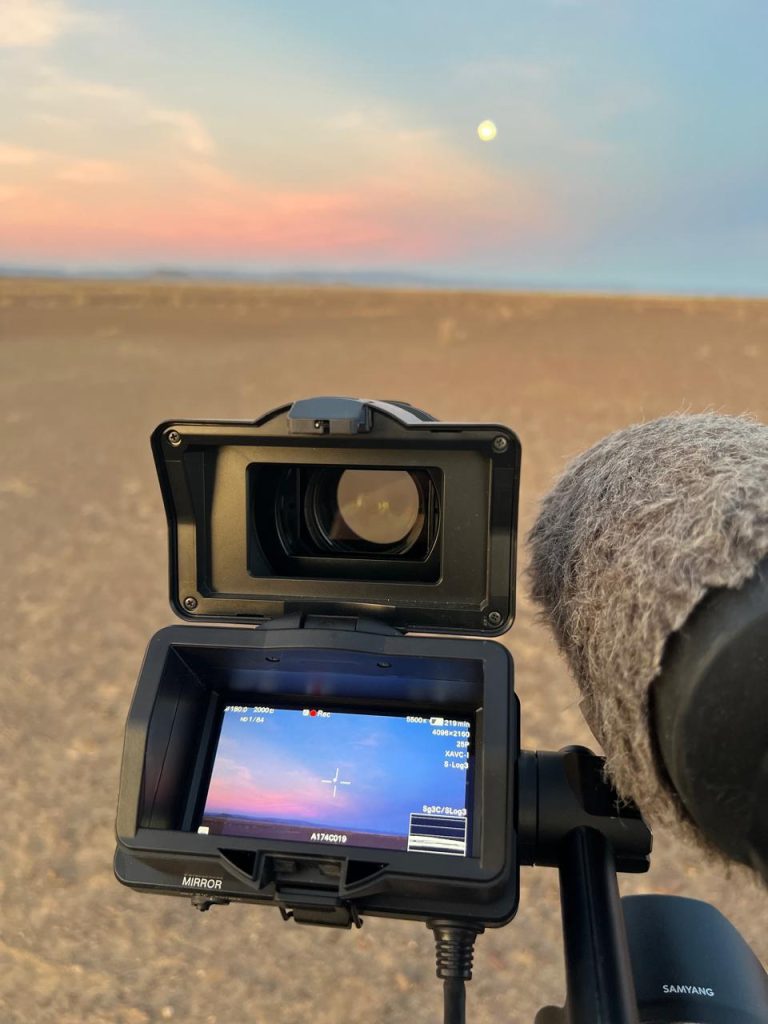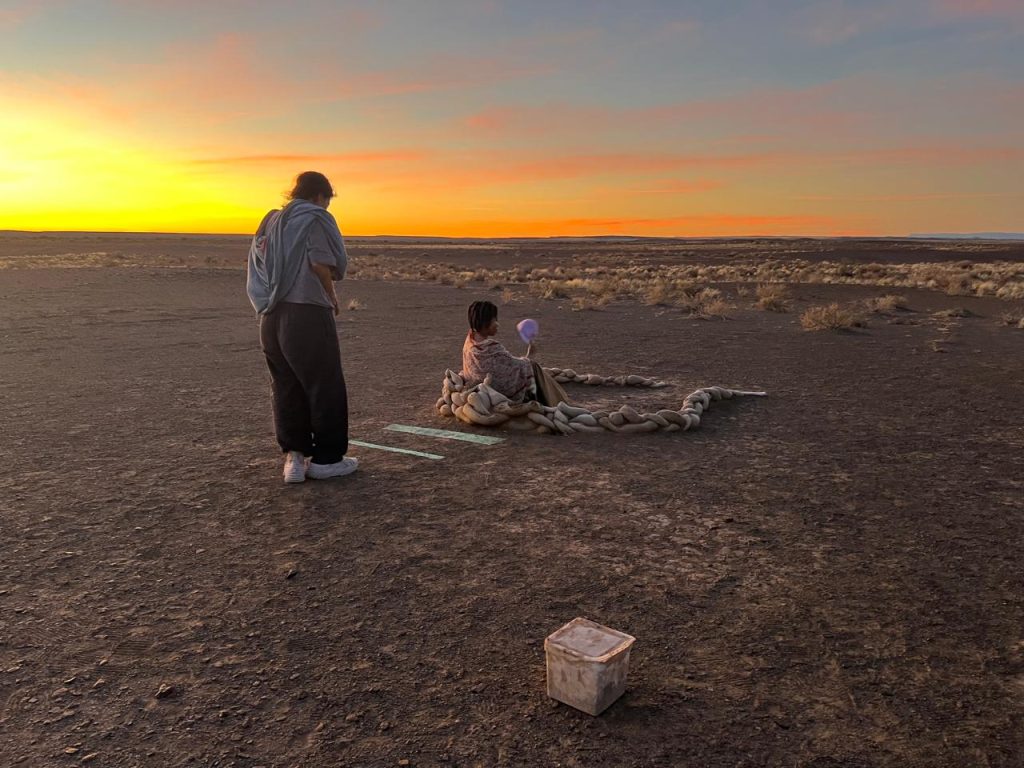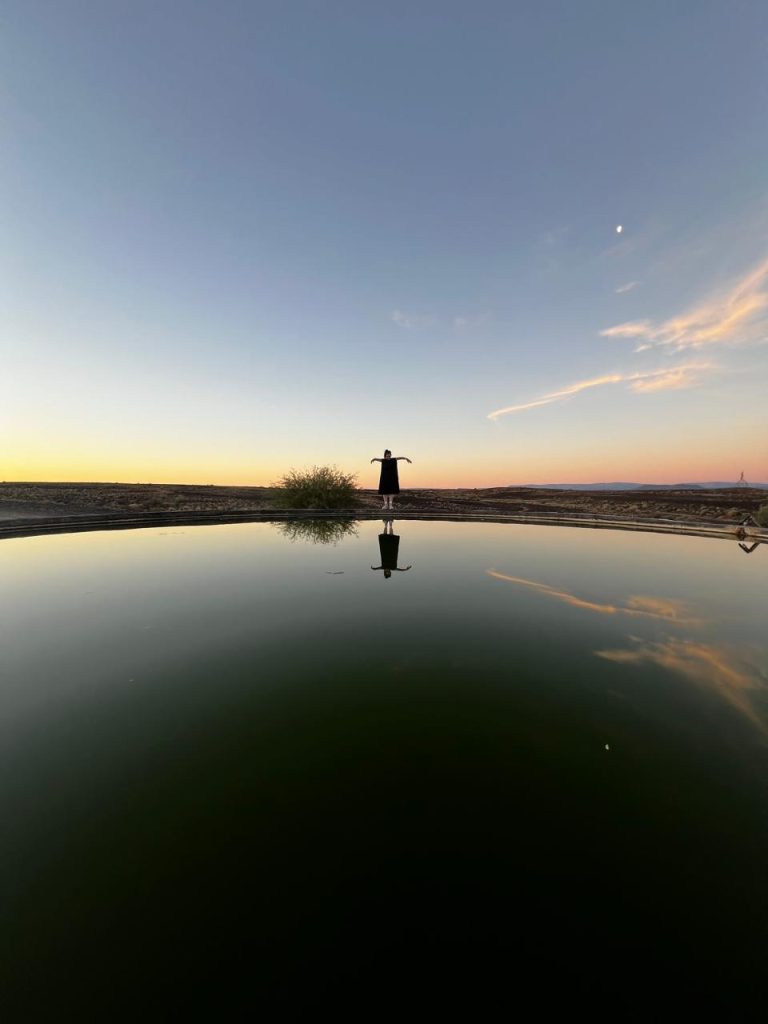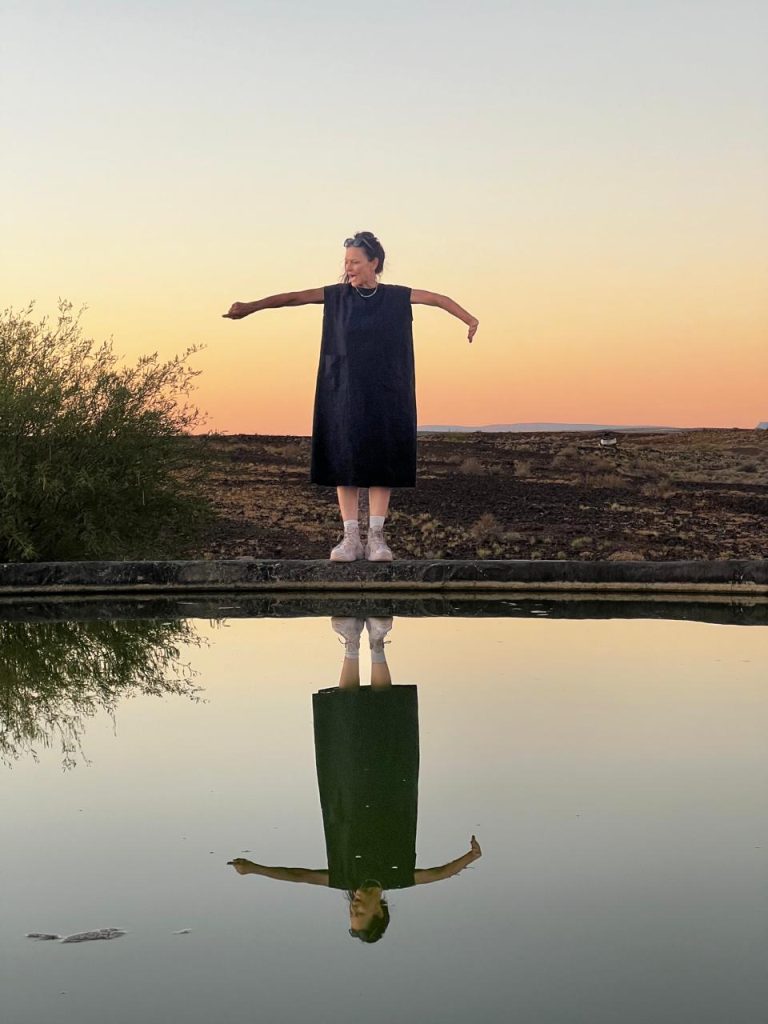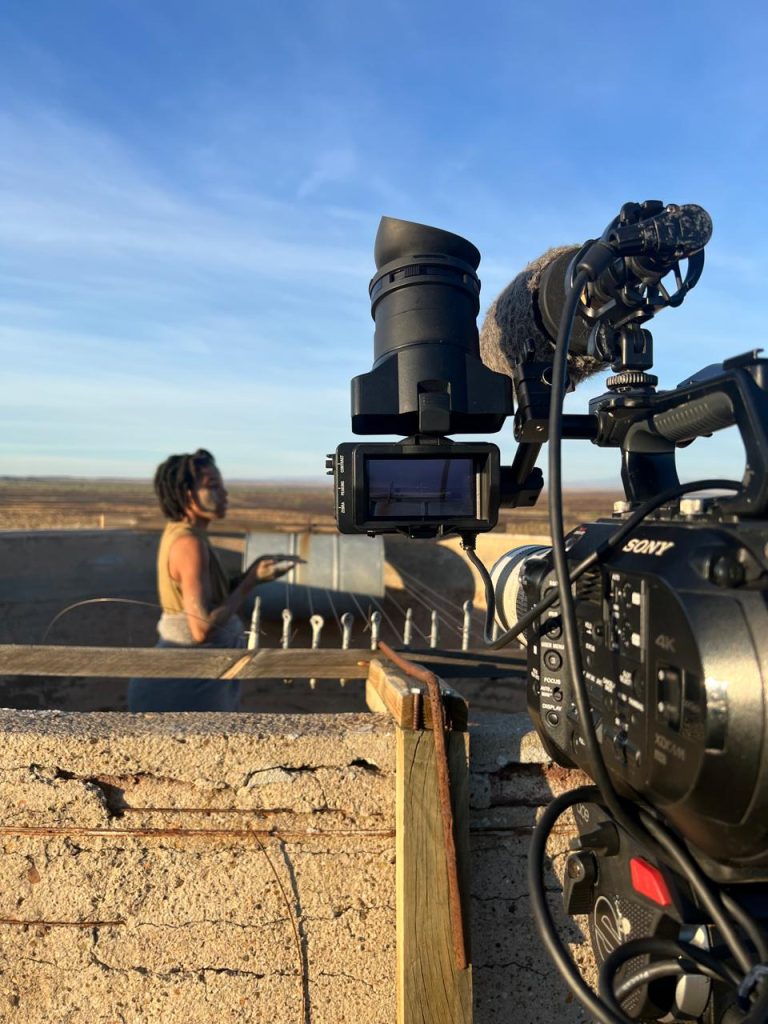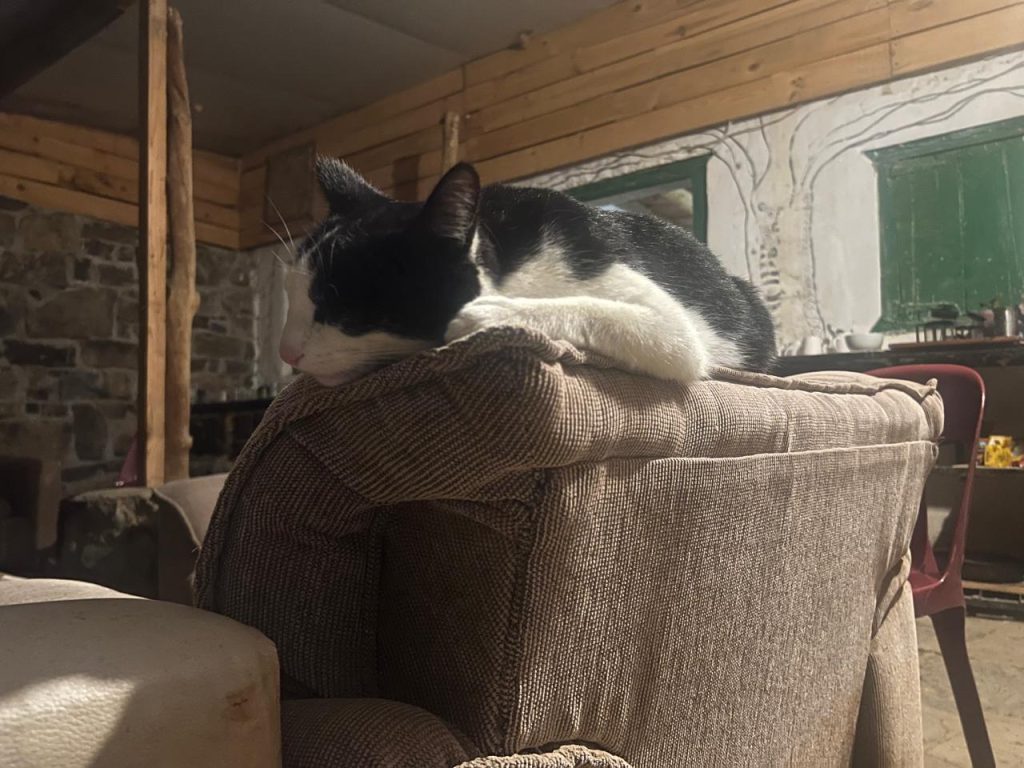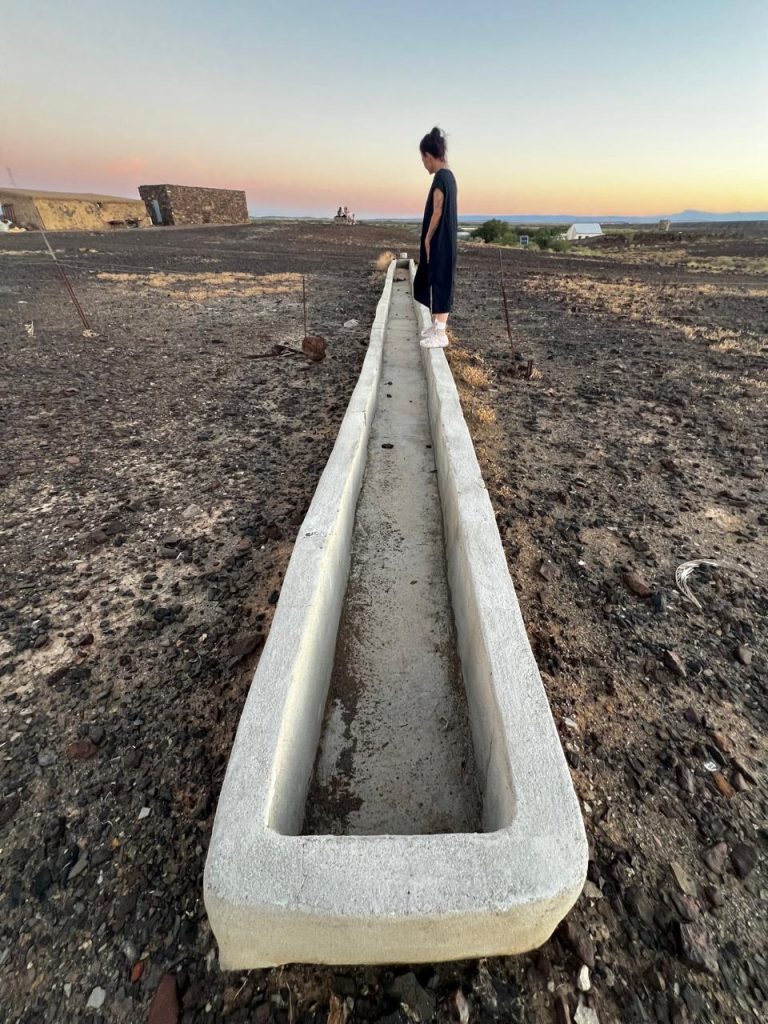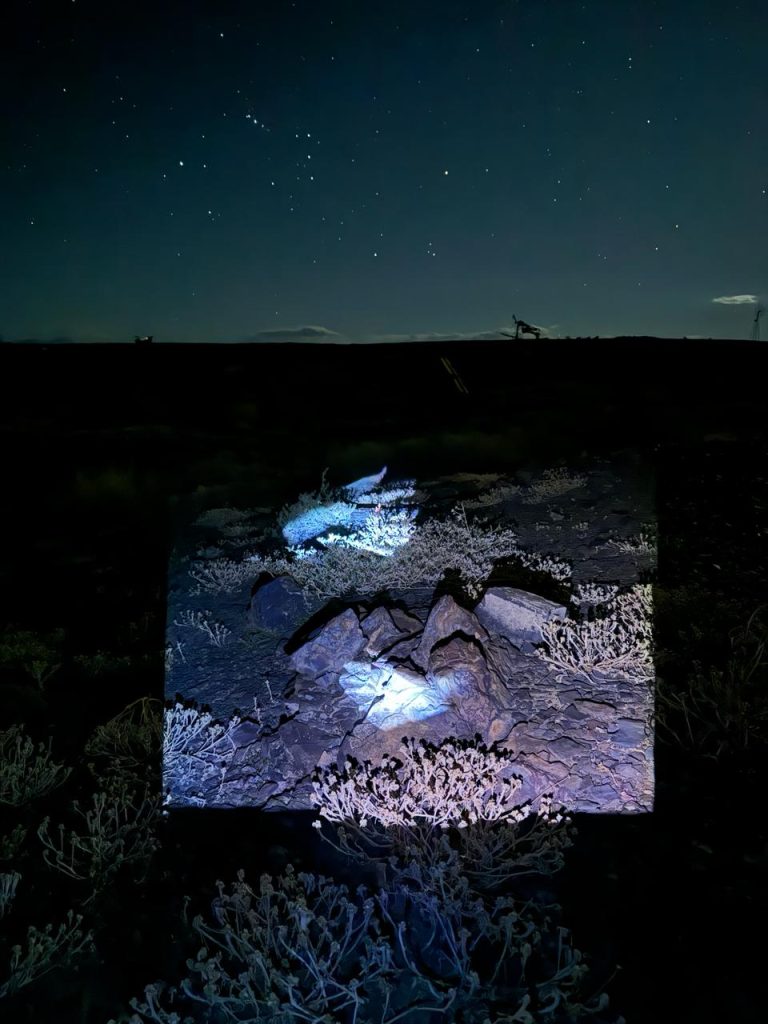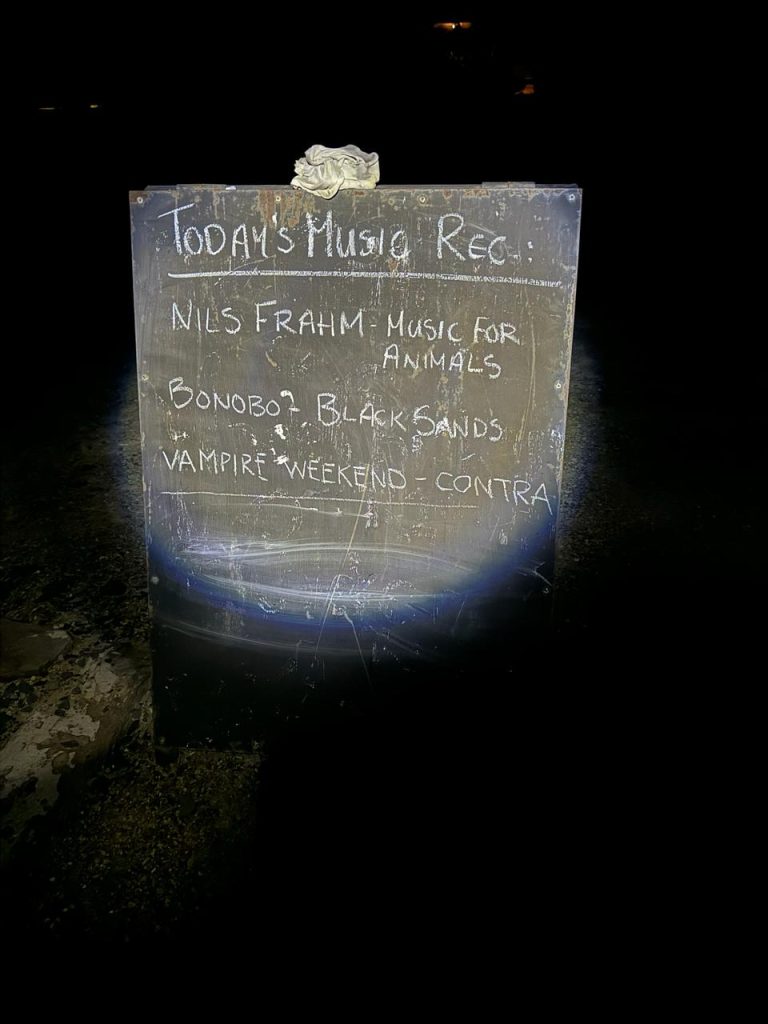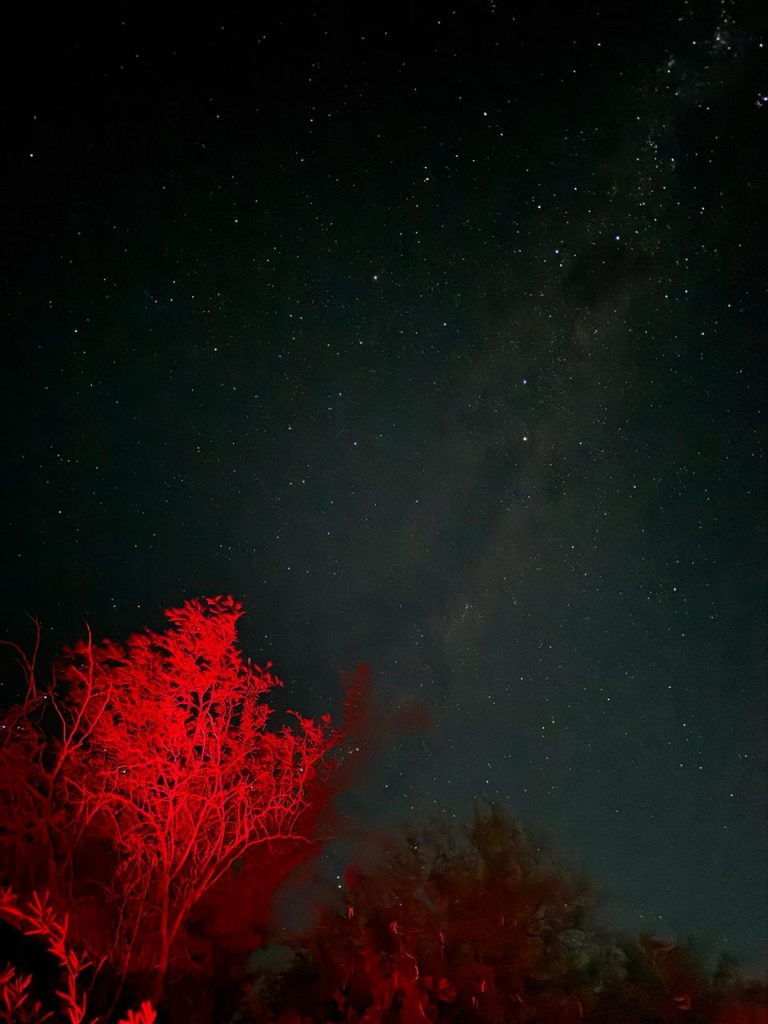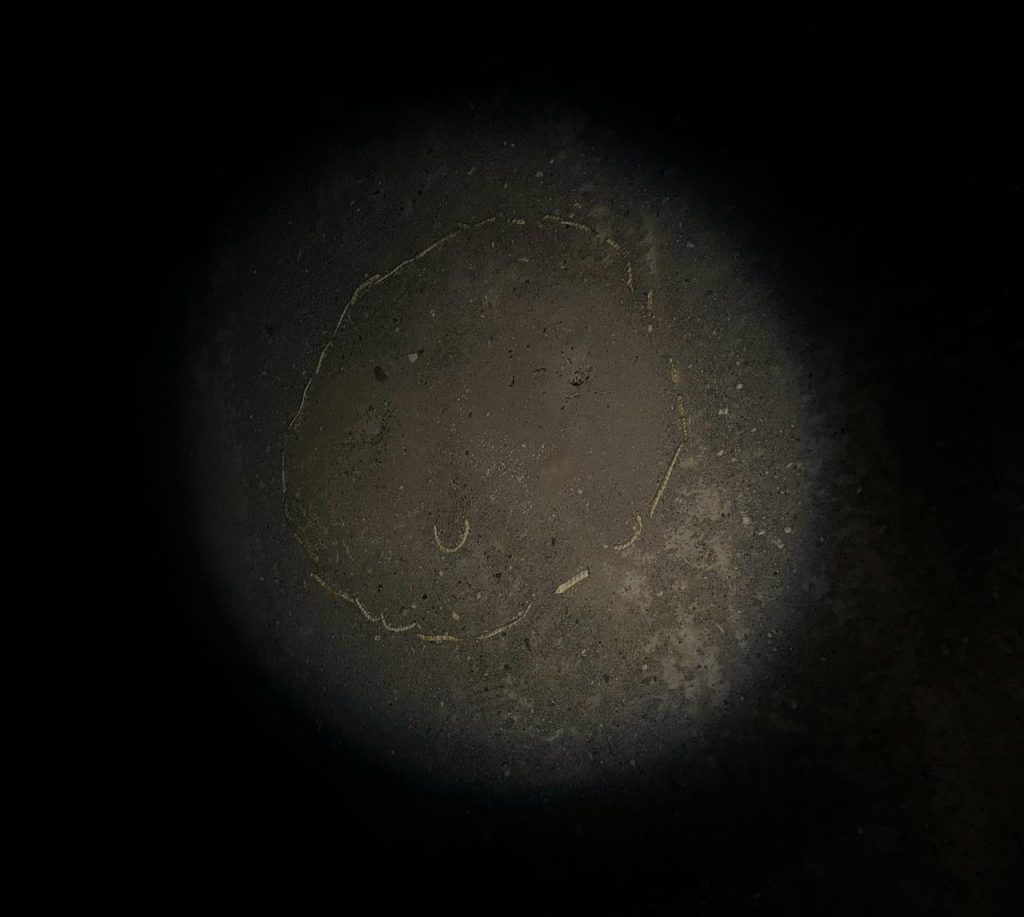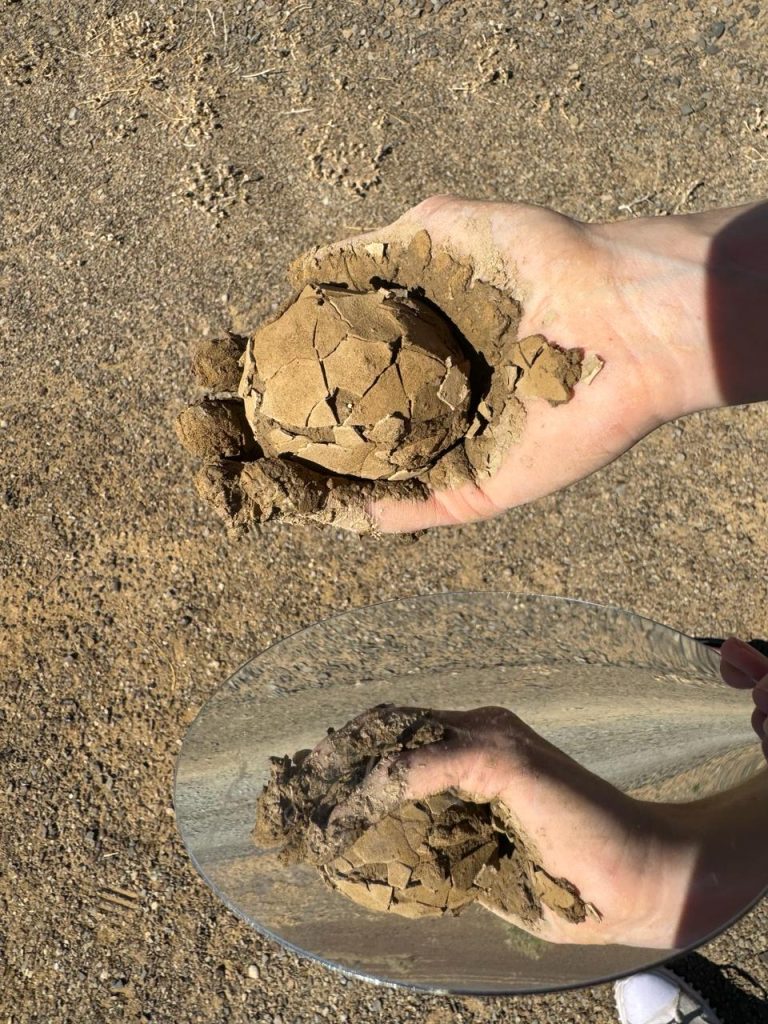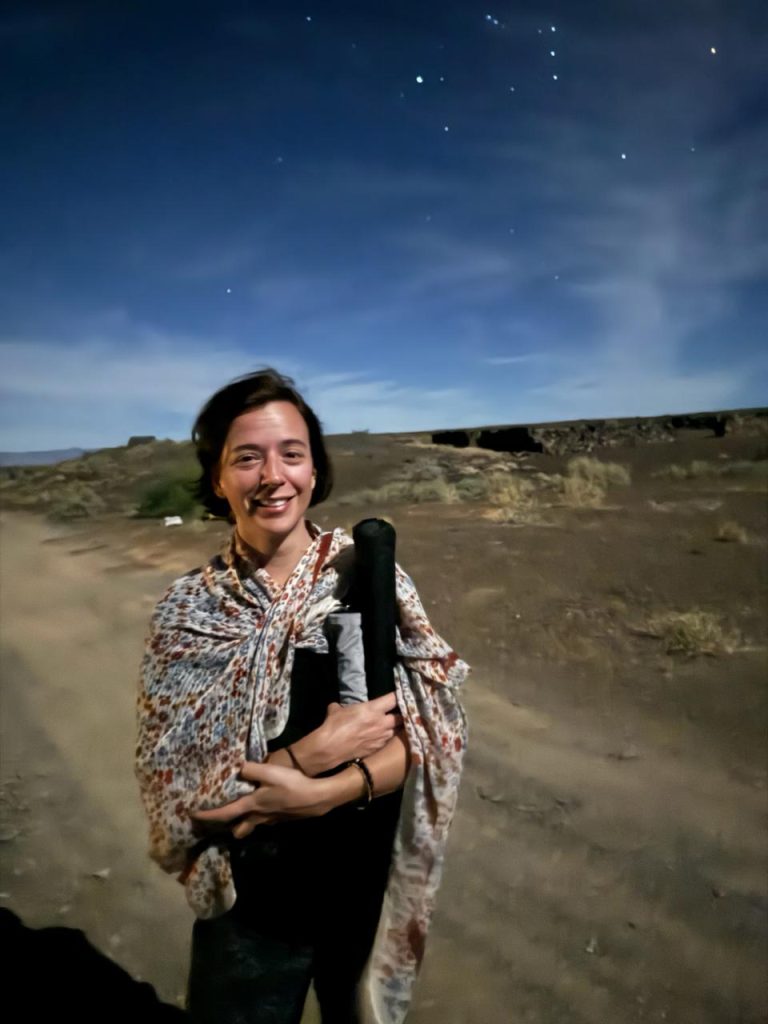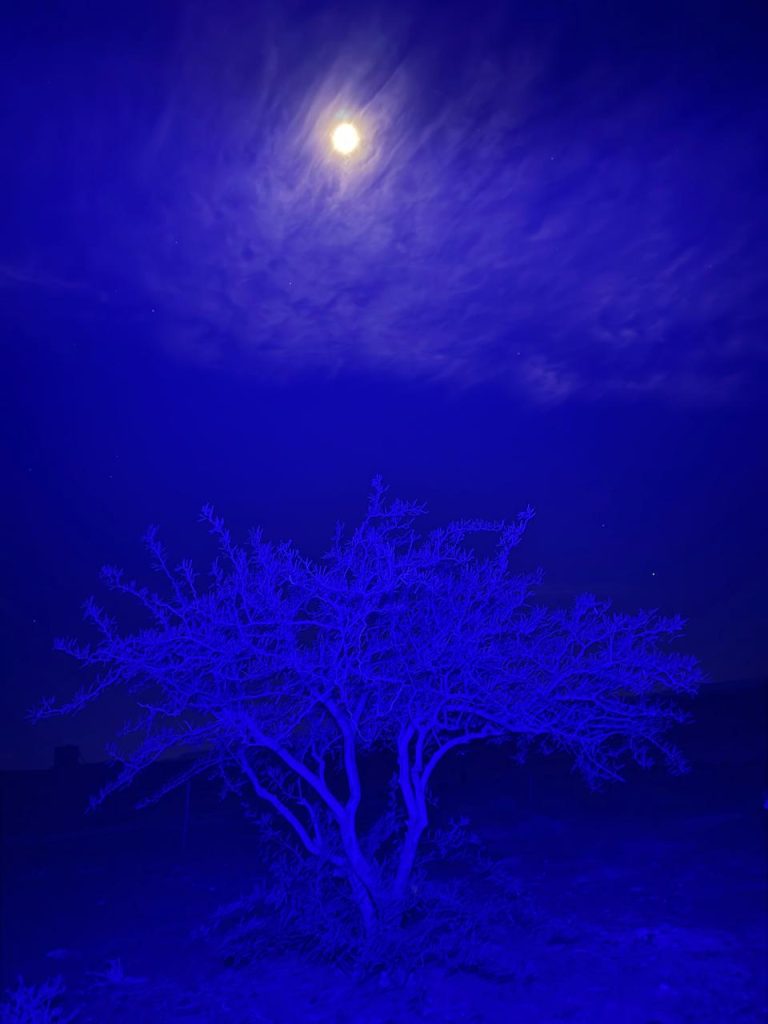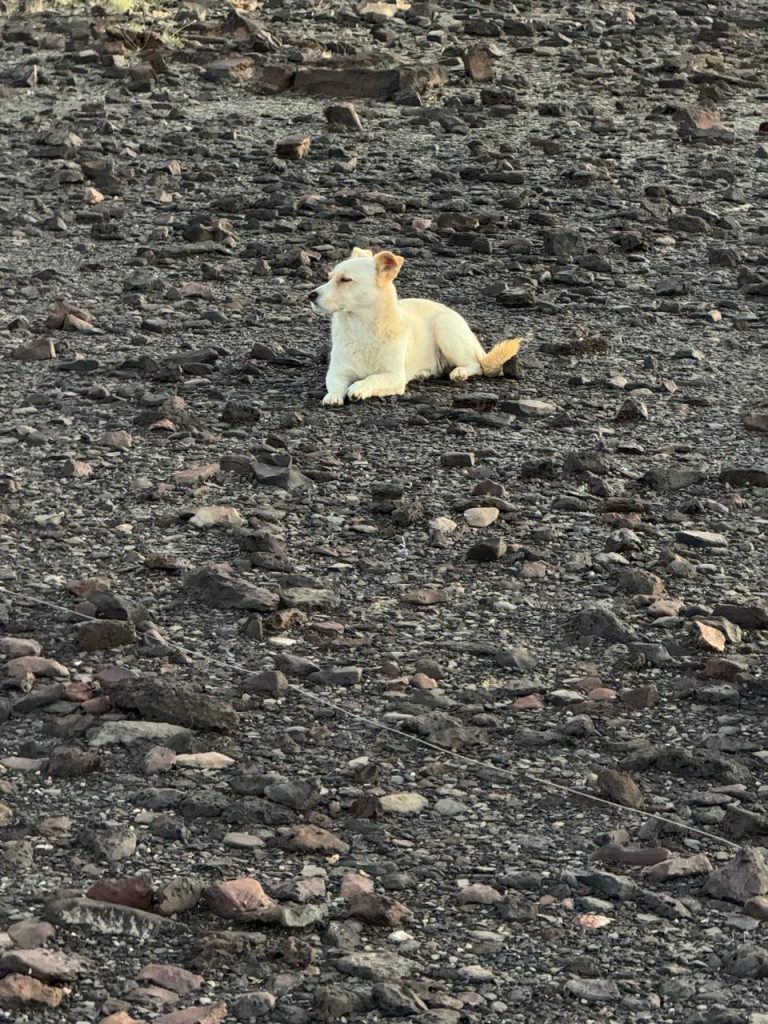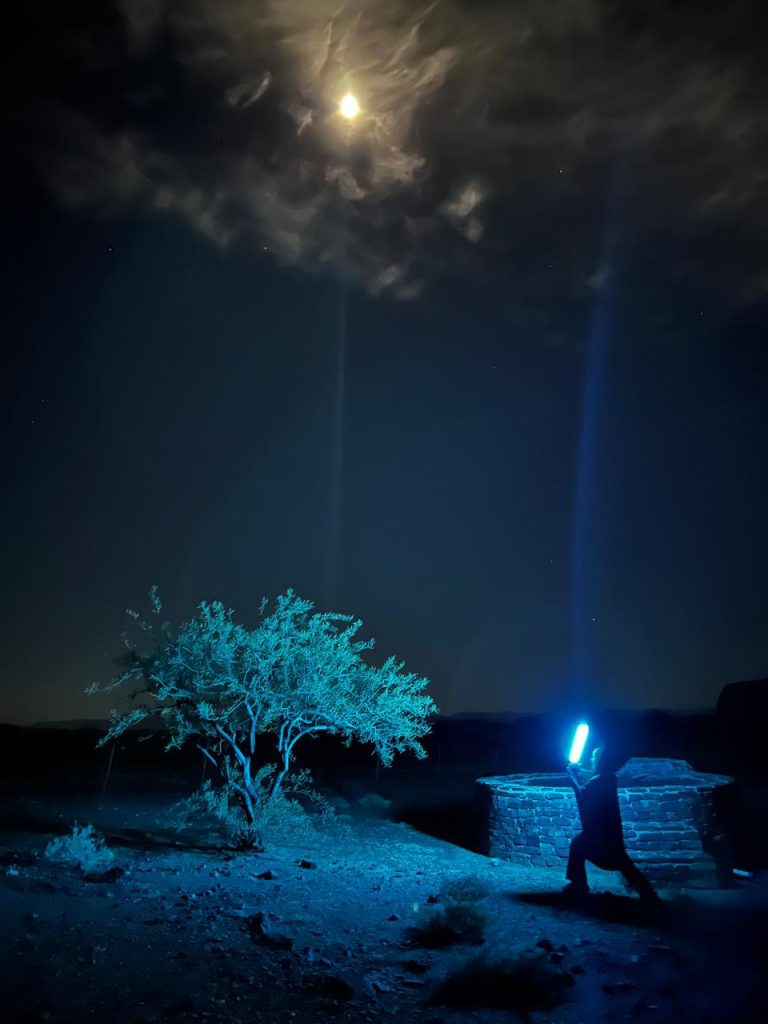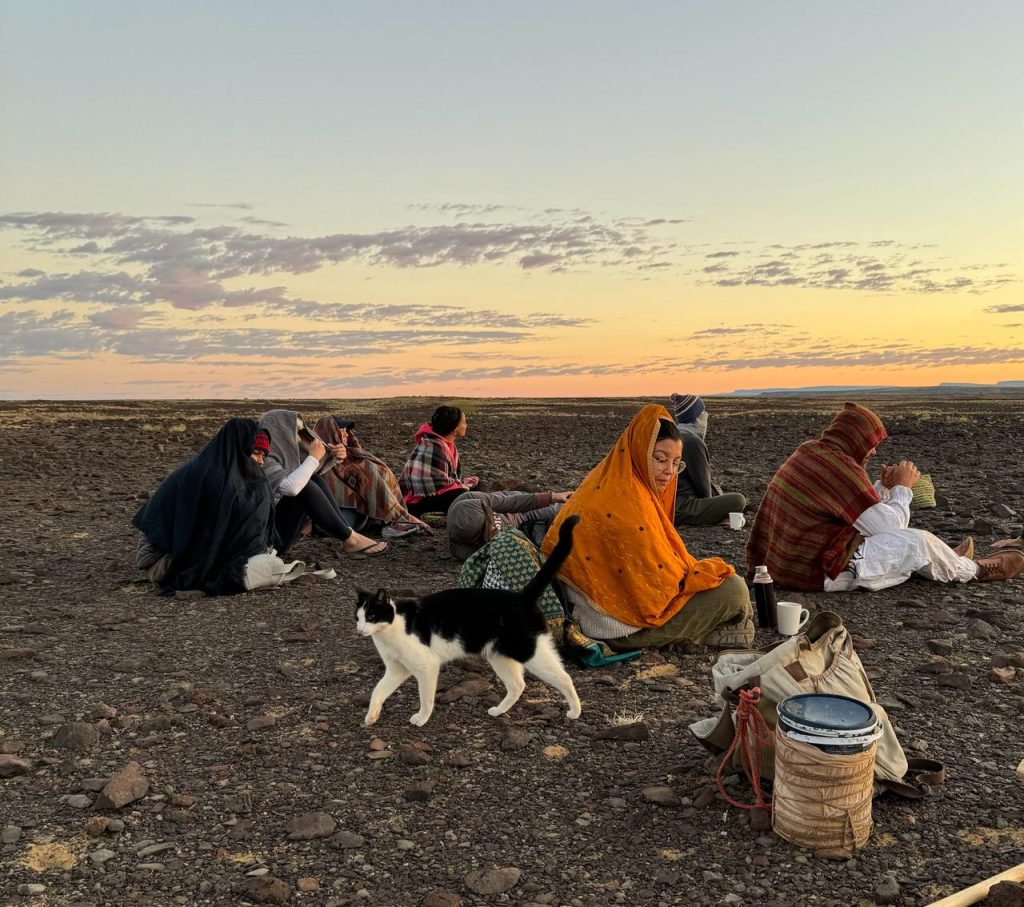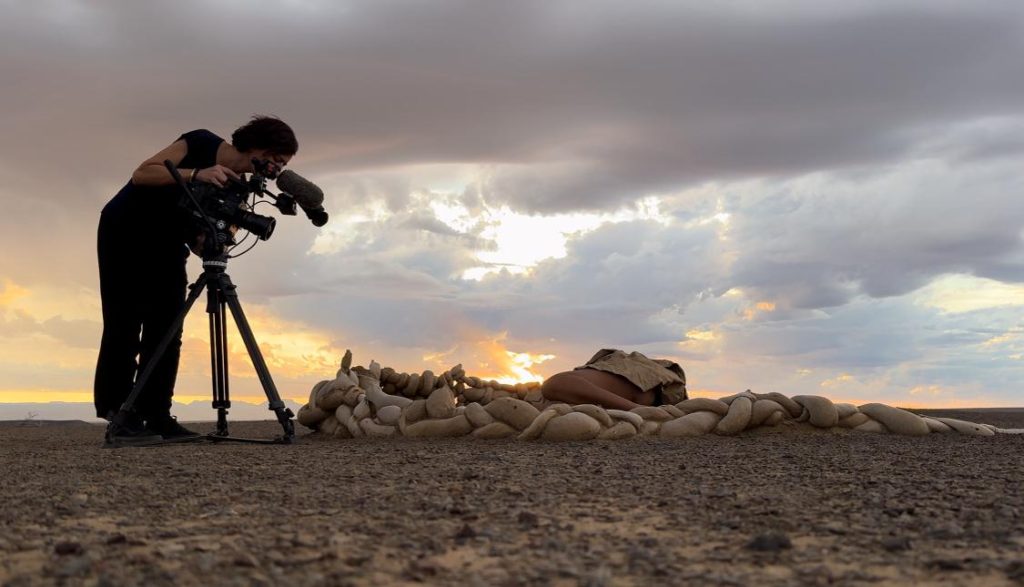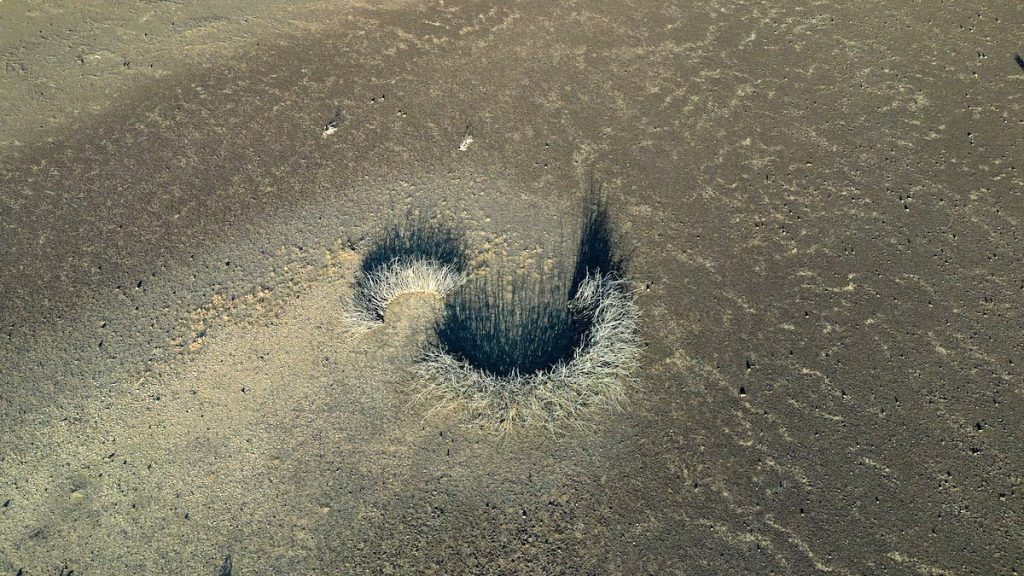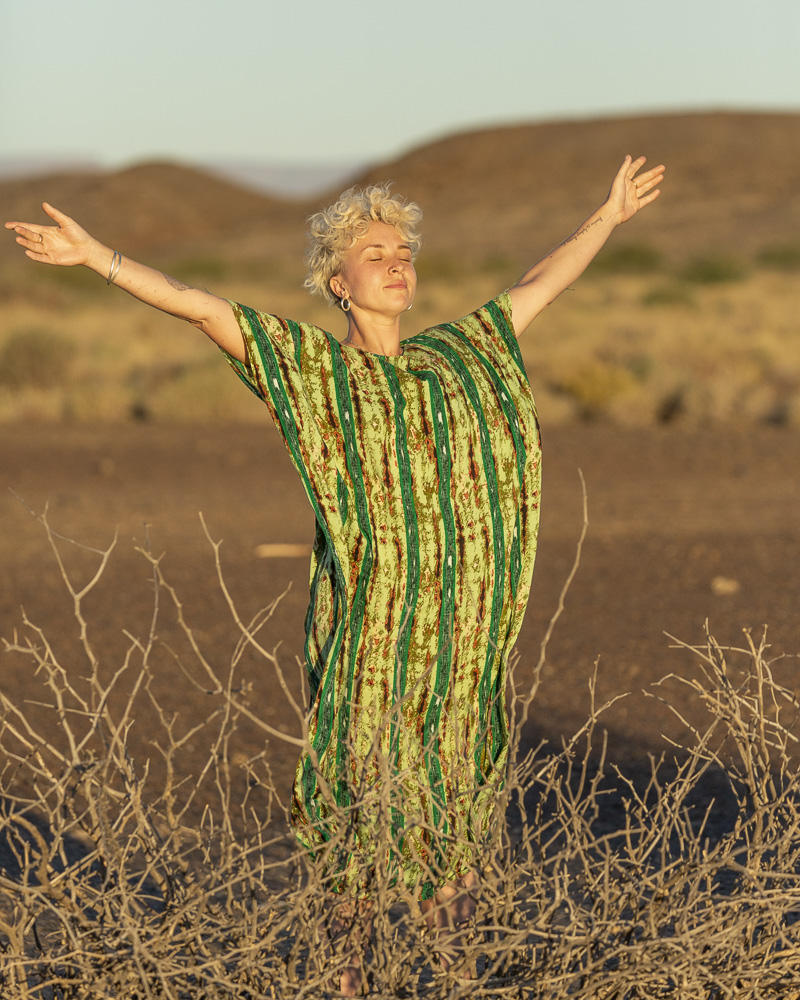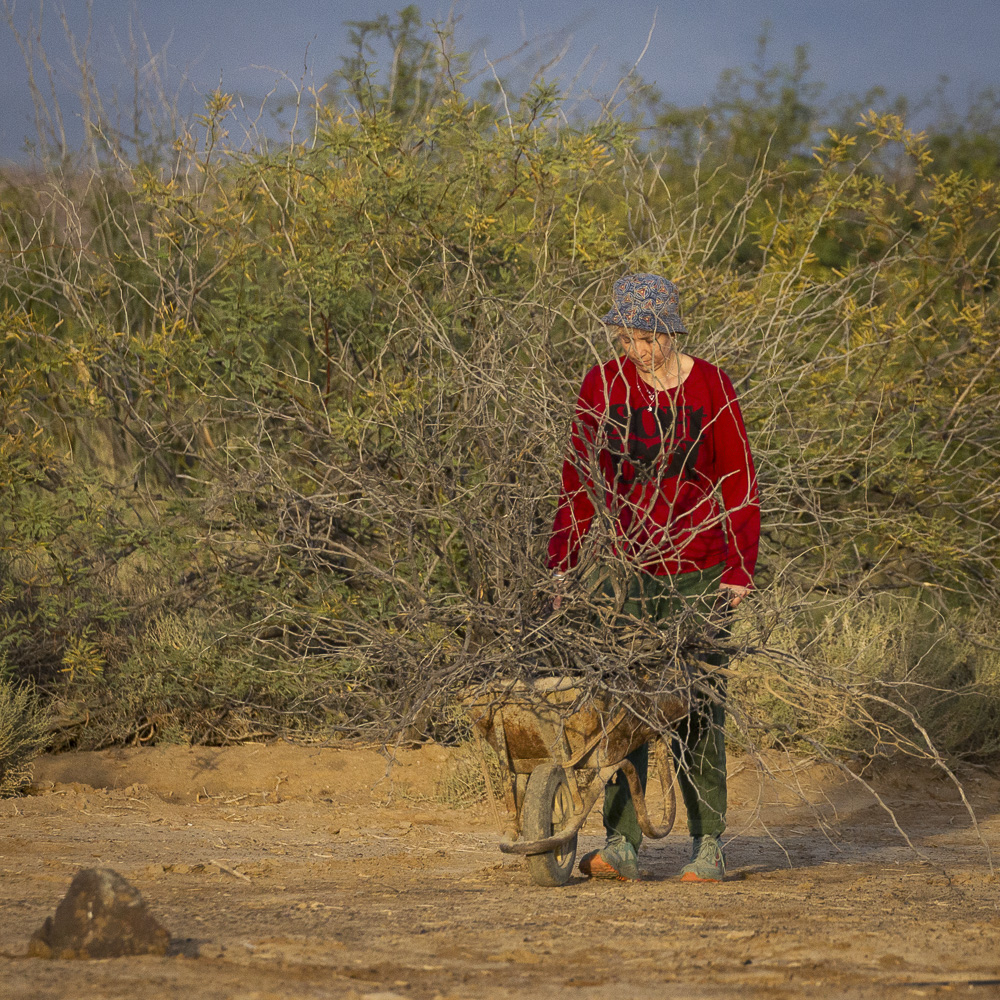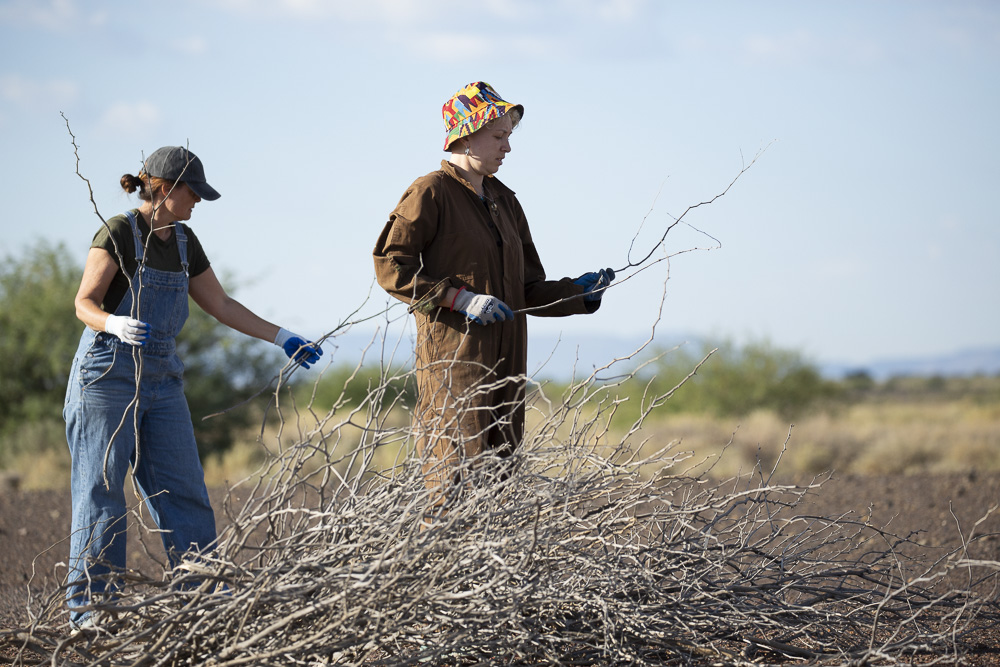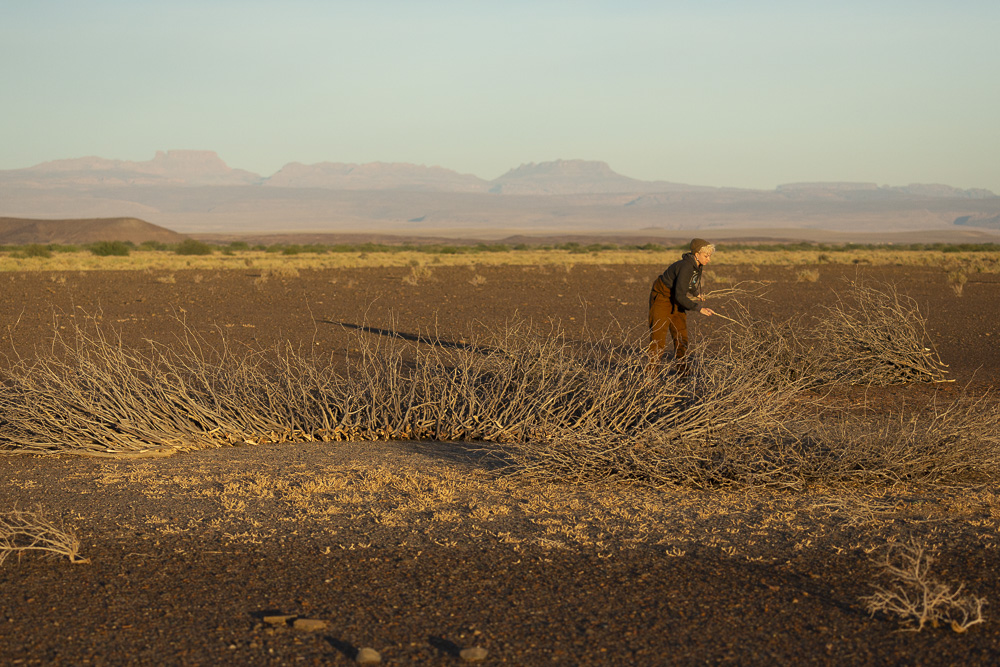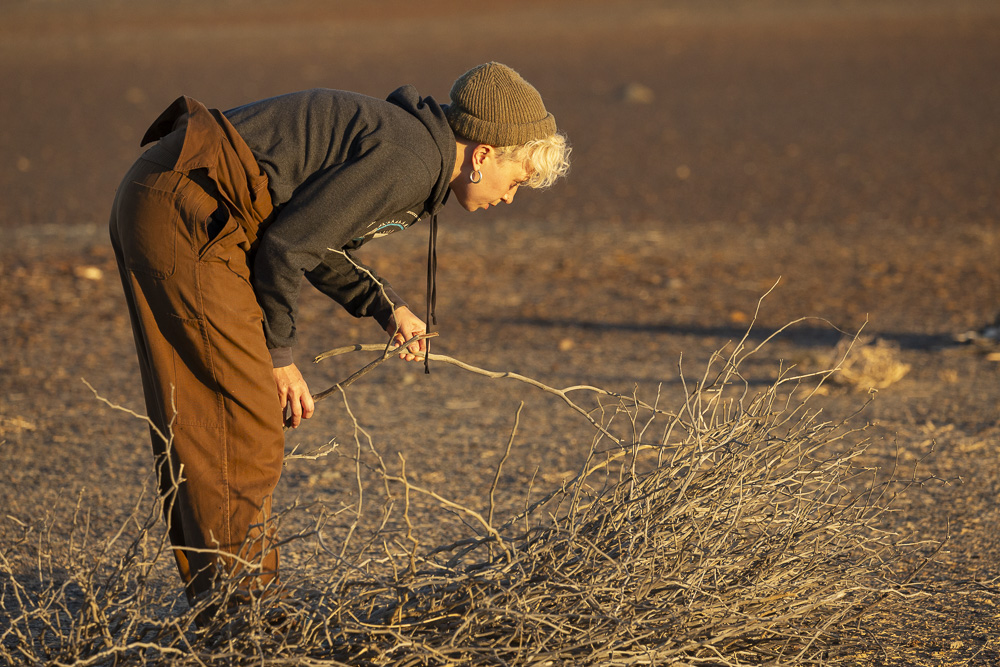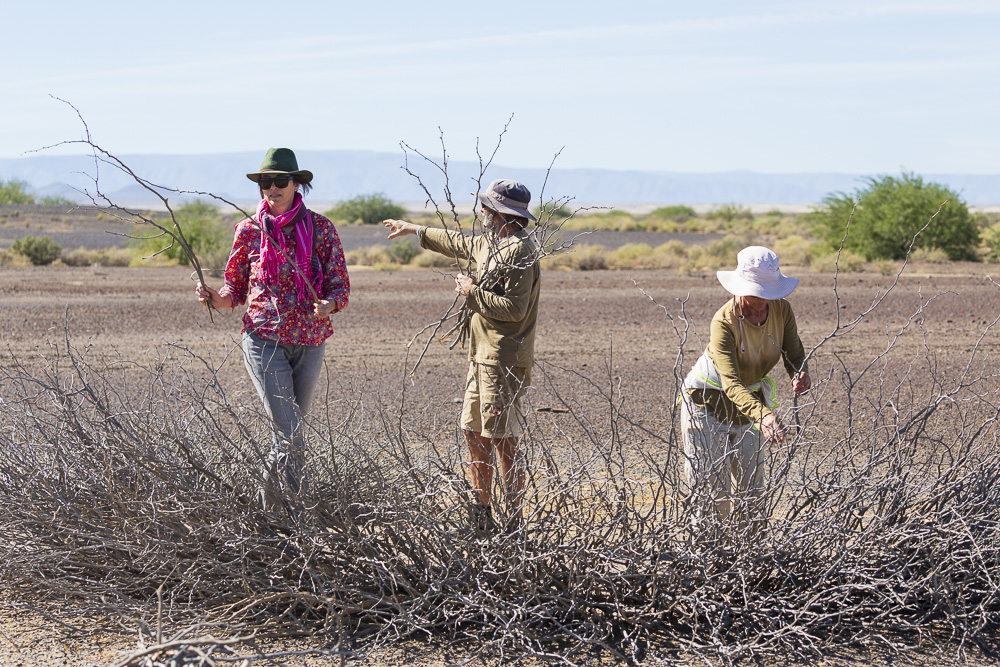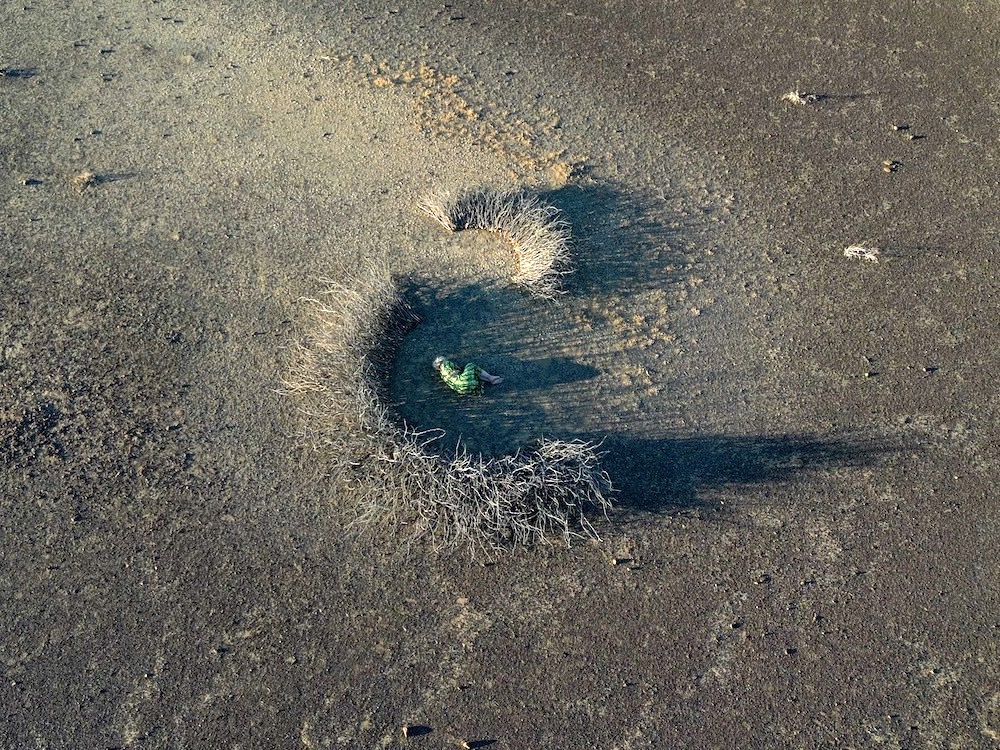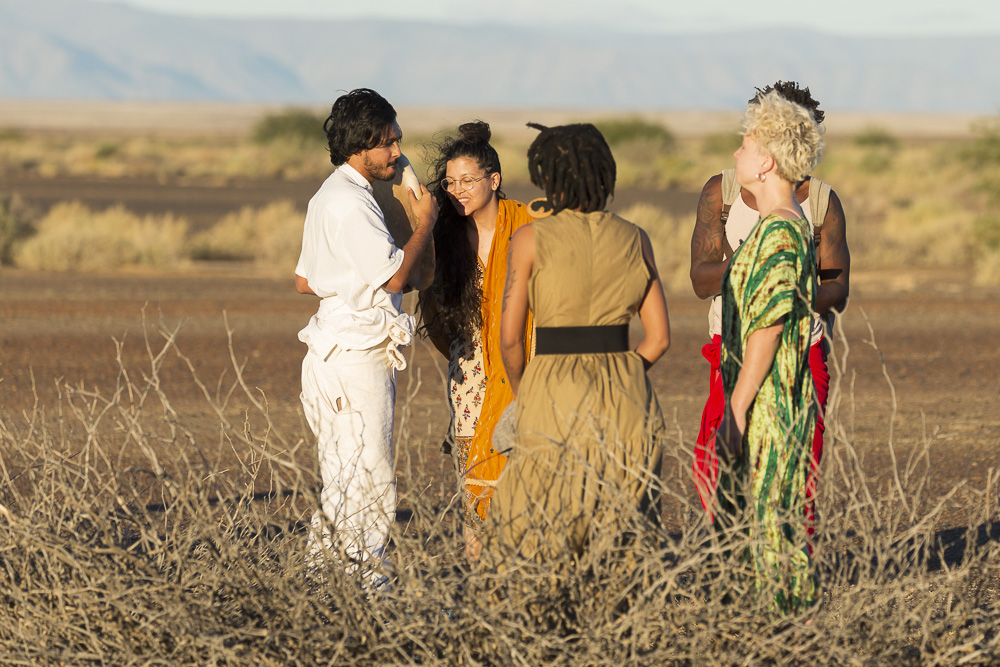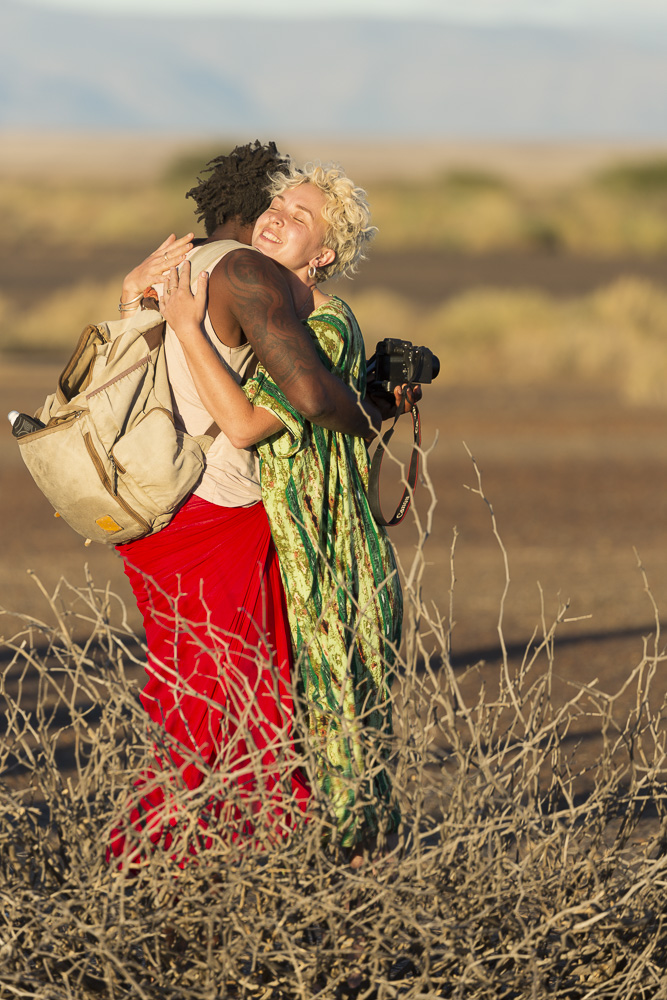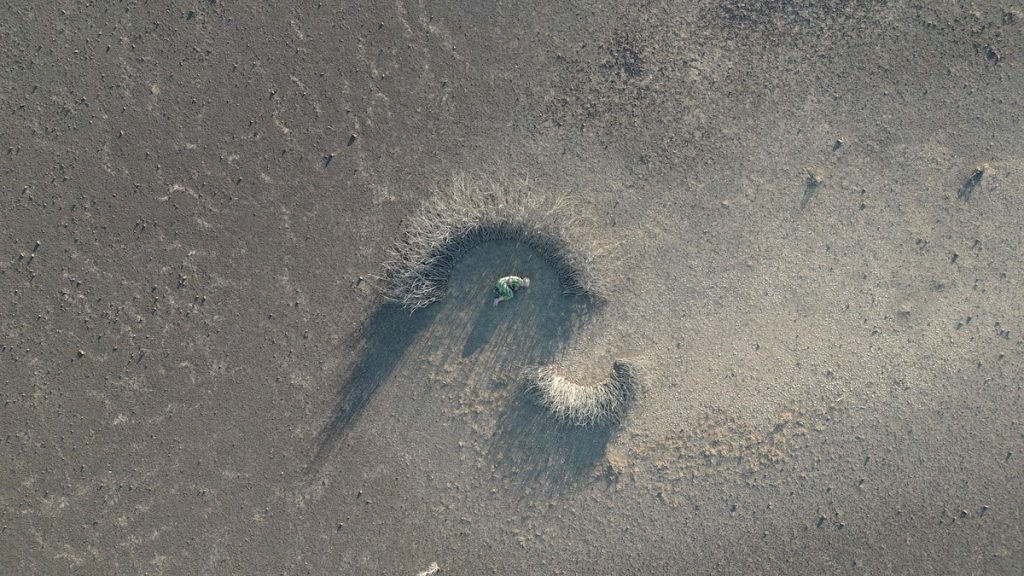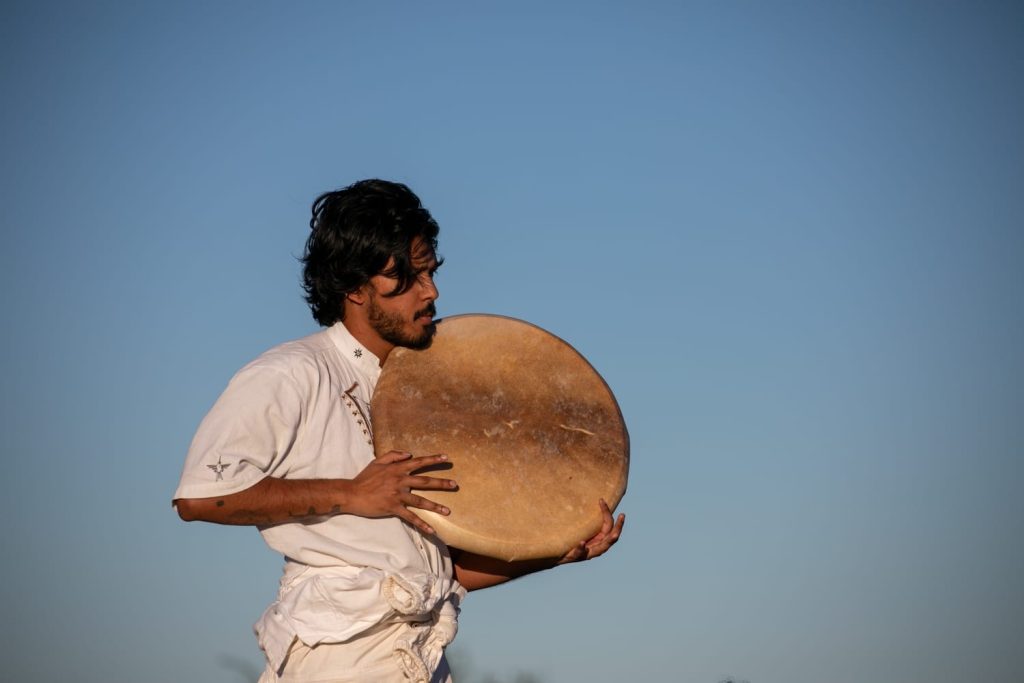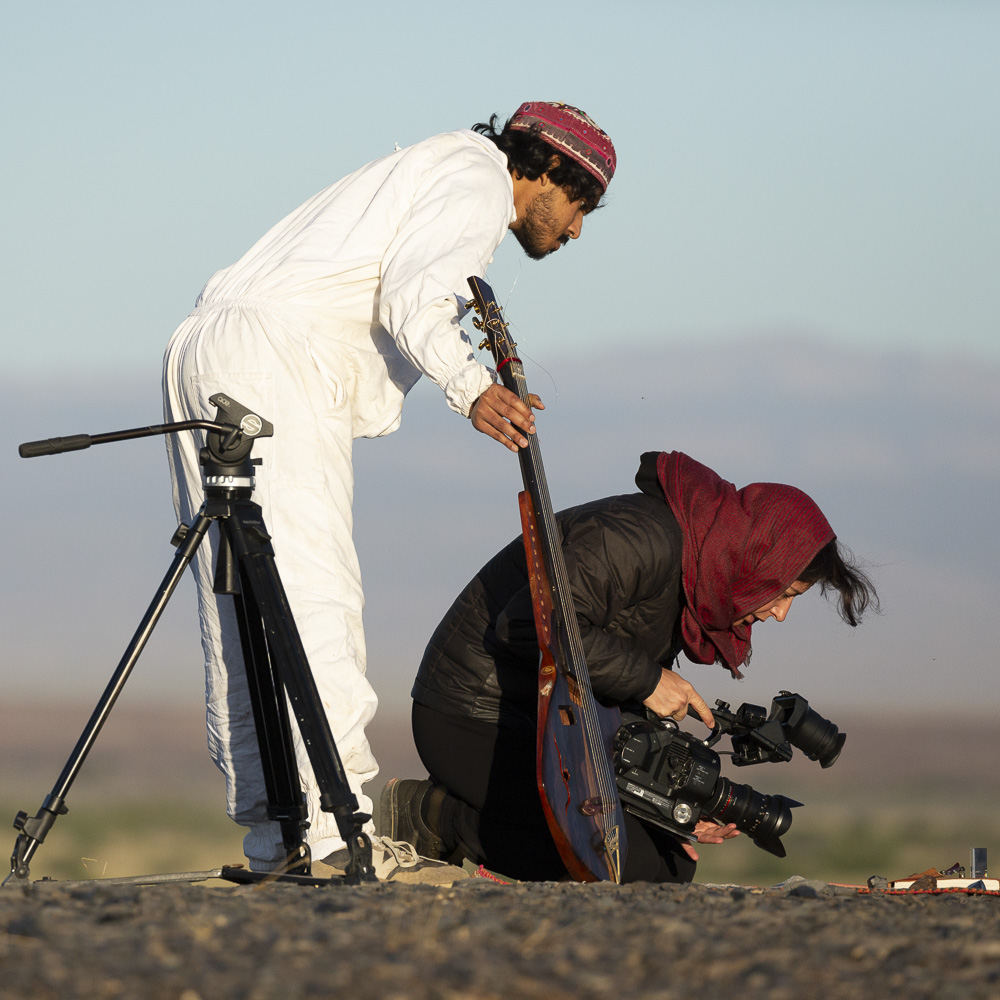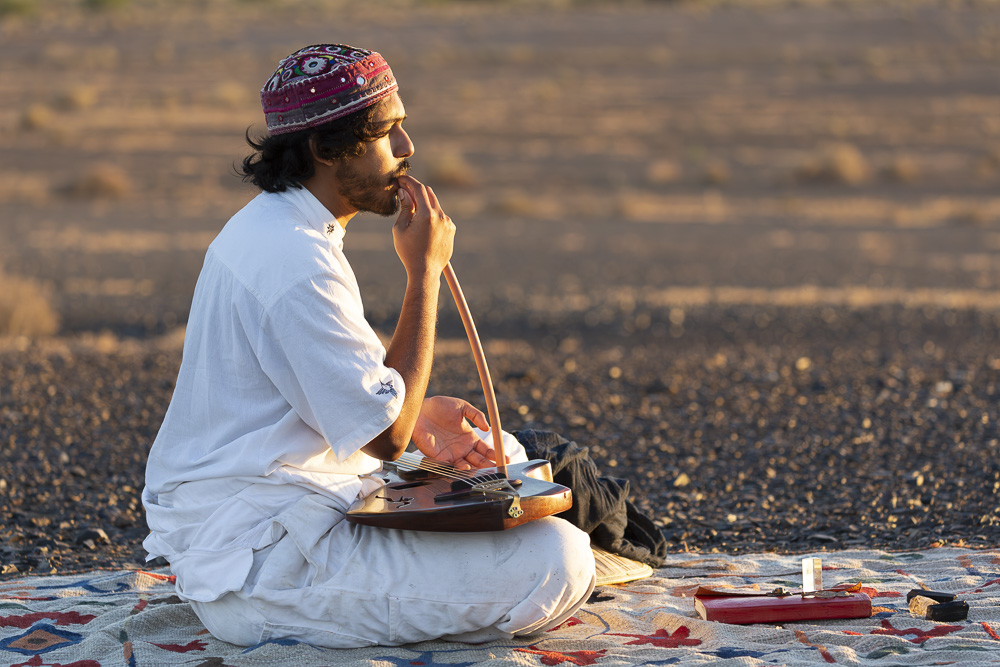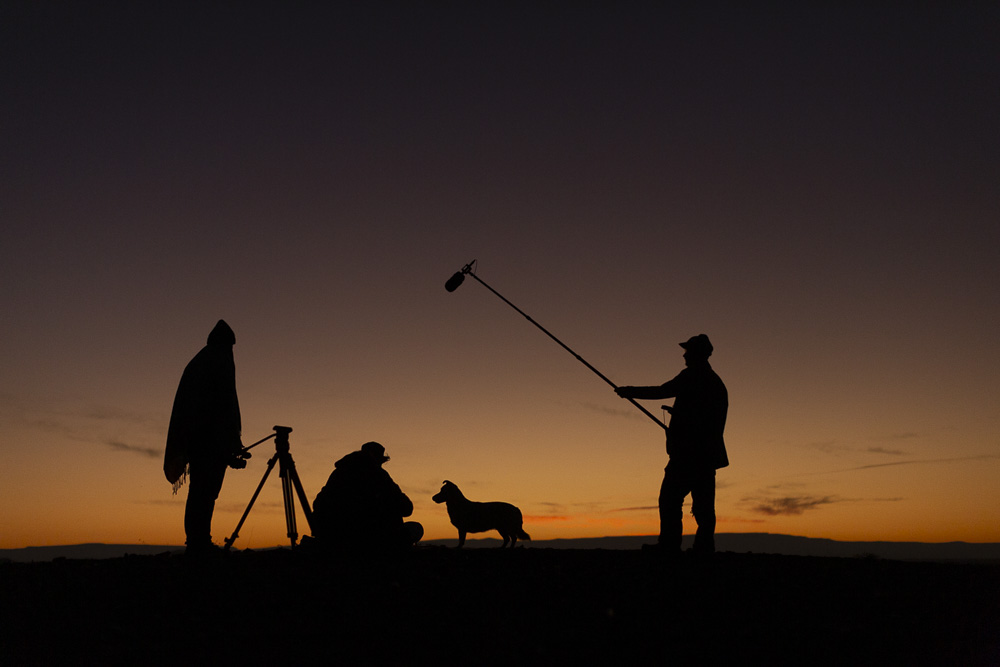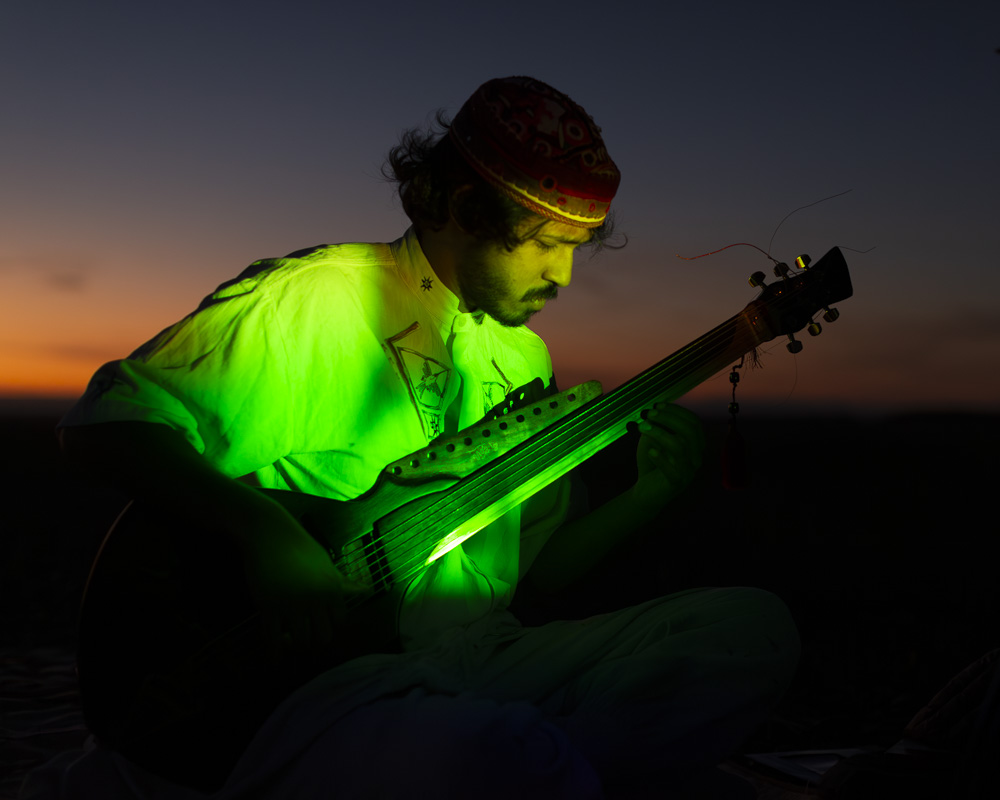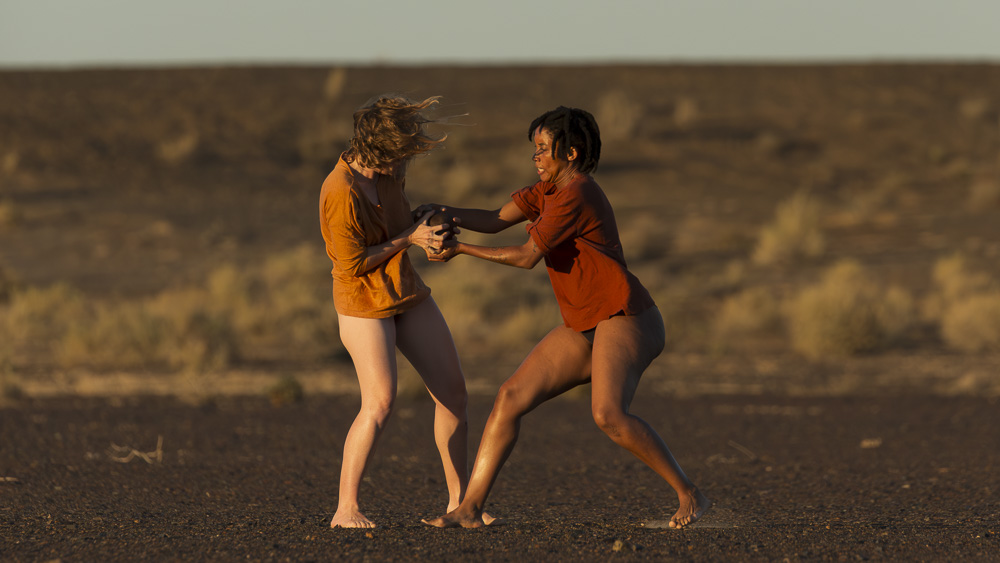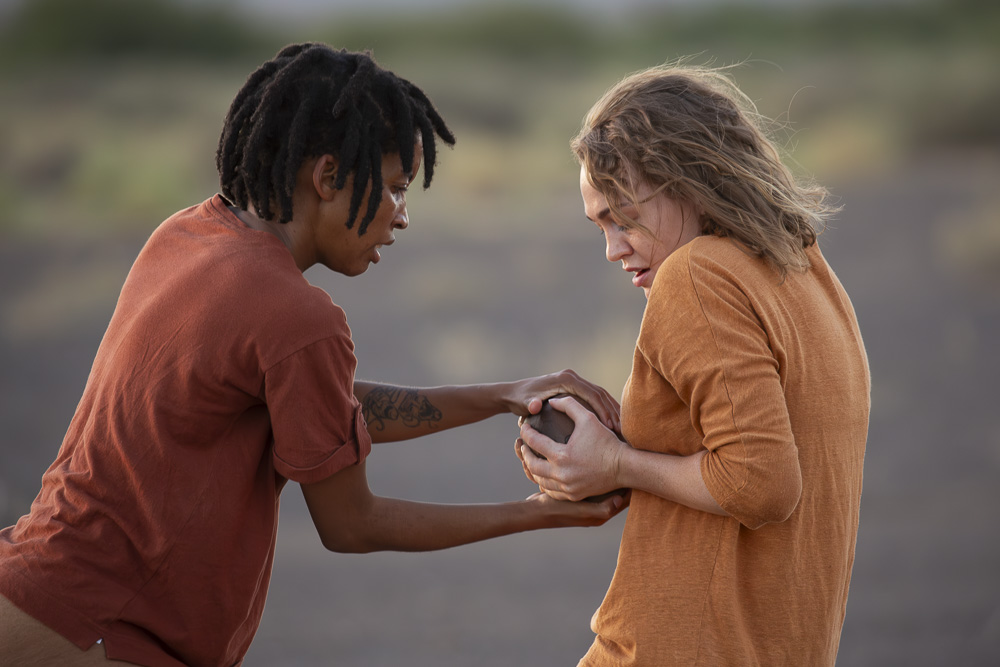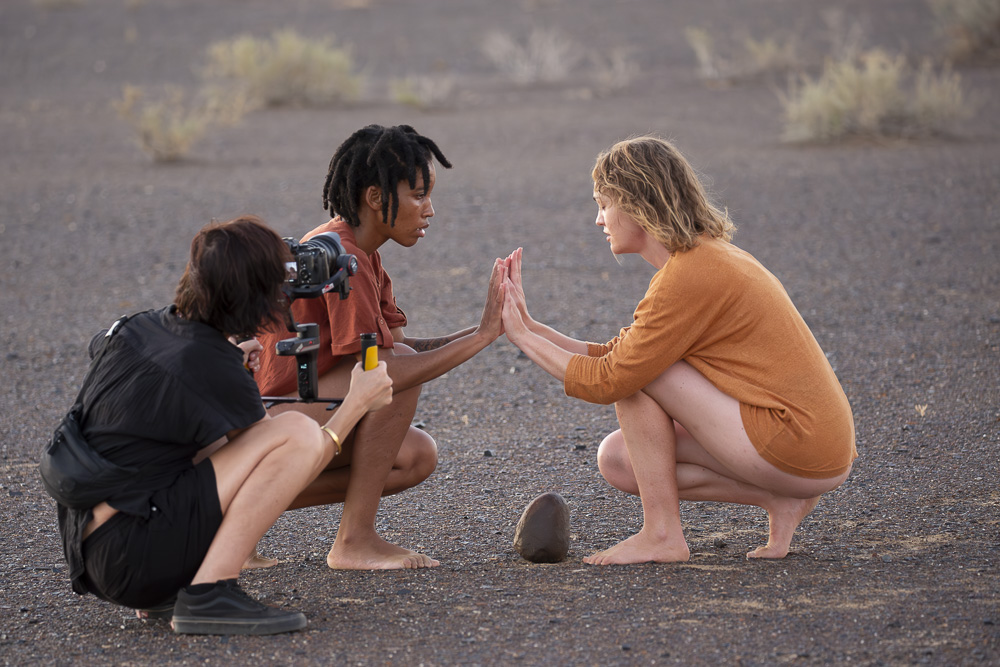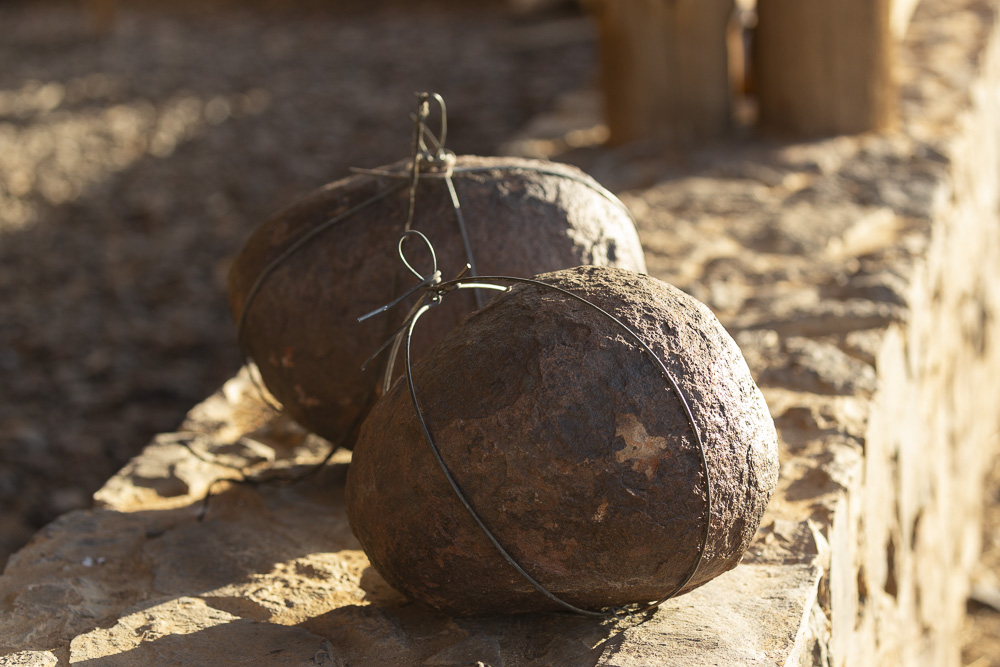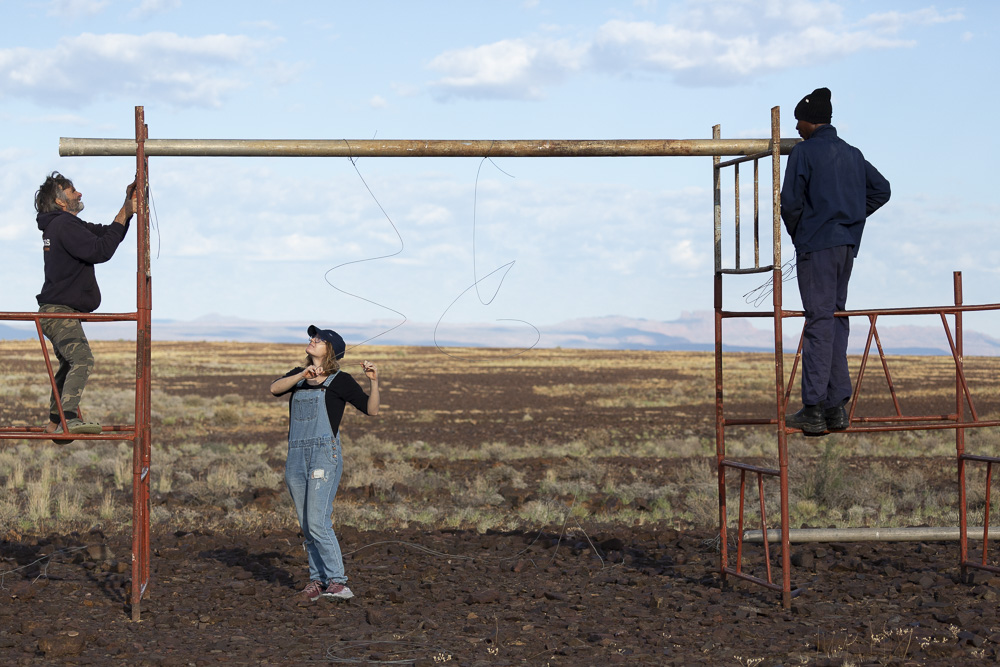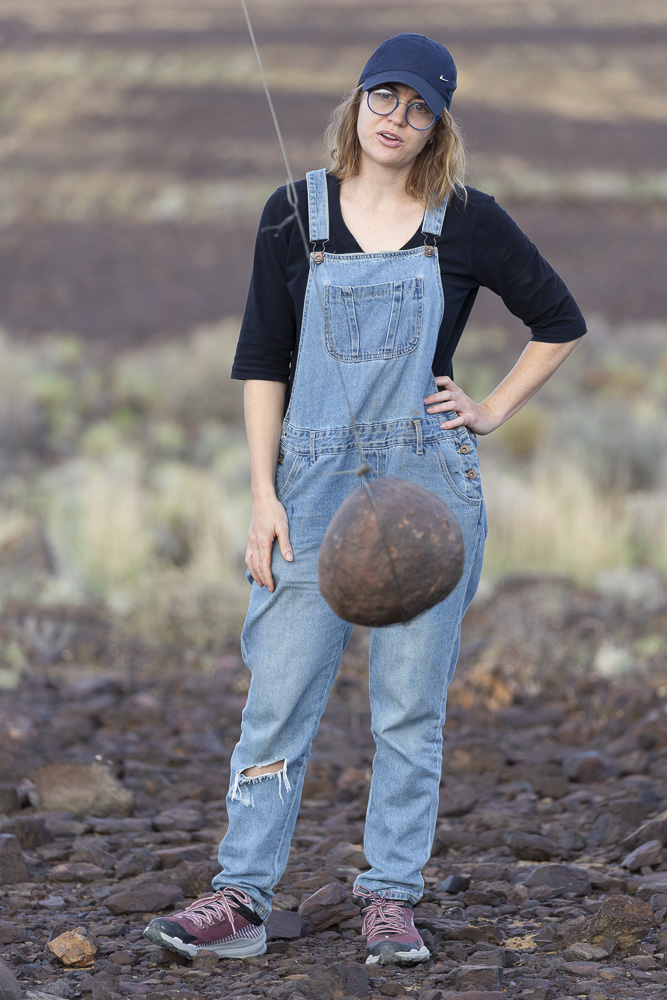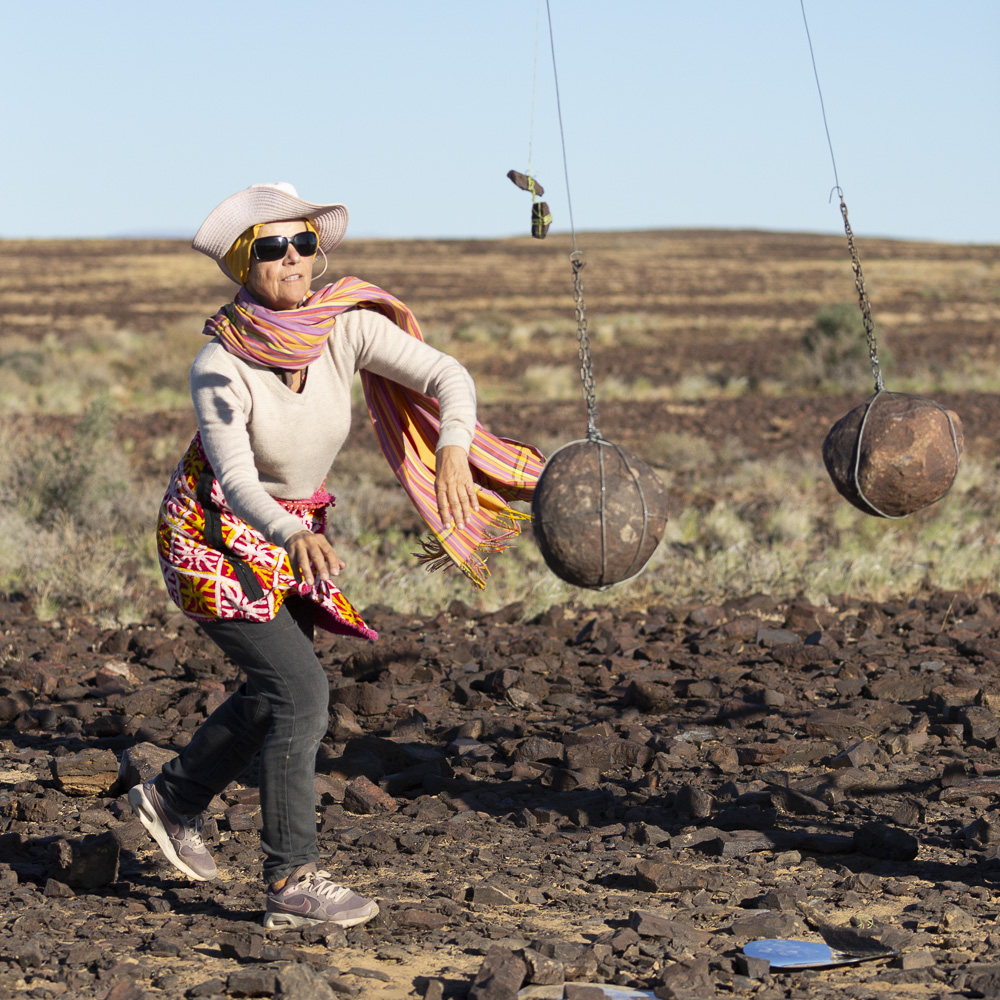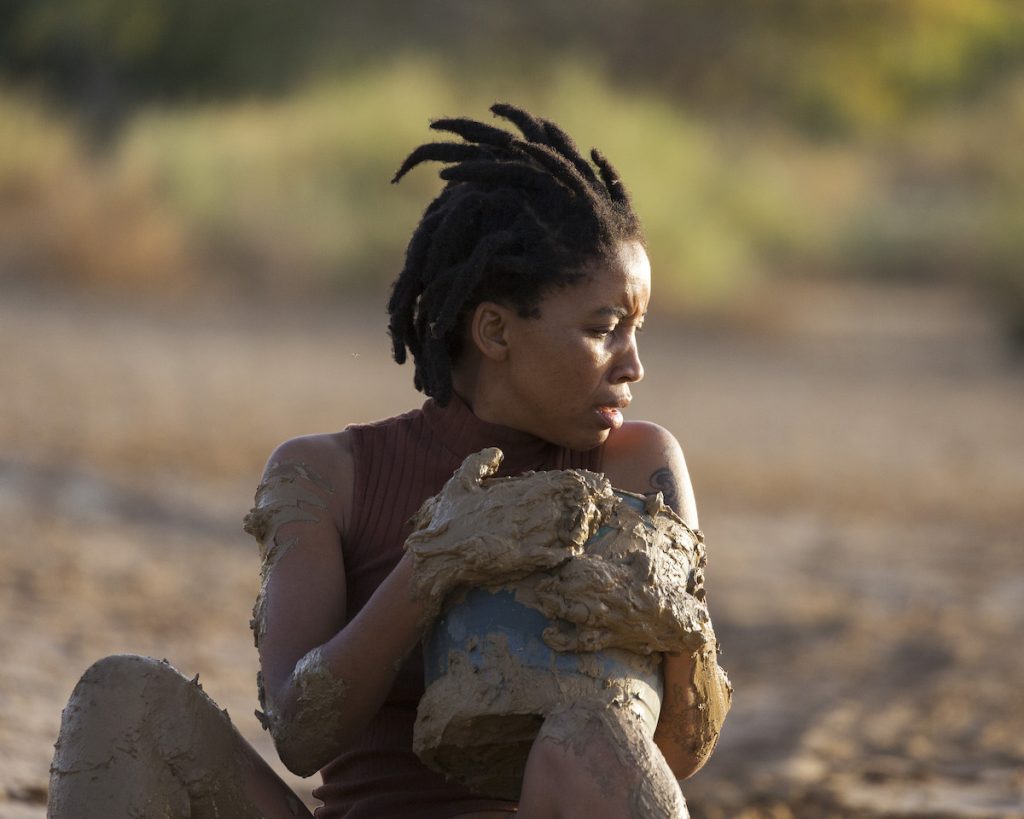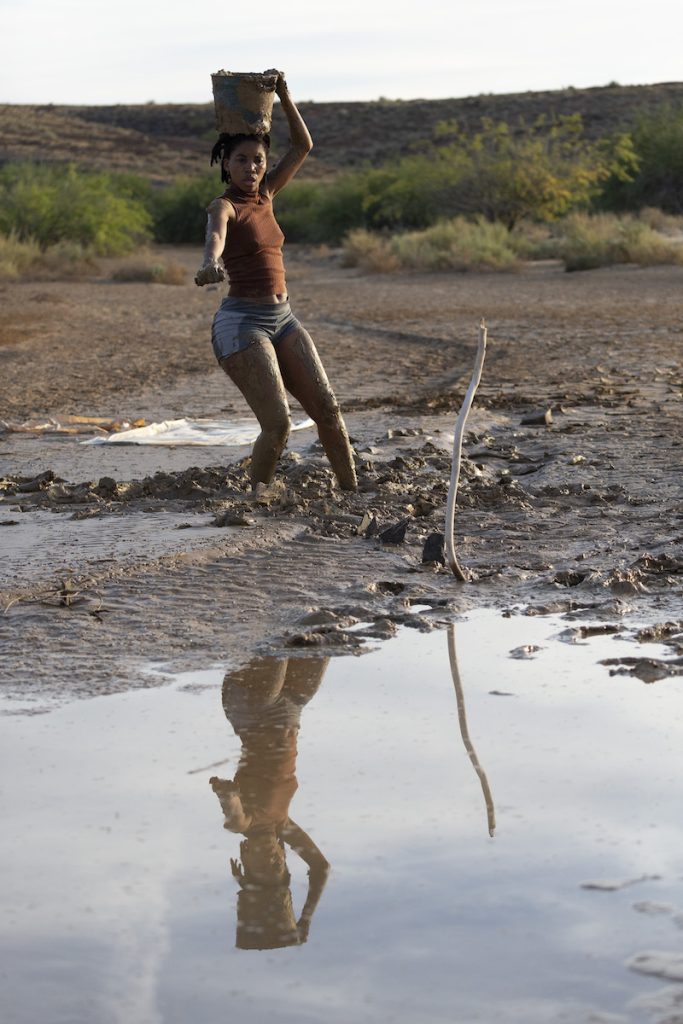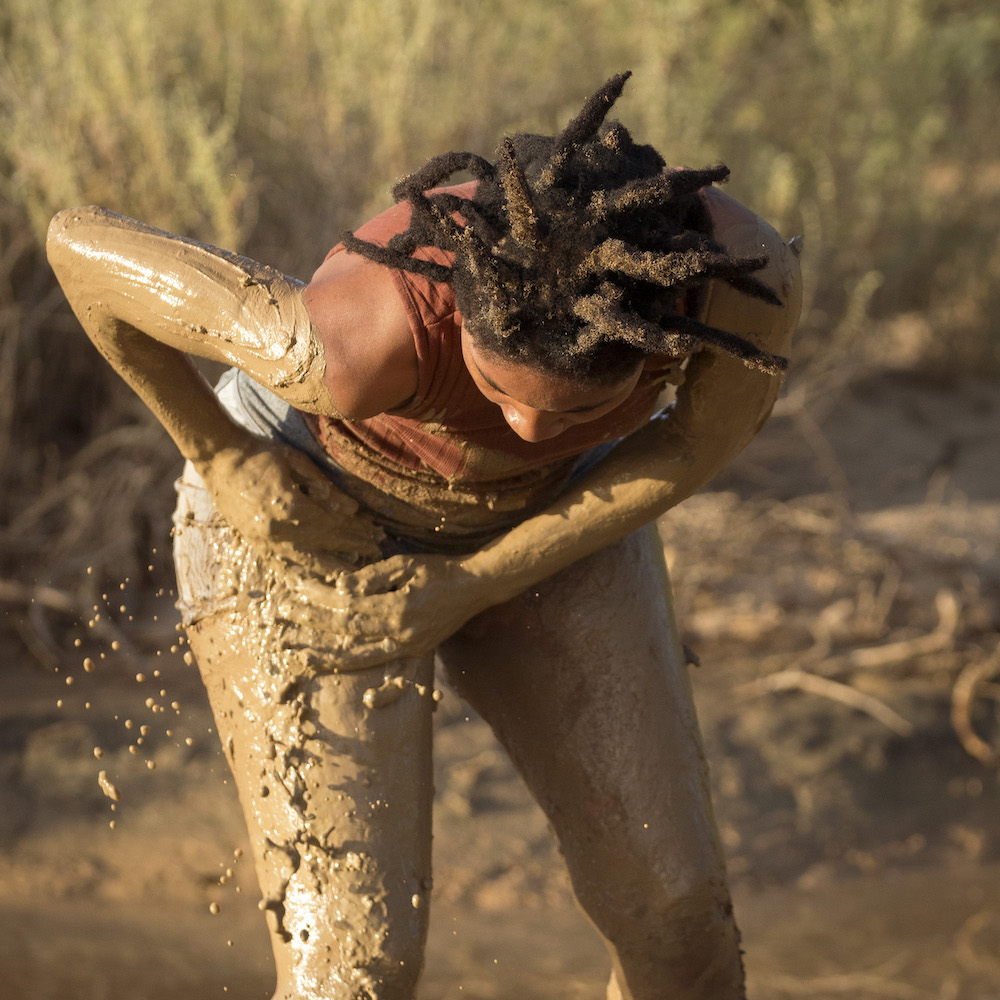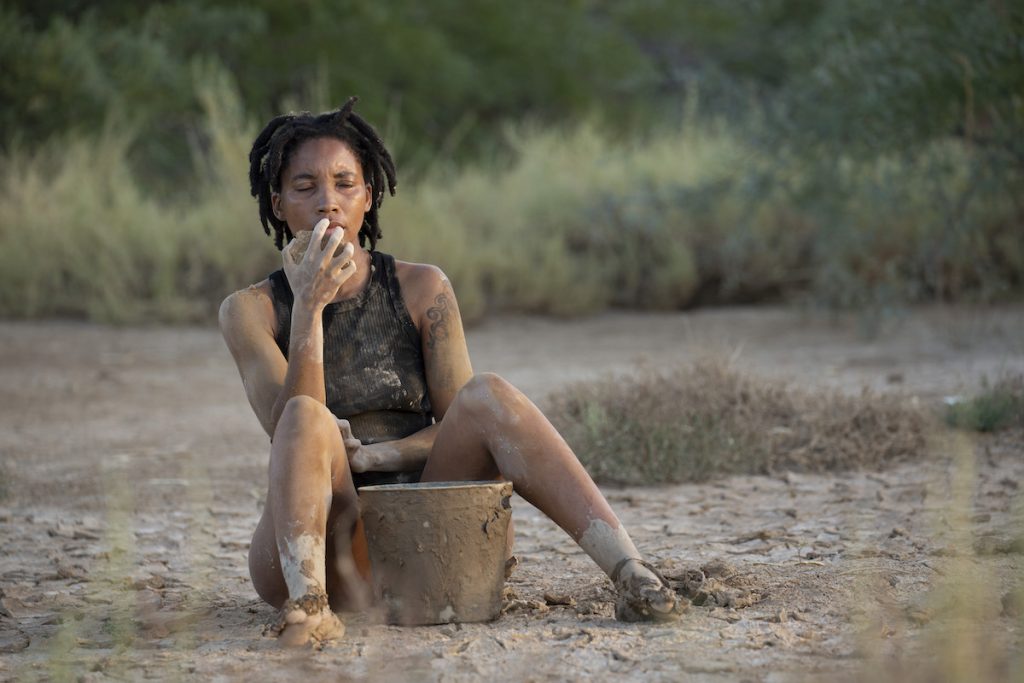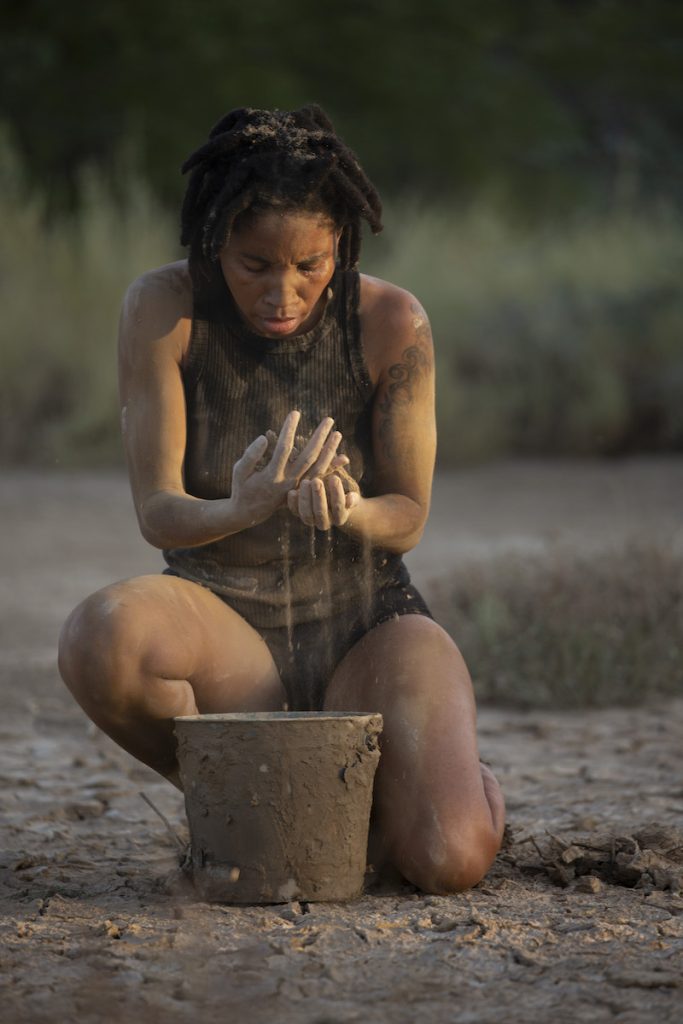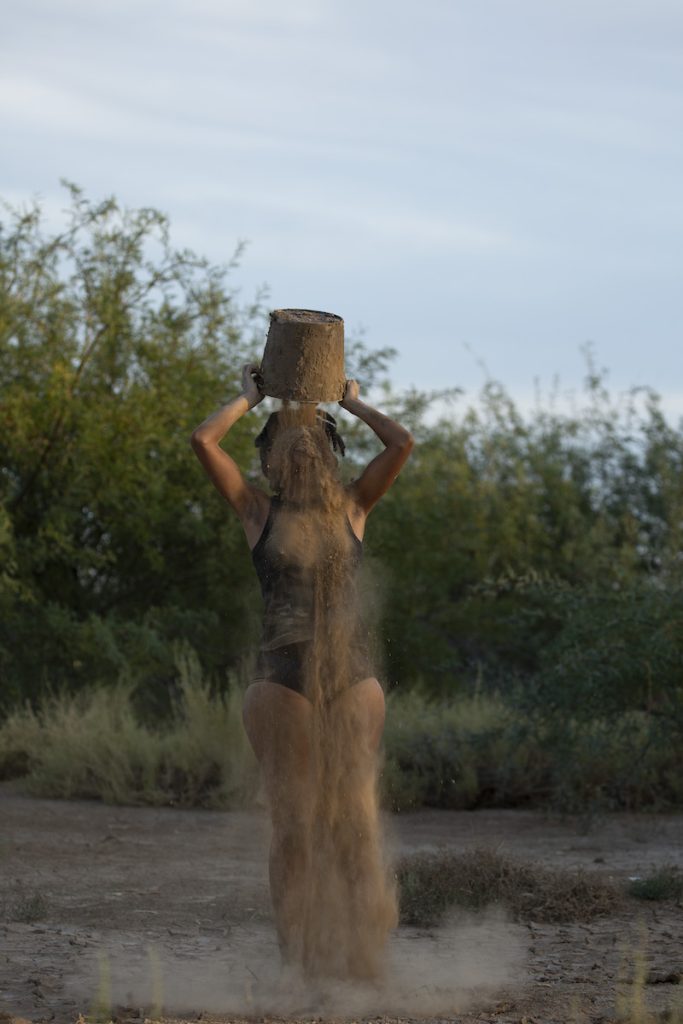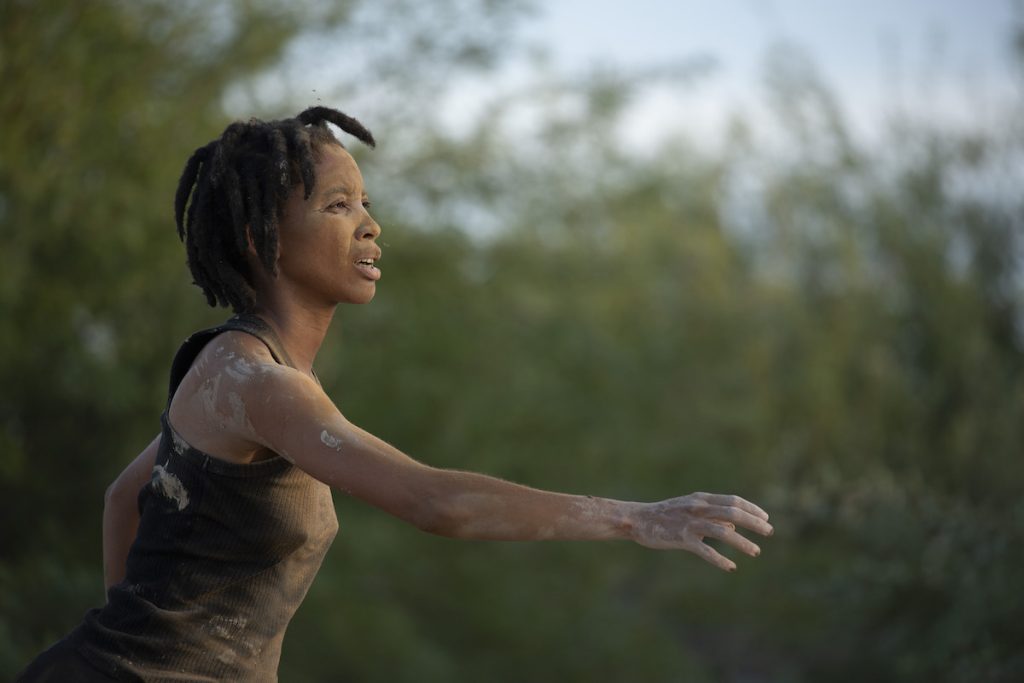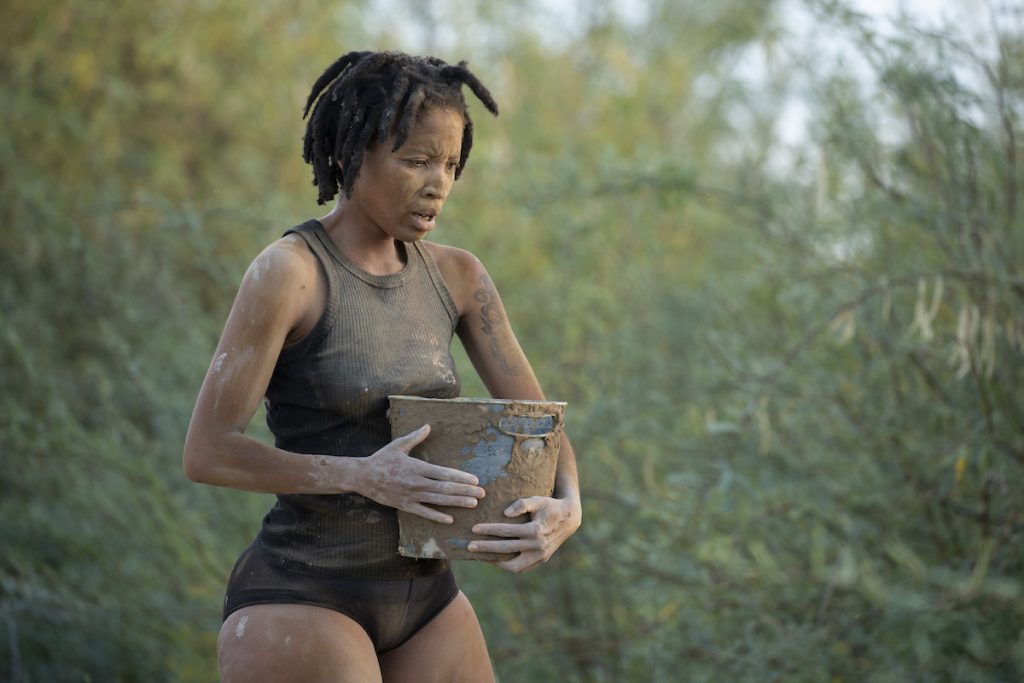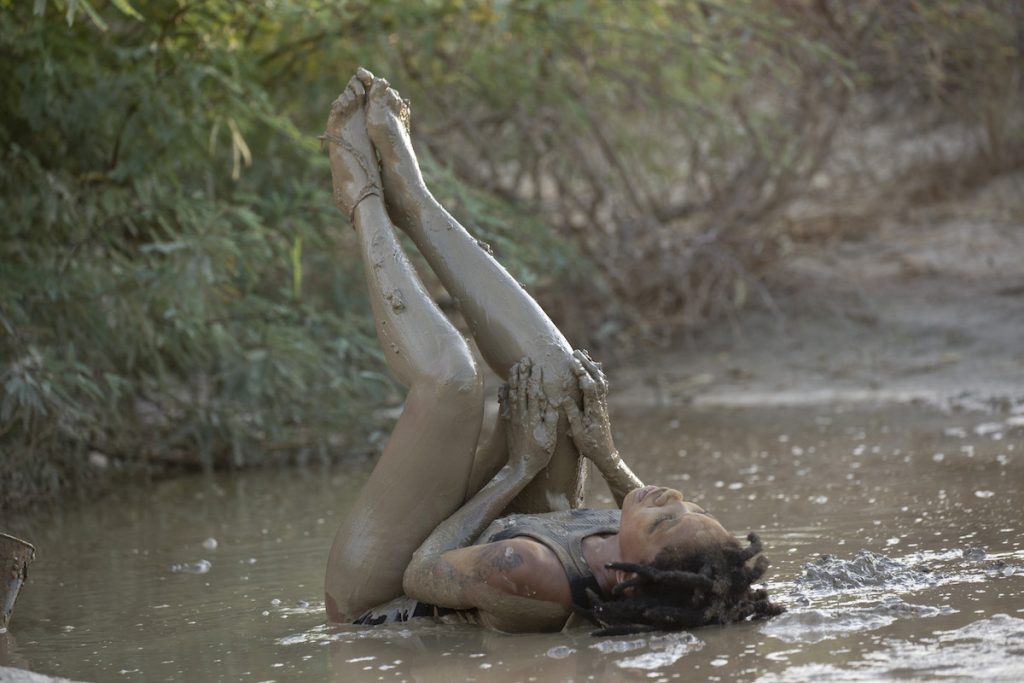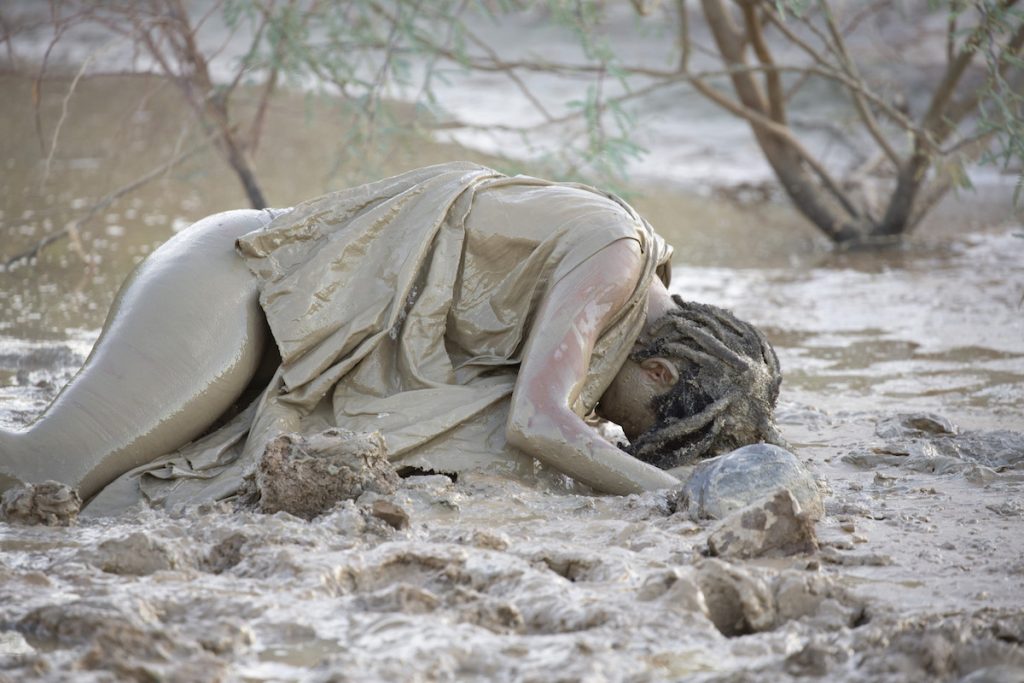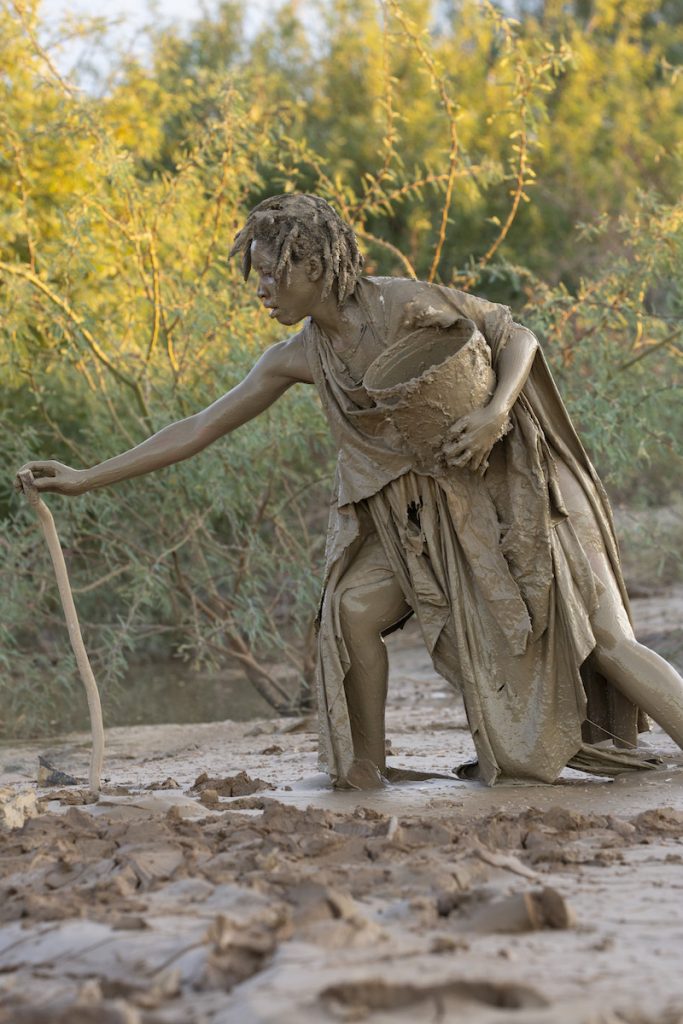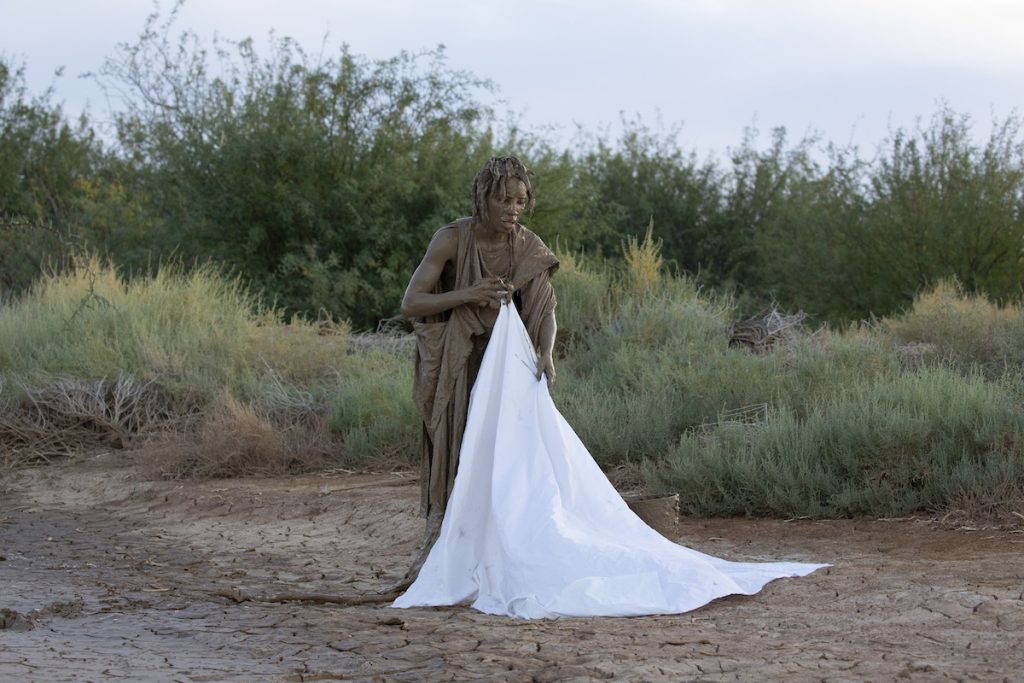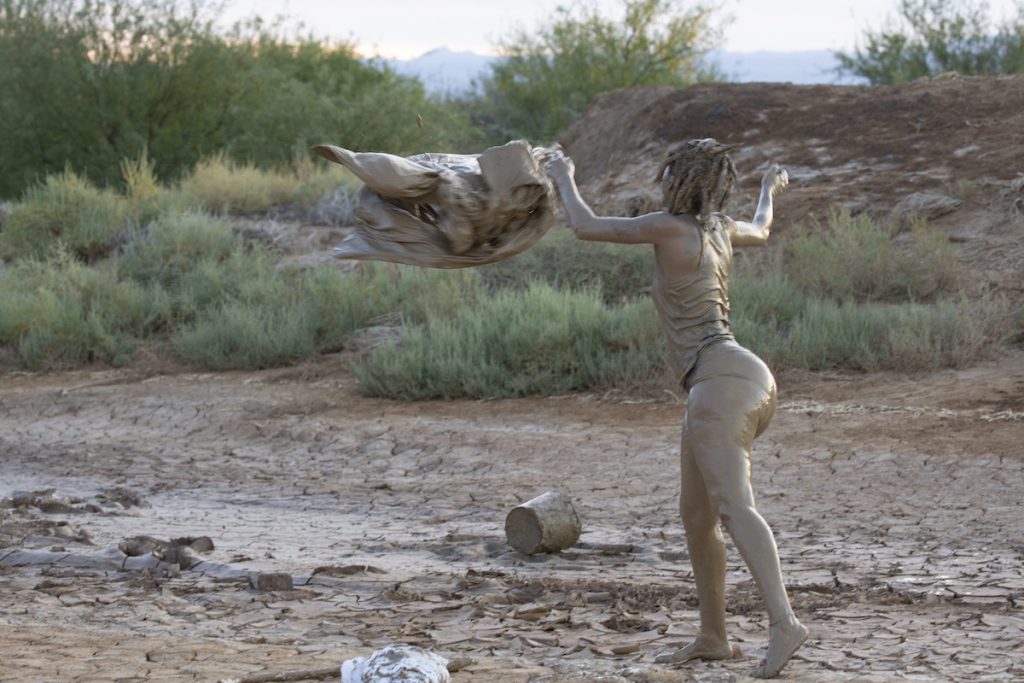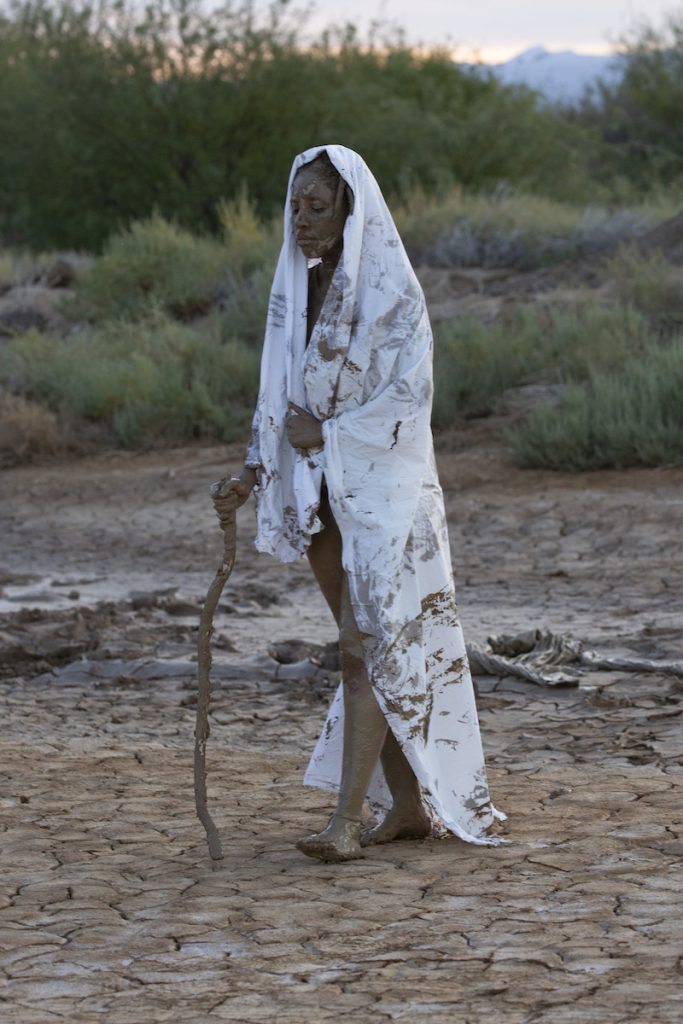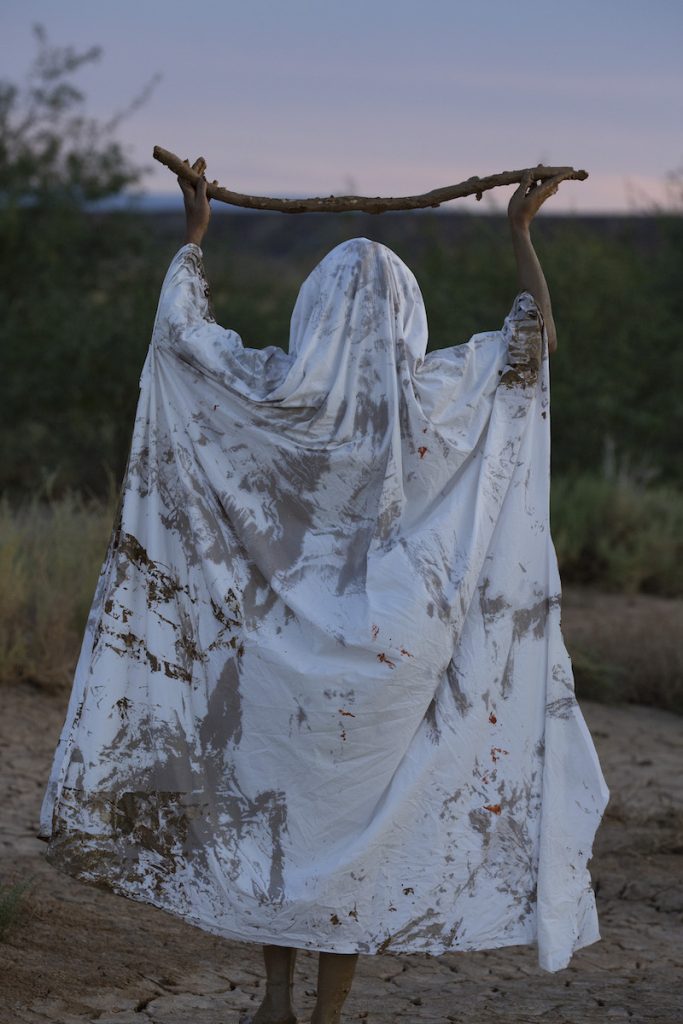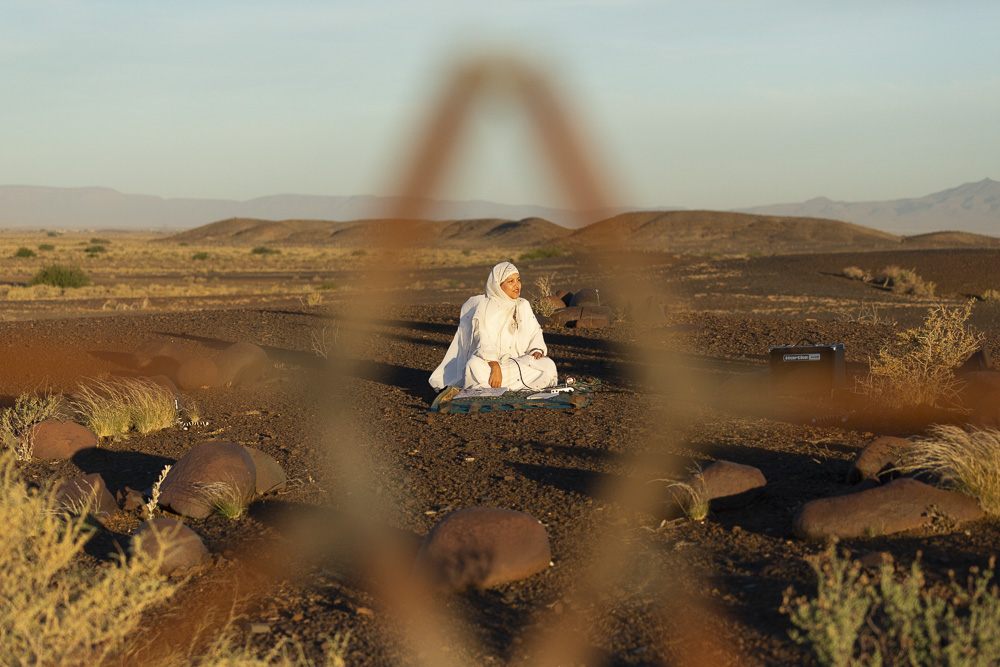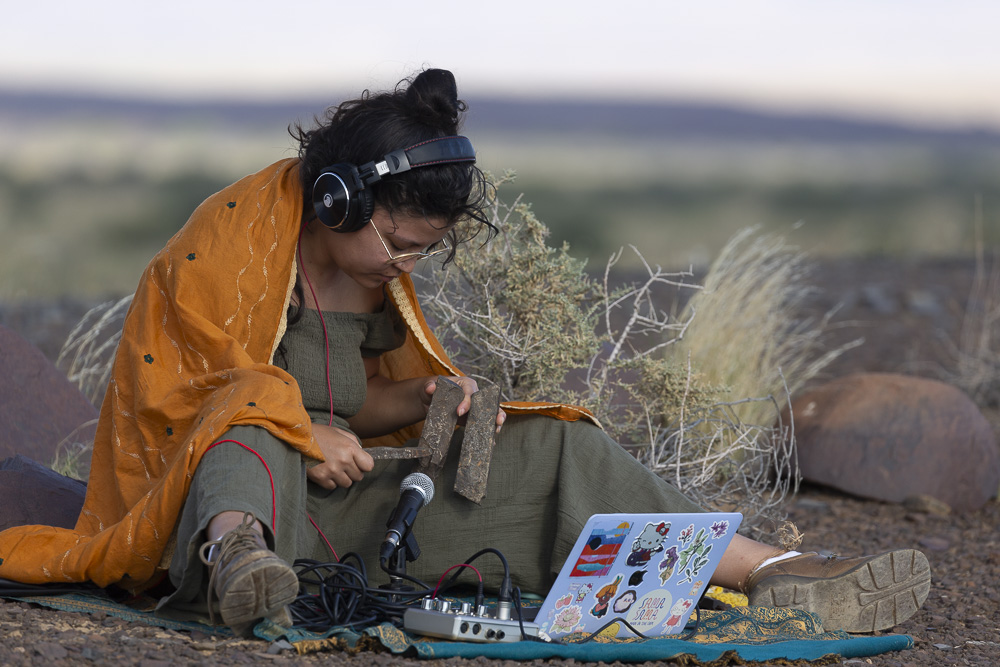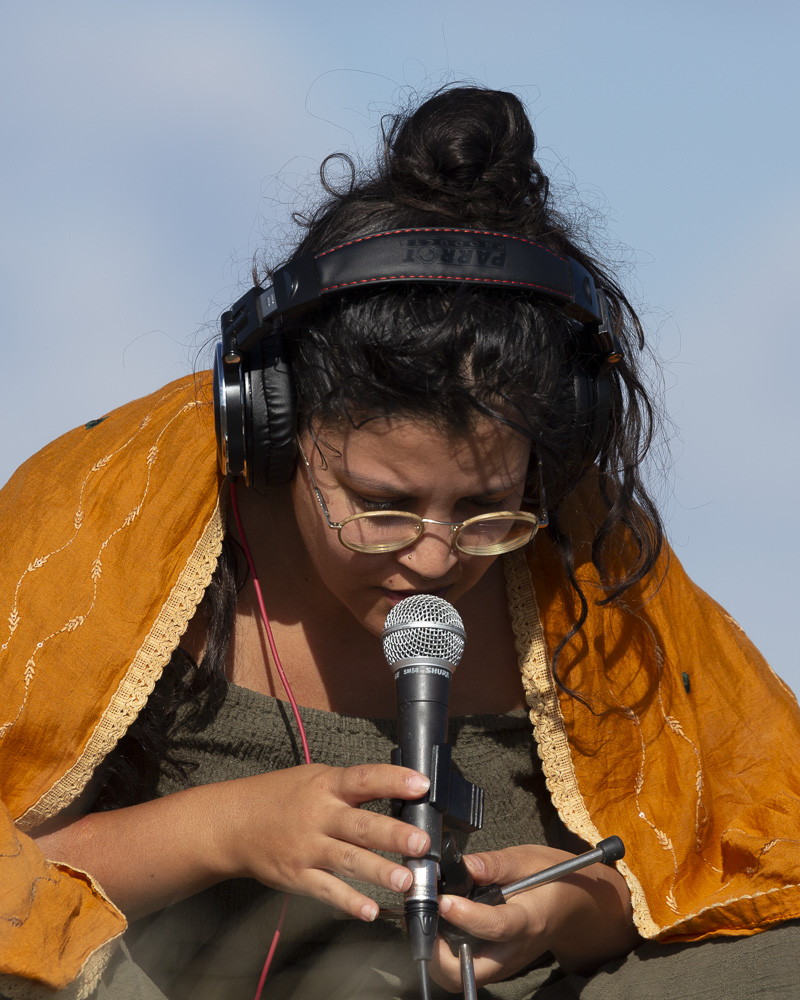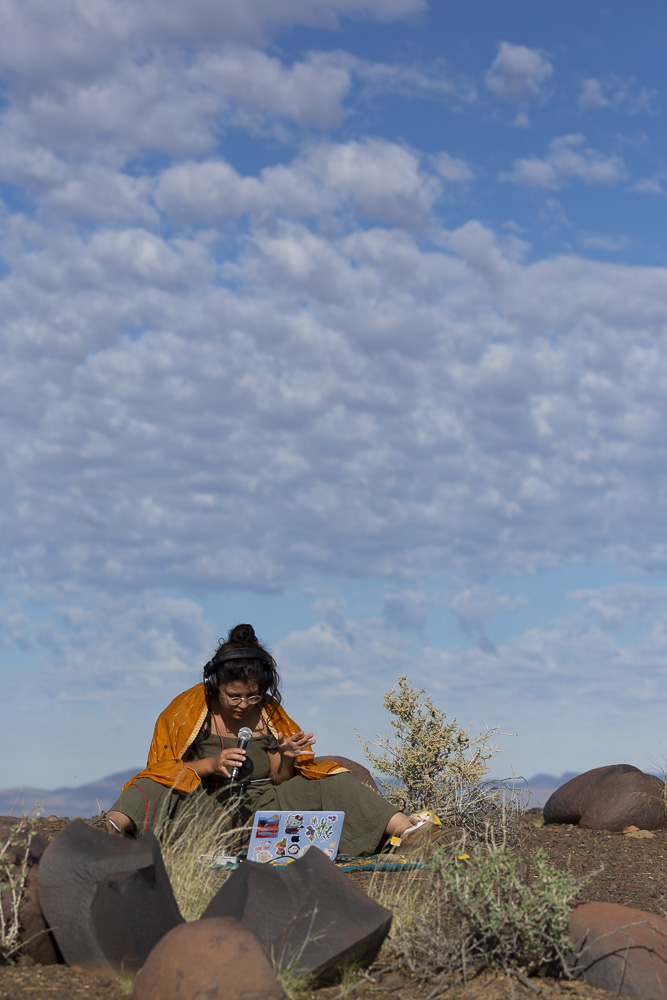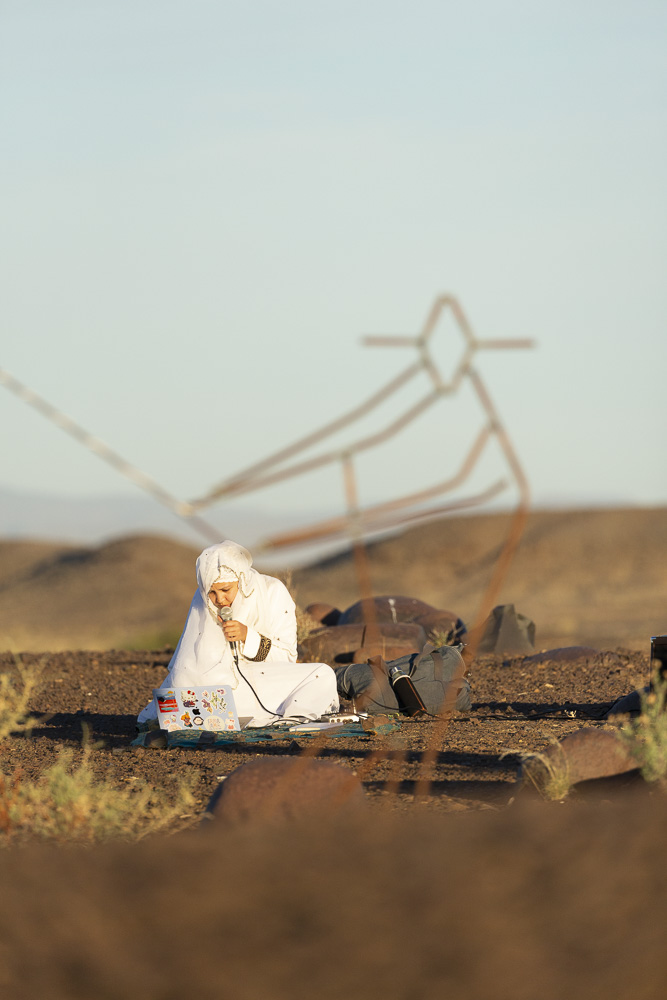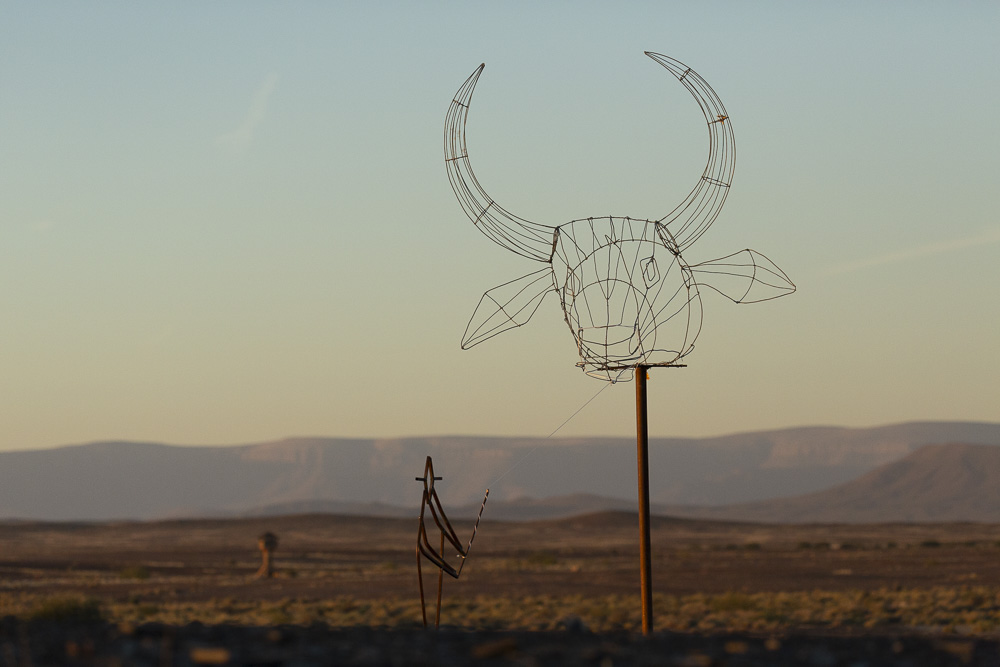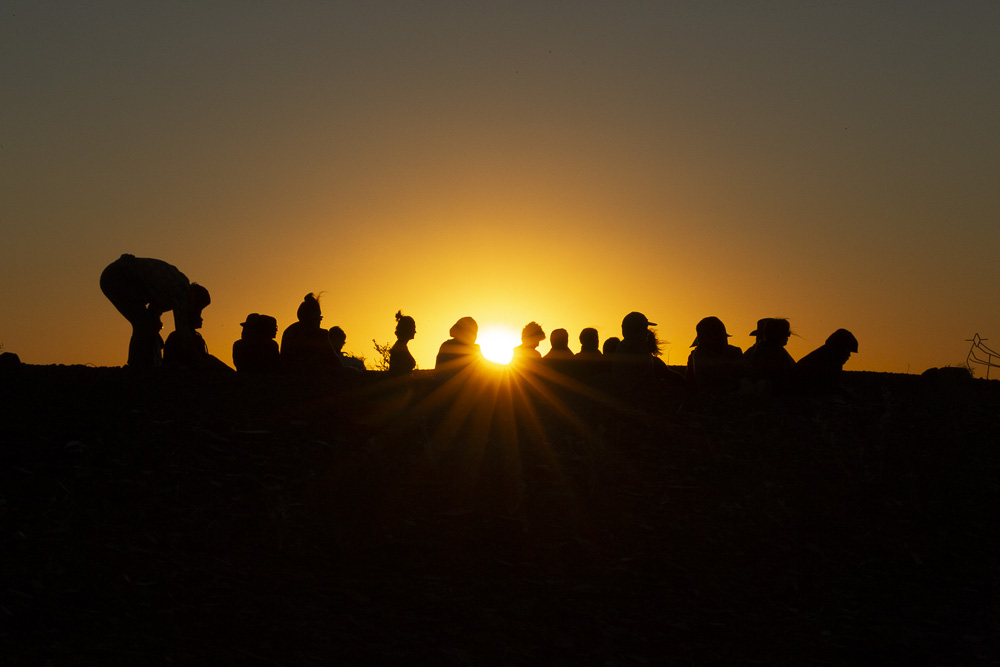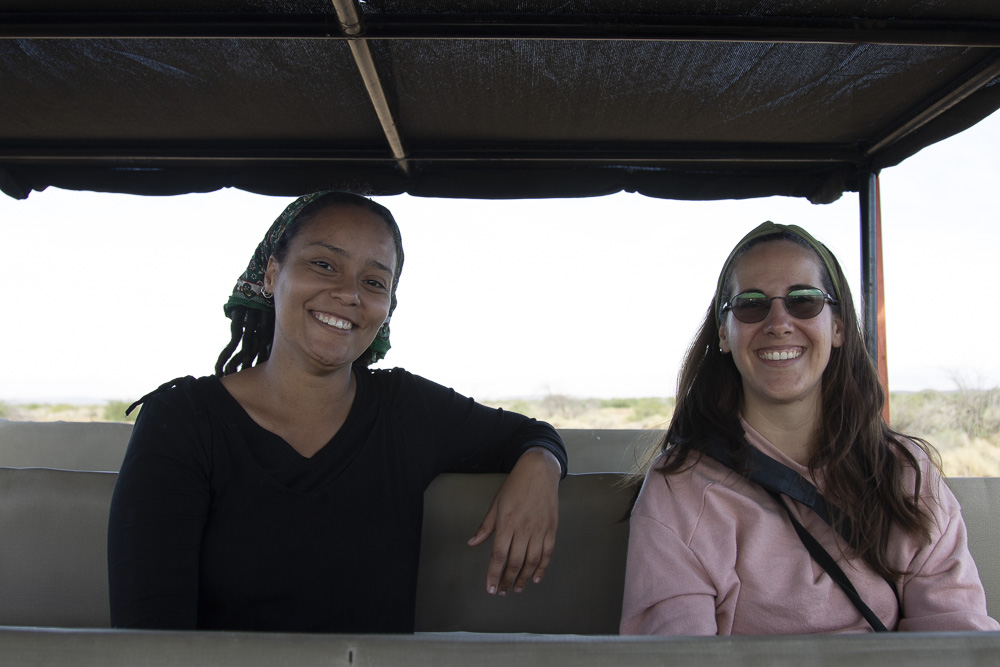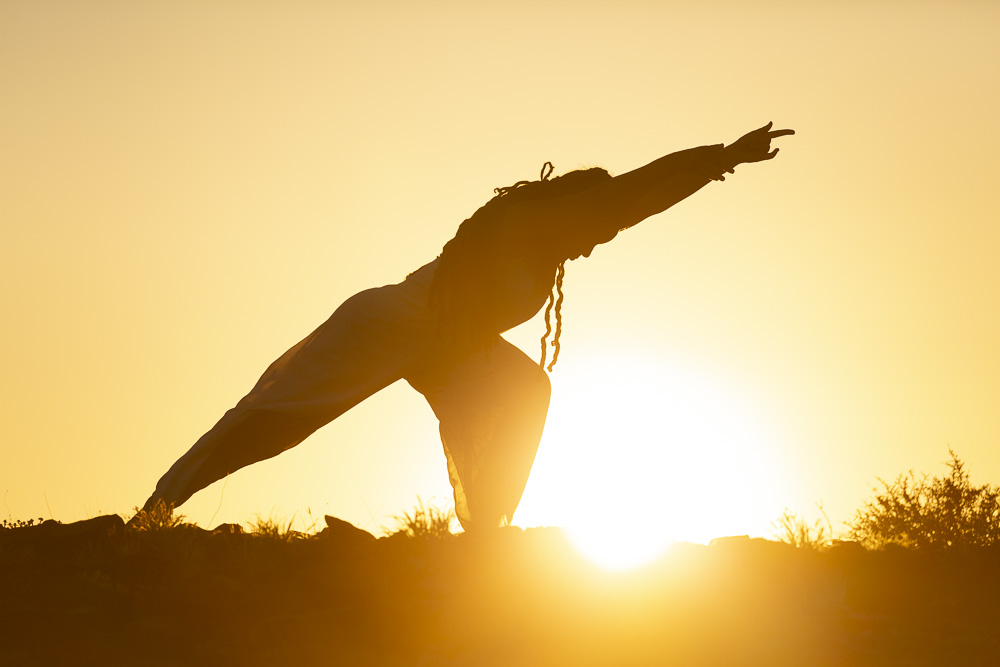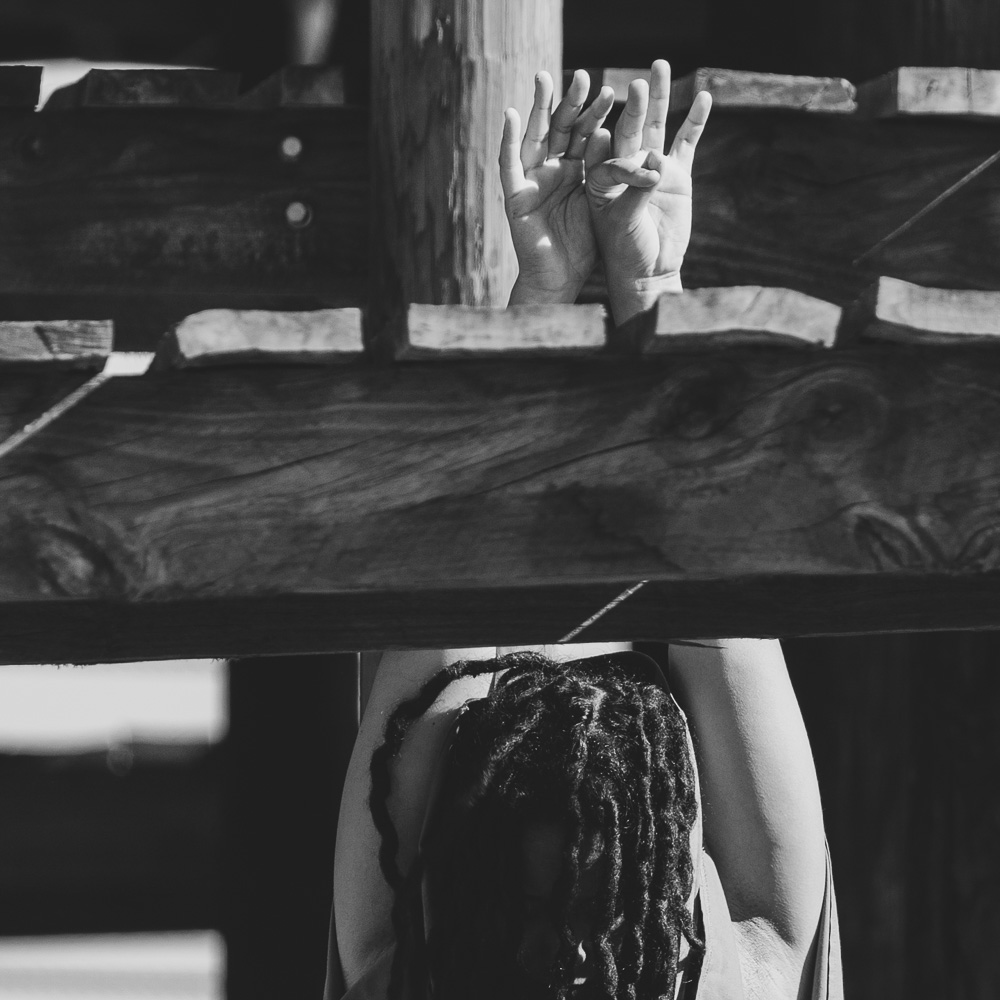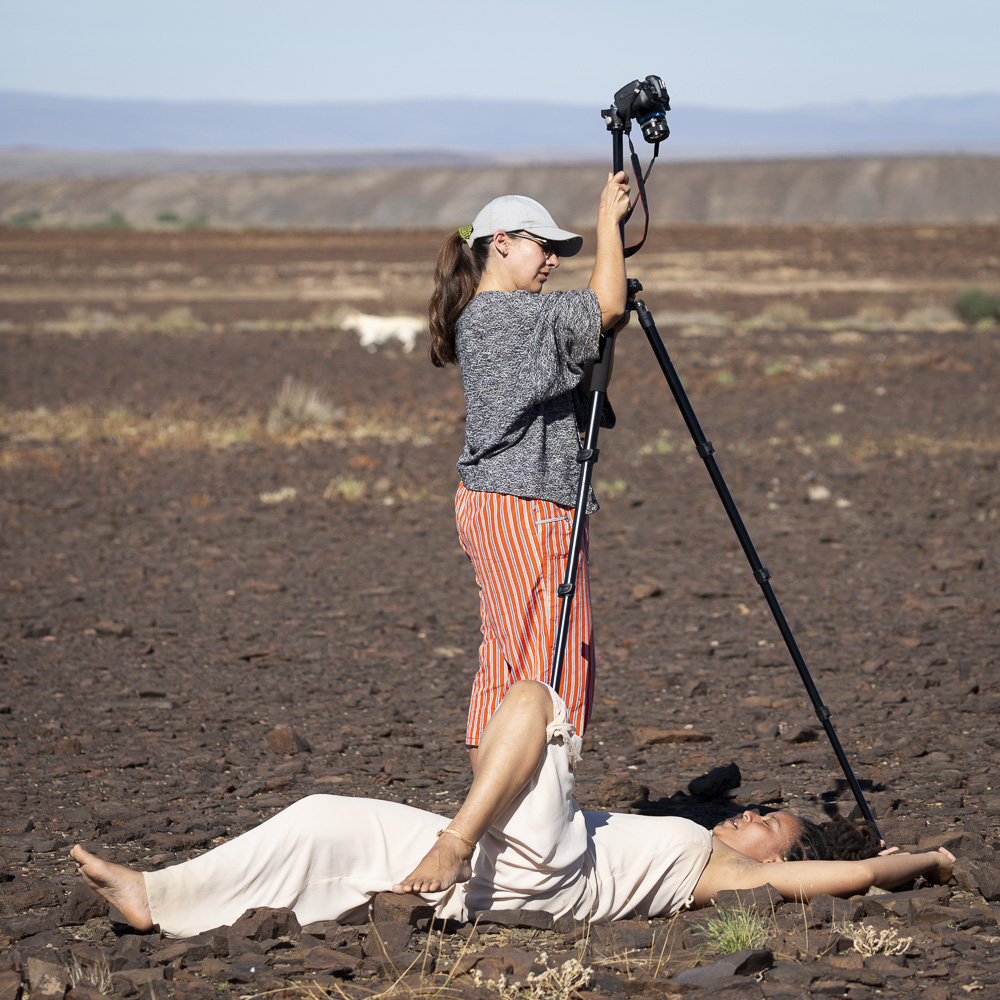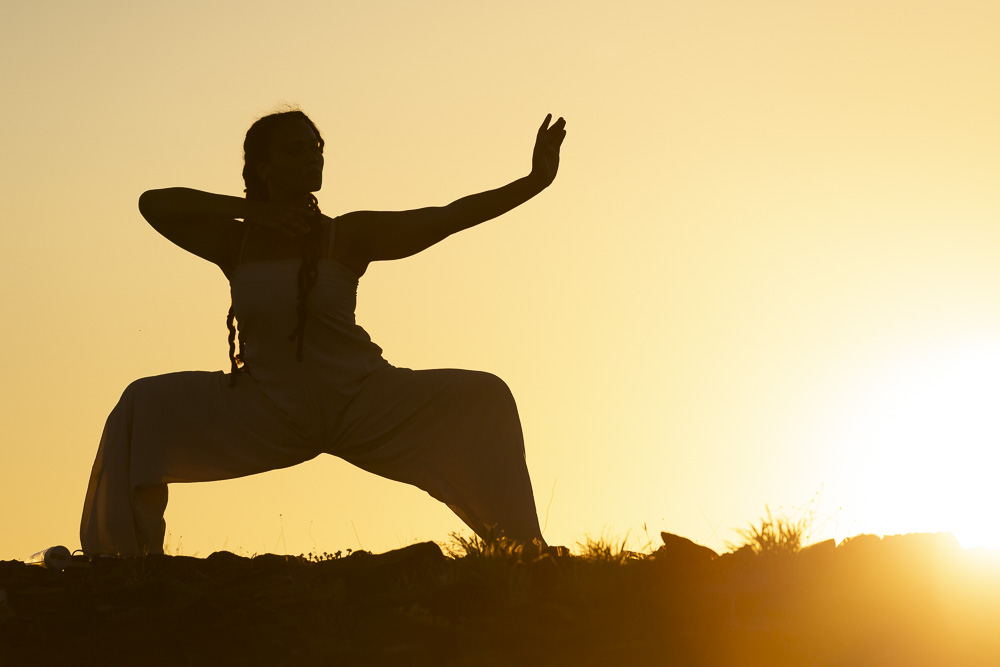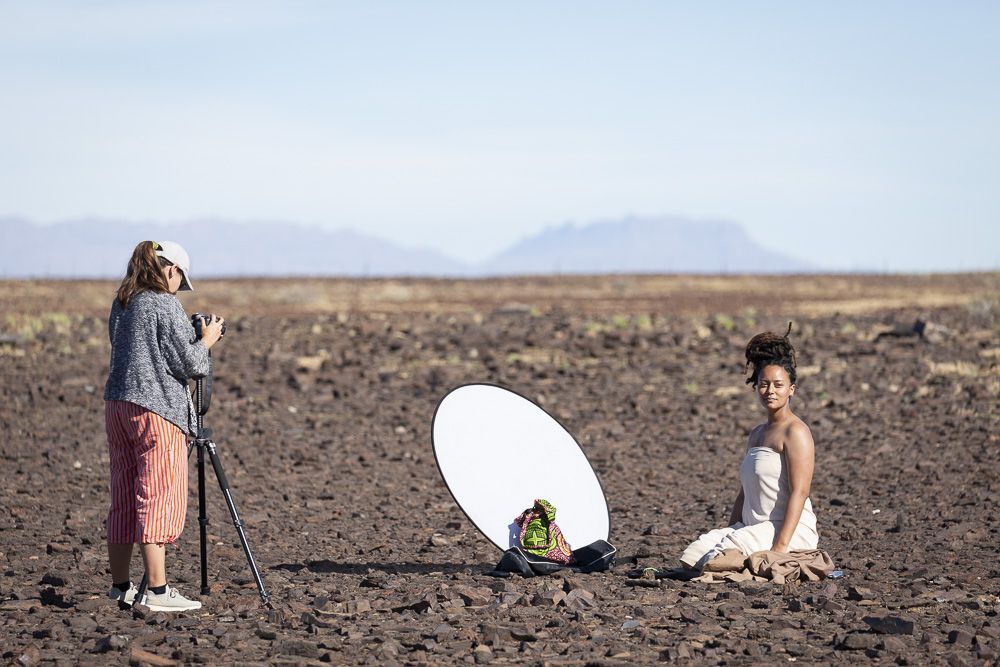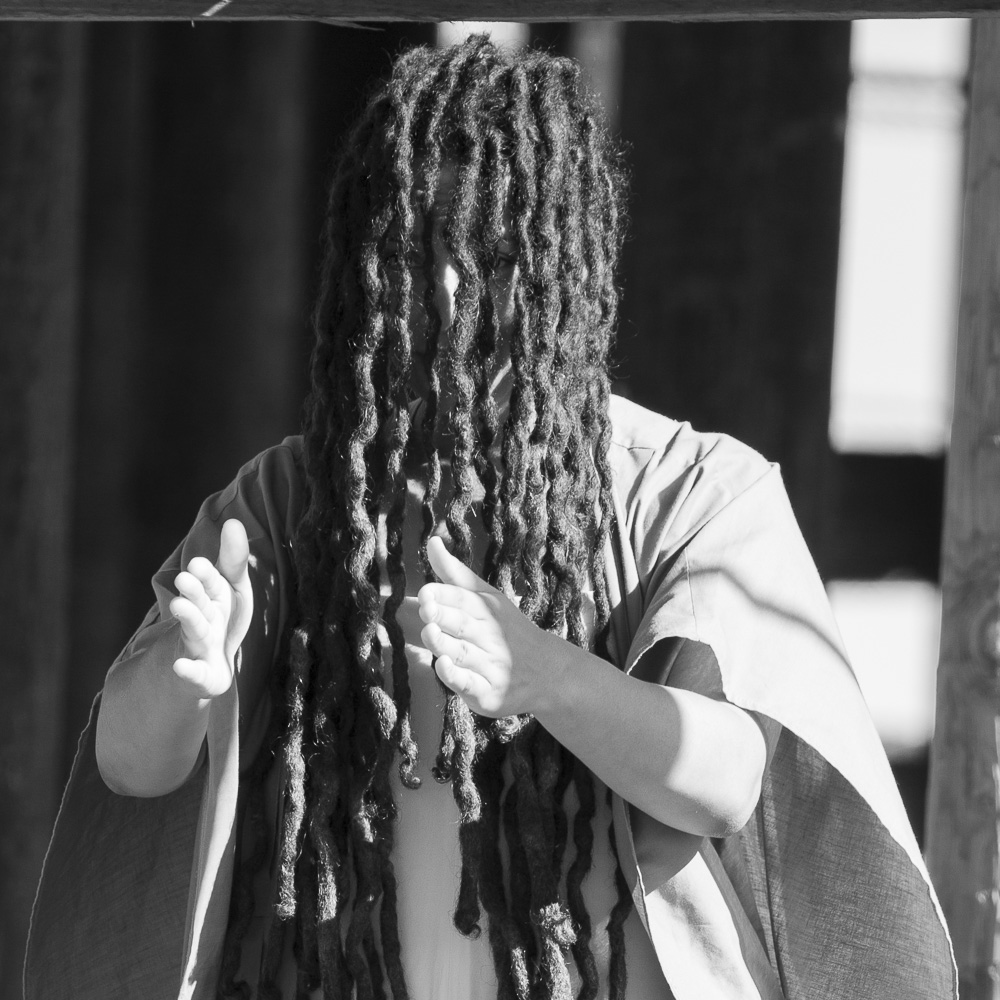
My experience of the Tankwa Artscape 2024 was one full of wounds and healing. Discourse and recourse. A space that allowed for individuality within an ecosystem. Space to create in solitude and and in community. It was a pleasure and privilege to be able to focus so much creativity and expression into one fortnight. Free of the burdens of the every day routine, free to be reckless with creation.
A pain. A pleasure. A baptism.
I went to the Tankwa Artist Residency in search of darkness and silence. I found the darkness between the stars and the silence I experienced as stillness. The hum of an insect, the brushing of the wind against the small plants, the birds’ song in the early morning. It was not quite, but still. In the Tankwa my soul found family. I felt simultaneously, big and small, but mostly connected. To the space, and the people that shared it with me. I will be forever grateful for the generous gift, that was the Tankwa Artist Residency.
Corridor to healing
In togetherness
Exchange of
being held
in vastness of space
Hearts meet in gentleness
enabling creation
into being
Sara Gouveia, Portugal /SA
Tankwa Artscape Residency offered an ideal environment for our artistic journey. Here, we experienced a profound sense of community, something often lacking in our busy city lives. We aimed to let the land tell its own story, capturing its diverse forms and sounds through audiovisual recordings and explorations.
We are grateful to have discovered new collaborators during the residency. Jane Mpholo skillfully embodied the essence of the land, facilitating the unfolding of its story in both our film explorations and live performances. Additionally, Kamil Adam Hassim improvised live music during our unique multidisciplinary live presentation.
“Dreaming and Lucidity” forms a shelter within the landscape. It is an acknowledgement of the circular shelters built by the |Xam people, who for thousands of years prior to colonial intrusion, found home in the Tankwa Karoo.
The work is created from sticks hand-collected from Mesquite trees, growing along the Tankwa River. As with much of my work, this sculpture makes use of materials from non-indigenous trees and in so doing, traces the impact of colonial activity upon South African landscapes.
Before building, I spent one night sleeping alone under the stars, at the site of the sculpture. During this night, I experienced the Tankwa as a space of existence between realms, a place of “dreaming and lucidity” where the spirits of past, present and future can be heard. The vastness of the desert landscape, and the skies above, speak to an absence of life, but also contain the traces of life that, while no longer visible, remains strongly present on the land. This presence and absence, here-and-not-here, is echoed in the semi-circular shapes of the work.
My initial interest in the Tankwa was to further explore my research of the region, with particular focus on how aspects of the sites remoteness could provide a better canvas to sense the world. Due to the lack of signal pollution, natures patterns are able to resonate with minimal human interference, and this in turn allows a human who is sensitive to the space to tune into these different frequencies and patterns. I brought along with me to the residency only critically important tools and items, including a meditation rug, an instrument of my own invention, a Turkish bendir, some ink and brushes, a few books by the French artist Moebius and surrealist filmmaker Jodoroswsky, a camera and a notebook.
In my proposal I described that I believed the Karoo contained portals across space and time which could be activated through sound. This idea links to some imaginings of my own as well as relating to indigenous philosophies regarding the space whereby the universe is imagined through a paradigm of sound and vibration, including a perspicacious lexicon to describe such phenomena. I wanted to gather material to cultivate these ideas, which for me took the form of many explorations of the land and exposure of my body to its elements. This included many long walks, sleeping alone on the dirt beneath a massive thunderstorm, late nights stargazing through a telescope and coalesced into a series of photographs, music, drawings and a short video which included Jonah, a dog belonging to one of the residencies photographers, Josie Borain.
In these activities I was hoping to subvert the practice of land art instead hoping that the land would leave some impression on me. I was curious as to the spaces capacity as a remote location, to impart a greater resolution of patterns onto my consciousness than is available in the urban world. The time spent there I observed the phases of the moon and movement of the sky and the clear Milky Way. These experiences help catalyse prerequisite knowledge and really stretch the imagination as it begins to comprehend that we are on a planet rotating, and that rotation is a visible phenomena but on a timescale difficult to comprehend.
My time at the Tankwa ended up involving many collaborations with other artists. Often I was asked to perform with my instruments as part of others work, and there were also some group activities including cuttlefish bronze castings. I did not imagine that the group of people I shared my time with would leave such a deep impression on me or that all of us would get along so well together. No doubt this was because of the wonderful way the residency was facilitated
The stones at Tankwa are special. Their dark colour covering the landscape makes you feel like you are not on planet earth. Rather, you are in a place of ancient volcanoes, metals, and waterways. The harsh beauty of the land and sky felt unsettling. I felt exposed. The quiet and stillness felt haunted. It makes sense when you reflect on the history of the landscape; the violence that transpired here. This was once a nomadic land where a flow of people engaged and interacted with it, but conflict over domestication left it barren.
I engaged with topics of interaction, conflict, and history. I imagined a language of stones that share stories of violence, but also of intimacy, engagement and time. I explored the nuances of two bodies interacting with each other and with the land. I considered not only the human history in the landscape, but also geological time and the cycles of creation and destruction within the nature and the universe.
I constructed a scaffolding in the landscape to use as a temporary structure to examine the interaction of two stones as I set them into motion. As a final act I invited other residents to interact with the stones. New stones were added, tied in beautiful patterns, swirling in the wind.
I wanted to explore emotions of frustration as we search for a resolution of conflict that constantly feels out of reach, but I also wanted to imagine a renewed relationship with the world based on curiosity, play, joy, and care.
The performance piece “Earth to Essence” draws inspiration from the nomadic life of indigenous people in the Tankwa Karoo, reflecting their perpetual quest for sustenance and belonging. Through the journey of a woman navigating from dry lands to a muddy riverbank, the narrative embodies the universal pursuit of self-discovery and resilience.
Along her path, she encounters obstacles symbolized by rocks and a buried dress, initially perceived as treasures but later realized to be hindrances to her growth. It’s when she discovers the simple stick, reminiscent of a personal experience during the “Area 51” walk, that she finds inner strength and resolve to persevere.
The stick becomes a powerful metaphor for resilience, enabling her to overcome challenges with newfound ease and grace. Just as the nomadic people of the Tankwa endure hardships in their search for a better life, the woman’s journey mirrors the universal truth that growth often emerges from adversity.
“Earth to Essence” serves as a poignant reminder that true treasure lies not in material possessions but in the resilience and inner strength cultivated through life’s challenges.
Thikr (remembrance): “they were those who rode the rain”
My offering was a remembrance of the |xam people who were mercilessly killed in the genocide in the Karoo. I wanted my offering to resemble a thikr:
A space where we can ask forgiveness, pray for the dead and remember them. Remember their spiritual teachers, leaders and knowledge keepers. Remember that the string can never be broken, and that the people are still here, living. They were not erased, nor have they disappeared.
The symbol of the water bull and the rainmaker, crafted by Kim Goodwin, specifically for this offering, stood as reminders of the spiritual knowledge keepers, and the dead.
The dead were those who rode the rain.
Our experience in the artistic residency in the Tankwa Karoo Desert was a unique opportunity to delve into creative practice. Engaging with the vast desert landscape, we explored our own presence within it, diving deep into questions of identity, history, and our relationship with nature. This residency facilitated a collaborative process between performance and filmmaking, allowing us to engage both mediums in a profound exploration. We collaborated on a film project to examine the human (dis)connection to land. Through sensorial images of the body in both stillness and movement, we explored two distinct modes of relating: one that emphasizes disconnection and another that moves towards connection. Both states of motion reflect a longing and reaching toward connection. In the production of our film, we aim to portray contrasting images, creating a dialogue that underscores the movements either towards or away from connection.
Adriana felt drawn to offer something to the desert and the community that was there with us, in real time. Most of Adriana’s practice as a performance artist involves deep listening to the land, and attuning herself to the rhythms, symbols, and beings of that ecology. She was inspired by the movement of the wind, and the appearance of an Oryx on our silent walk, to create the performance and resonate our bodies back to the land in gratitude. So Adriana’s performance offering was almost an extension of the film, in terms of honouring a found connection to the land through our filmmaking process and our time spent there in community with people and the desert.
Overview
Documentation Tankwa Artscape 2024
Photographers:
Bronwen Trupp
Mona de Villiers
Thomas Barry
and the artists
Video:
Josie Borain
Sara Gouveia
Inka Kendzia (drone)
Editors:
Josie Borain
Bronwen Trupp

